Teaching



Enrolling in a Trades Academy program with UCOL Te Pūkenga while still in school provides a range of benefits for students.
High school students can gain practical skills: Trades Academy programs provide hands-on learning opportunities, allowing students to develop practical skills in a trade or industry. This can help students prepare for a career in that field.
Students can earn credits towards NCEA: Trades Academy courses are recognized by the New Zealand Qualifications Authority (NZQA), and students can earn credits towards their National Certificate of Educational Achievement (NCEA).

They can gain industry experience: Trades Academy programs often involve work experience placements, providing students with the opportunity to gain valuable industry experience and make connections with potential employers.
While still enrolled in school students can start to explore their career options: Trades Academy programs can help students explore different career options in trades and industries they may not have considered before, helping them make informed decisions about their future.
UCOL Te Pūkenga U-Skills is a great option for Trades Academy offering a wide range of courses in various trades and industries, including construction, automotive, hospitality, hair and beauty, and more. With experienced tutors who are industry experts, U-Skills ensures that students receive high-quality training and support.
At UCOL’s modern facilities students can study in an environment that is equipped with the latest tools and technology, providing students with a realistic industry experience.
Study is coupled with real-life work experience opportunities via UCOL’s strong relationships with local employers, providing students with valuable work experience opportunities that can help students stand out in the job market.
U-Skills courses can lead to further study options at UCOL Te Pūkenga, including apprenticeships and degree programs, providing students with a clear pathway to their chosen career, already being on campus and familiar with the learning environment makes the pathways to further study smooth and an easy transition to tertiary education.
Get in touch today with UCOL Te Pūkenga to find out more.

The Academy 2 Day option gives you the chance to work towards or gain an industry related tertiary qualification while also working towards NCEA Level 2/3 at school.
Send your completed application form to: U-Skills Enrolment: UCOL Private Bag 11022 Palmerston North 4442
or
Email to: uskillsenrol@ucol.ac.nz
Please complete the following steps:
• Complete the U-Skills Application form ensuring you and your parent/guardian sign the last page.
• You must also include a verified copy of your birth certificate.
• Ask your school to endorse your application.
This issue of Principal’s Today delves into the dangers lurking online for students of any age, how schools can deliver the tools students need to navigate the adult world, and ways to make the ANZH curriculum come to life.

We look at issues such as sourcing staff from offshore, the MoE’s move to improve school attendance, strategies for managing teenage friendships at school, and supporting learners with higher needs.


There’s also information on integrating creativity into the classroom, the new physical restraints rules, and what to consider when it comes to uniforms, plus much more. Enjoy!
MAGAZINES TODAY OVERVIEW
Academy Group has grown to be one of New Zealand’s largest privately owned publishing houses, with carefully targeted publications offering in-depth analysis of current issues, exciting profiles, interesting people, and details of the latest projects and products making news.
12
14
20 Rules of engagement New physical restraints rules outlined
24 Art in the classroom Covering walls with inspiration
25
HEAD OFFICE AUCKLAND OFFICE
38 Lowe St Addington Christchurch 8011
(03) 961 5050 admin@academygroup.co.nz www.principalstoday.co.nz MAGAZINES TODAY MANAGEMENT


Gary Collins MANAGING DIRECTOR
21
6
66 Getting ready for winter Simple steps to energy efficiency

FOR ALL ADVERTISING ENQUIRERS Contact the sales team on (03) 961 5083 | sales@academygroup.co.nz


This publication is provided on the basis that AMark Publishing NZ Ltd is not responsible for the results of any actions taken on the basis of information in these articles, nor for any error or omission from these articles and that the firm is not hereby engaged in rendering advice or services. AMark Publishing NZ Ltd expressly disclaim all and any liability and responsibility to any person in respect of anything and of the consequences of anything done, or omitted to be done, by any such a person in reliance, whether wholly or partially upon the whole or any part of the contents of this publication. Advertising feature articles are classified as advertising content and as such, information contained in them is subject to the Advertising Standards Authority Codes of Practice. Contents Copyright 2013 by AMark Publishing NZ Ltd. All rights reserved. No article or advertisement may be reproduced without written permission.
will be notified by email/phone. The judges’ decision is final, no correspondence will be entered into. No responsibility is accepted for late, lost or misdirected mail.
Prizes are not transferable or redeemable for cash. Academy Group, the promoter and agencies associated with any promotion in this publication shall not be liable for any loss or damage whatsoever suffered (including but not limited to direct or consequential loss) or personal injury suffered or sustained, during the course of prize winning travel or in connection with any other prizes won. Academy Group, the promoter and agencies associated with any promotion in this publication accept no responsibility for health, luggage, insurances, travel, personal expenses and transfers other than specified. Entries remain the property of Academy Group, the promoter and agencies associated with any promotion in this publication and cannot be returned. Academy Group, the promoter and agencies associated with any promotion in this publication reserves the right to photograph and publish winners. Entries may be used for further marketing purposes by Academy Group, the promoter and agencies associated with any promotion in this publication but are not made available to any third party.


Mike Turner is the Duntroon School principal/tumuaki in the Waitaki District of Aotearoa’s South Island. He has been the principal at Duntroon School since September 2019.

This is his first role as a principal, prior to that he had been a deputy principal for several years. Currently, the school roll has 74 primary school students, but this will most likely jump to about 85 by July 2023.
The school has a common goal of being the best they can and Mike is determined to make this happen!
Why do you enjoy being a principal at this school?
It’s all about the people. This school has a great culture and we continue to make that a priority. It is a special place to work. The staff are committed to achieving great outcomes for all of our tamariki and we have a very supportive family network who we work closely with to

respect, cooperation and inclusion, perseverance, and honesty. Why are these values important to Duntroon School? Our values are what we ‘hang our hat on’. Our values relate well to relationships. We teach our tamariki to have positive relationships with all students and staff. They are here to take care of themselves and others. These values are modelled by our team also. We use them in our teaching and revisit them with our students often. They can articulate why they are important and why we live by them here at Duntroon. Our values relate
well to our Tikanga values of mana, whanaungatanga, rangatiratanga, and kaitiakitanga.
Your school stands for being the BEST it can be: ‘Believing in yourself, Empowered to learn, Socially responsible, and Thinkers and learners for life’. How do these goals motivate your primary school students to do their best at school?
This sits alongside our core values and is another way we can motivate our students in their learning. We want to instill in our students that if they try hard, they can have success. We always encourage them to try new things and help build their confidence to do so. We want to be great role models and active participants in their learning. These are the messages that we give our students all the time.
What do you think your students enjoy most about Duntroon School and why?
A big part would go back to culture. That it is like a family. We all know each other and each other’s families and we are all looking out for each other. A student made a comment to me last year who had arrived from another school. He said, “At my last school I had about 10 friends. At Duntroon School I have 85 friends”.
The roll at the time was 85. That made me feel like we have the culture right for our tamariki. They feel supported in their learning. They know that our staff wants them to have success and that they care about their learning, socialisation and are there for them in a pastoral capacity too.
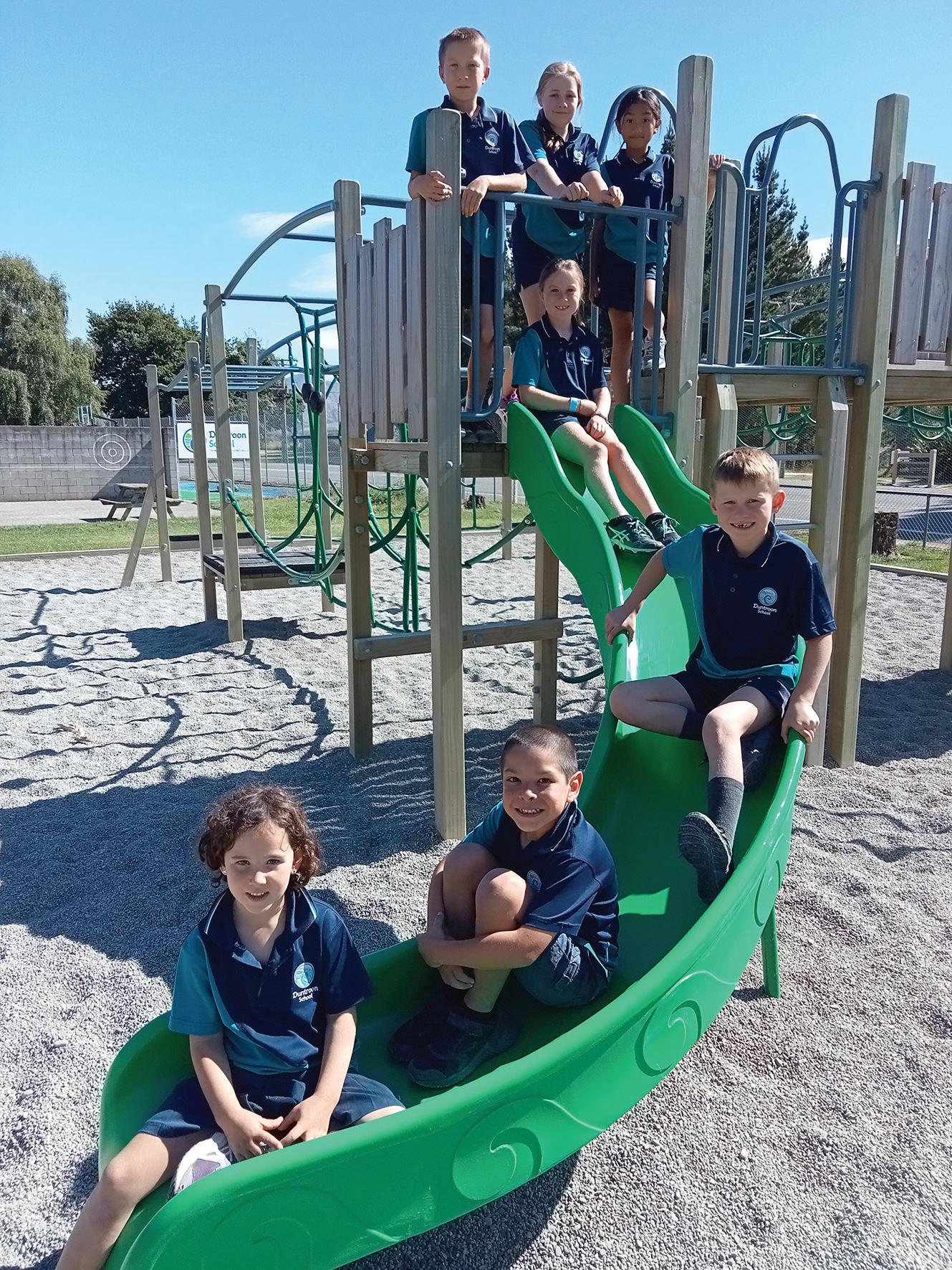
"It’s all about the people. This school has a great culture and we continue to make that a priority."Duntroon School students on their school playground. Duntroon School students enjoying themselves outdoors.

We are so devoted to ensuring supreme quality and safety that we have spent 15 years perfecting our grinder that produces our wood chip so that it removes all traces of nails, staples and hazardous metals/materials, and has no “sharp edges”. Since safety is paramountwe implement an extensive testing regime every two to three years, evaluating the impact efficiency of the wood chips being produced.

EXTENSIVE RESEARCH
2 years of product development before launch
RIGOROUS TESTING
3 years testing of Cushionfall by 3 councils in 5 playgrounds before council approval

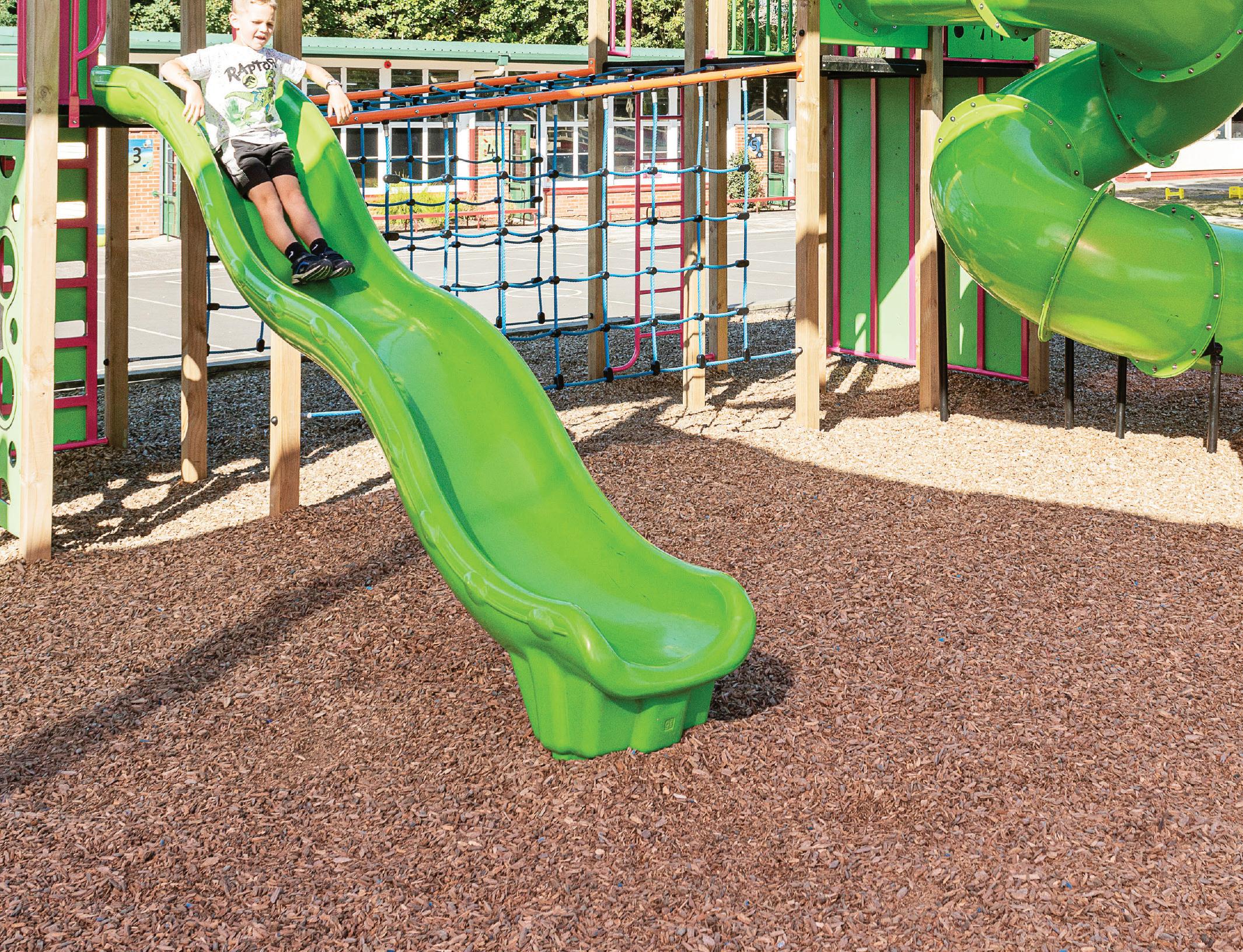
ONGOING QUALITY TESTING
More than 50 tests in the last 10 years alone!
HIGHEST IMPACT TESTS
In Australasia achieved
PREFERRED CHOICE

Councils, the Ministry of Education, Kindergarten Associations, Play Centre Associations and Preschool Centres

On November 2, 2022, The Ministry of Education (MOE) launched a new website to support overseas teachers interested in teaching in New Zealand. The site outlines teaching expectations in New Zealand and processes required to teach in Aotearoa.
The new website mentions moving to a new country is exciting and daunting, but can be a life-changing experience.
There is clear emphasis on the importance and strong focus of indigenous people (Māori), as well as our Pacific and Asian whānau in Aotearoa.
They say teachers are in a trusted position and teaching in Aotearoa New Zealand is a unique experience. “New Zealand is home to many culturesPacific, Asian, European and Māori to name a few. “Being a teacher in New Zealand means you are likely to experience all
or many of these cultures and having a basic understanding of them will help you settle into your role.”
Some specific teaching roles have been marked as ‘Green List’ positions by MOE. “The purpose of the green list is to provide a residence pathway to support attraction of highly skilled migrants in globally in-demand and long-term shortage areas.”

occupations are captured on the green list and include:
Secondary school teachers in the following specialisations:

• Science (including chemistry, biology, physics, agricultural and horticultural science, and earth and space science)
• Mathematics (including statistics and calculus)
• Technology (ranging from digital technologies to materials and mechanical technologies).
• Pacific languages.
There is also a need for Early Childhood educators in the education sector.
The government website entices potential applications
by stating, “With beaches within a 30-minute drive or less from most major towns and cities, ski fields and outdoor pursuits dotted across both the North and South Island, and thriving arts and culinary scenes, there really is something for everyone”.
The MOE provides support for applications by outlining expectations of following the New Zealand education curriculum, as well as cultural and wellbeing attitudes from educators. There is also information including clear guidelines in regards to Visa applications and finding a job in New Zealand through Gazette. Checklists for potential applicants are available and include key aspects applicants must have completed beforehand, specifically for Early Childhood or Secondary School teaching. Whether you are a teacher overseas or possibly have family or friends looking to reside and relocate to stunning Aotearoa, make sure to let them know of the support available by visiting: education.govt.nz.
DesignerPlus and Creator Embroidery Software with WiFi Functionality




Version 9 is newly developed and suitable for those new to machine embroidery or for the more experienced user. With two options available DesignerPlus and Creator it is now more affordable to get started with embroidery software as an option for modern classrooms. Students can create their own unique designs with the full software, DesignerPlus, which includes the newest version of Corel Draw. Manual and auto-digitising comes as standard, allowing you to design and digitise your own drawings with ease. New features in the software such as branching and weld make short work of editing designs ready for stitching. With over 900 built-in designs, 100 fonts and monograms, and the functionality to make your own font using the Keyboard Design Collection, artistic license is there for the taking!
Creator Software is the perfect starting point for those new to embroidery. Take artwork and turn it into an embroidery design with updated manual and auto digitising tools; in just a few clicks your artwork will be ready to stitch. With 60 fonts and 350+ designs built in you can start creating straight away. With the new WiFi Connector (optional) designs can be transferred wirelessly to your machine for stitching.
To discuss options for your school or for more information, please contact your local BERNINA Sewing Centre or call BERNINA on 0800 701 818 or email info@bernina.co.nz

Sign up for our newsletter or Year of Embroidery News and freebies at www.bernina.co.nz


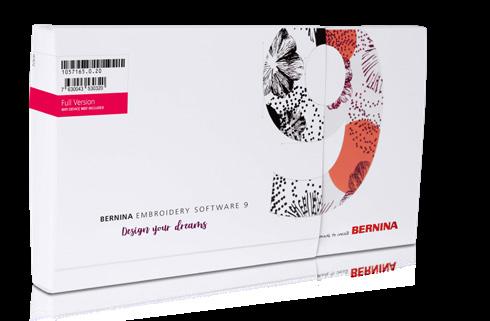
www.bernina.co.nz

“I have now found the software that matches my imagination.”
Poor school attendance is not unheard of since Aotearoa’s government has been trying to tackle this issue for a while, but it has recently decided to fund $74 million over three to five years to improve school attendance.

The Ministry of Education (MoE) is providing a School Attendance Turnaround Package to kura and schools to support students/ ākonga, so they can become interested in learning again, as posted on the MoE website on February 21, 2023. This extra support by the government aims to support the goals established through the Attendance and Engagement Strategy.
The latest package hopes to improve school attendance among ākonga who are often absent, not in education, employment, or training.

The package has:

• $37.6 million of funding over five years for 82 new attendance manager positions who will work with schools to ensure students no longer skip school here and there or don’t attend at all
• $28.4 million of funding over five years to expand space and acknowledge the Attendance Service price pressures



• $7.73 million of funding over three years to improve a regulated structure for gathering and examining attendance statistics.

The funding will aim to get young people back into the
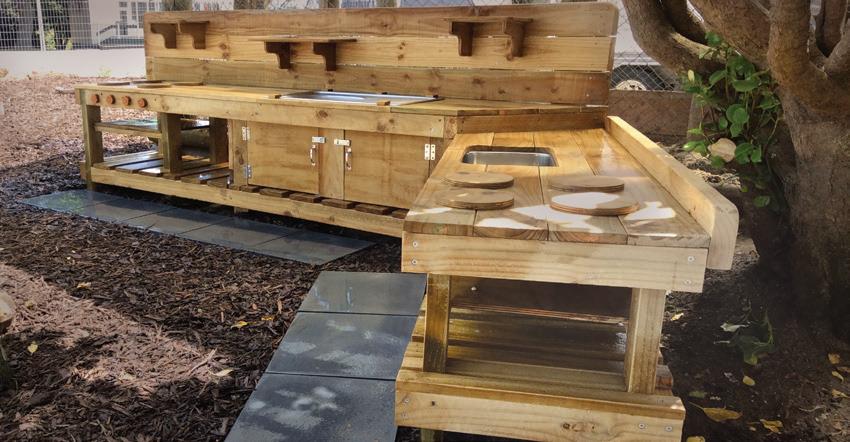
classroom with more attendance managers in schools and additional support for the Attendance Service, Education Minister Jan Tinetti said.
“We know how important it is for young people to be at school and learning, so the government is putting every effort into making sure they are. We are going back to basics on attendance.
“This $74 million package puts resources on the ground to support schools and students and make a difference to attendance rates this year. It will also make sure we have better data that is less likely to be misconstrued and helps us to focus our efforts in the right place.”
The attendance managers will work with parents and schools, including students who have low
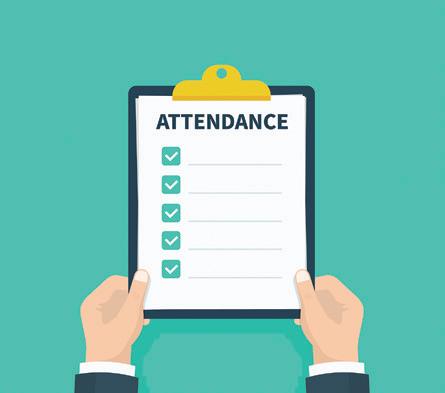
or decreasing attendance rates to ensure they are going to attend school regularly unless they are unwell.
“This is a complex issue that will require the whole community, including parents, to fix but the government is committed to doing everything it can to turn attendance and engagement in school around.”
There are various reasons why students do not attend school, which is why the government wants to continue to improve initiatives to eliminate these challenges that are affecting students’ education.
“These measures will ensure young people are attending, want to be at school and are on the right path.”
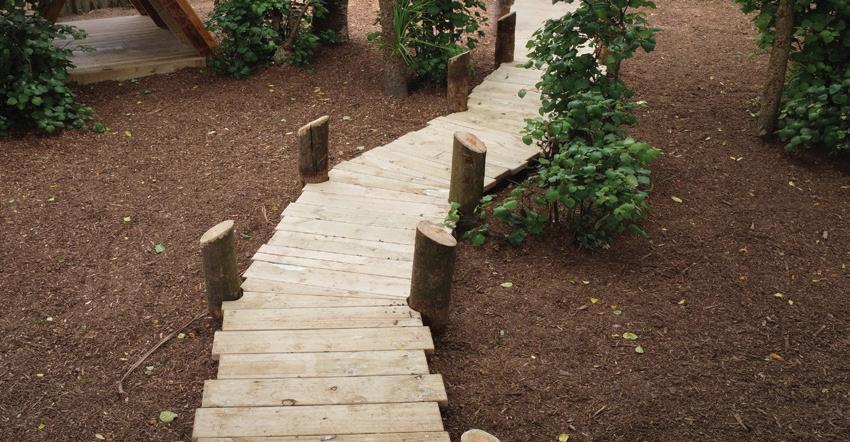
Creating friendships is a vital part of a child’s development. We learn to share, be empathetic, navigate disagreements and sometimes experience judgement from others. Entering the next stage of relationships during high school is another experience, typically where emotional connections begin to develop.

Navigating friendships is part of any teenage experience. Having a teacher or an elder mentor to help support and guide young people through the challenges of friendships during this time is important.
Kidspot New Zealand says, “While children aged between five and 12 generally enjoy companionships of convenience, the high school years usher a new kind of relationship.

“From around the age of 12, friendships change purpose, focus and function. [Our] Children begin to seek greater intimacy and trust in their friendships. This social development accompanies their cognitive, physical and personality maturation.”
Te Kete Ipurangi (TKI), says teachers supporting student friendships by encouraging students to make friends or offering useful and timely guidance when needed is meaningful. Being a positive role model and respecting individual differences of students, as well as modelling care, patience and positive interactions with students will impact the culture between students and their learning environment.
Providing opportunities for ongoing student connections, as well as helping students to find appropriate rules, will make students feel as if they have purpose and relatability within their peer group. Finding ways to positively support students to make connections and
friendships inside the classroom will also ensure the class environment runs smoothly.
Kidspot New Zealand says taking the time to listen when a child is in emotional pain or distress is important. “Unfortunately, our teens are more likely to push us away than confide in us, so we need to make it easy for them to talk.”
They say it is tempting to flood young people with ‘decades of wisdom.’ However, asking questions such as, ‘How has this affected you?’ or ‘Should all friendships last forever?’ is a good place to get students to consider the possible bigger picture of their situation.
Helping young people navigate friendships during their impressionable years can be significant to social development. As teachers, supporting students to navigate relationships on their own, while offering support where appropriate is essential. To read more or to download resources available, visit: inclusivetki.org.nz or visit: www.kidspot.co.nz.
With a range of flexible options to suit any school’s requirements, TigerTurf is your perfect sporting partner.
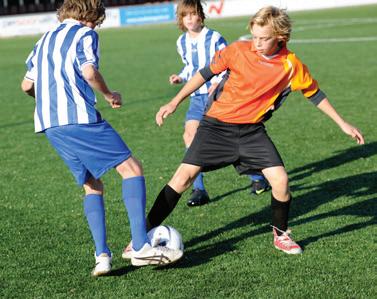
TigerTurf manufacture and install top quality, high performance, low maintenance, all-weather synthetic sports surfaces for hockey, football, tennis, schools multi-sports and cricket, as well as turf for childrens’ playgrounds and landscape lawns.
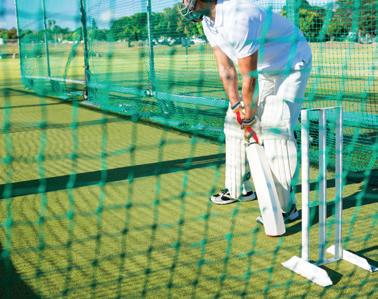

Late last year the Ministry of Education (MOE) released a new model to better support learners with higher needs.
The MOE states the government is committed to designing a system that better supports our kids and young people with the highest needs.
Between April 2021 and October 2022, there was a ‘Highest Needs Review’ launched and was completed with over 1,100 submissions, providing feedback for the government to consider when making changes.
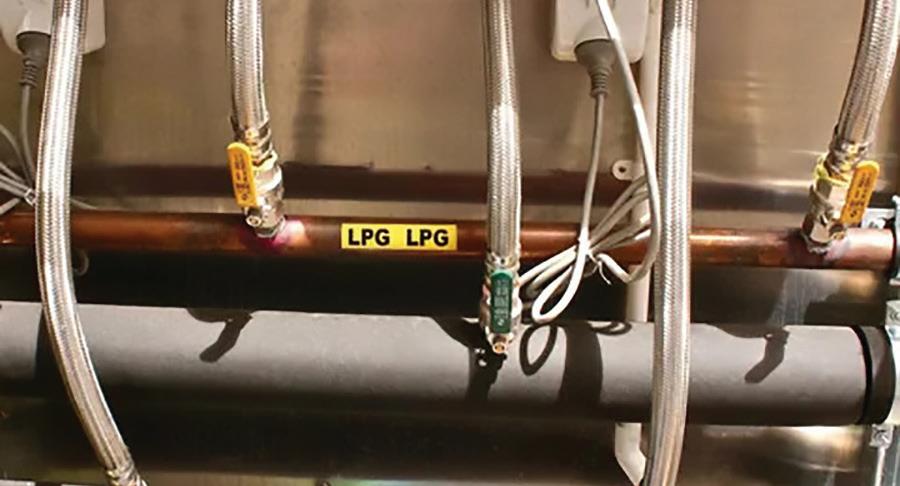


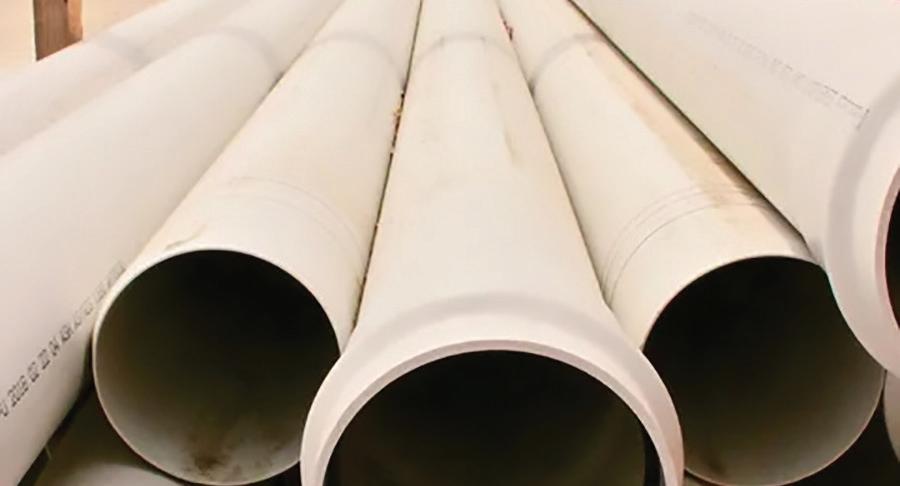

Associate Minister of Education, Jan Tinetti says, “Following the feedback from the review, the government has agreed to substantial changes to ensure our learners with the highest needs have their needs met”.
She says the government invests $1.2 billion each year to support learning for these students, however some of the support has been fragmented throughout the processes and were not reaching kids and young people when they needed it most.
“To ensure that the support system is better fit for purpose a mixed model approach will be developed that creates a partnership between the students, their whānau and school.”
The government has created a Learning Support Action Plan from 2019-2025, which includes seven building blocks to create change.

Some of these include; stronger integration with support agencies and customising tailored support for individual students and a new funding model.
Once the new changes have been implemented, Whaikaka (Ministry of Disabled People) who are designing and developing the new system, will report back to Jan Tinetti during mid-2023.
Kura is an important place to ensure all types of learners’ needs are met, no matter someone’s differences. The new system for learners with highest needs will be developed based on the Enabling Good Lives principles and outcome domains of Ka Hikita - Ka Hāpaitia, the Māori education strategy. “This programme will provide the roadmap for change over the next two, five and 10 years. In the short-term the Ministry of Education is strengthening the current model to make it quicker and simpler for learners and their whānau to get the support they need.
“Teaching staff will also be supported to take up professional learning and development available to further develop their skills and confidence in working with learners with high needs,” the MOE says.
To find out more about the changes to the highest learner’s model and review, visit: www.education.govt.nz.
In a world of constantly changing requirements and skills, it’s important to ensure education is still working.
The education system, thankfully, is something that’s constantly changing and evolving to meet the needs of the working world. It’s also important to question whether schools are providing necessary life skills, not just academic skills. Are students being taught how to navigate the adult world after school?
The Ministry of Education’s associate deputy secretary of Curriculum, Pathways and Progress, Pauline Cleaver, says Aotearoa New Zealand schools design their own local curriculum, guided by the New Zealand curriculum, to best meet the needs of their students.
“Schools design a curriculum that includes teacher and learning that is relevant to the learners and their community.
“Life skills are an important component of the education system envisaged in the National Education and Learning Priorities and we are committed to ensuring that schools and kura have the flexibility and support to teach these skills in a range of contexts according to local needs,” Pauline says.
Pauline says The Ministry of Education is working hard to ensure that all ākonga receive a high-quality education that responds to their individual strengths and needs.
“The refresh of The New Zealand Curriculum will identify skills and capabilities across all learning areas, including financial, information, sustainability (global citizenship) and civics and citizenship capability.”
She says life skills and capabilities are cross curricular; they are experienced in all learning areas. The refresh of the curriculum will
make these easier to identify and more purposeful in each learning area.
“For example, in the refreshed social sciences learning area, ākonga develop understanding, knowledge and skills in relation to social, cultural, economic and political processes,” Pauline says.
“This enables them to contribute to and participate in society as critically informed, ethical and empathetic citizens with a concern for the wellbeing of communities and a commitment to a fair society for all.”
In the technology learning area, ākonga learn to apply technological knowledge, skills and practices to benefit themselves and others. This can involve sewing, food processing and working with hard materials as well as digital design and coding. These processes are expected to take place in authentic contexts, supporting students to understand the realworld applications of their learning.
There are several resources aimed at assisting both students and teachers with ensuring ākonga have the skills they need to enter the work out of school.
Pauline says the teacher-focused School Leavers Toolkit website supports schools and kaiako in the teaching of critical life skills. The student-focused School Leavers Toolkit is a resource that helps young people gain critical life skills on topics such as government and voting, moving out of home, getting a job, and money and tax.
Pauline says new content is currently being developed for the website, with new sections on study and training options, student loans, student allowance and scholarships, planning to move out and budgeting and banking.
“As part of the Youth Guarantee package, there are also a range of
initiatives which aim to support learners in developing their own pathways towards future work and careers, and help educations meet the needs of their students,” Pauline says.
“These options are available to all young people whether still enrolled at school or for those who have left.”
• Trades Academies (SecondaryTertiary Programmes) aim to engage young people in education and equip them with the relevant vocational skills and training
• The Services Academies programme is run with secondary schools in partnership with the New Zealand Defence Force
• Gateway enables schools to provide senior students with opportunities to
access structured workplace learning that has a formalised arrangement set in the workplace
• The Secondary Tertiary Alignment Resource (STAR) delivers additional operational grant funding to all State and State-Integrated schools with year 11-13+ students

• Youth Guarantee Fund courses help young people access foundation learning without paying course fees.
For more information, visit: www.education.govt.nz
The teacher-focused school leavers toolkit: www.sltk-resources.tki.org.nz
The student focussed school leavers toolkit: www.schools-leavers-toolkit. education.govt.nz
“Life skills are an important component of the education system envisaged in the National Education and Learning Priorities and we are committed to ensuring that schools and kura have the flexibility and support to teach these skills in a range of contexts according to local needs.”

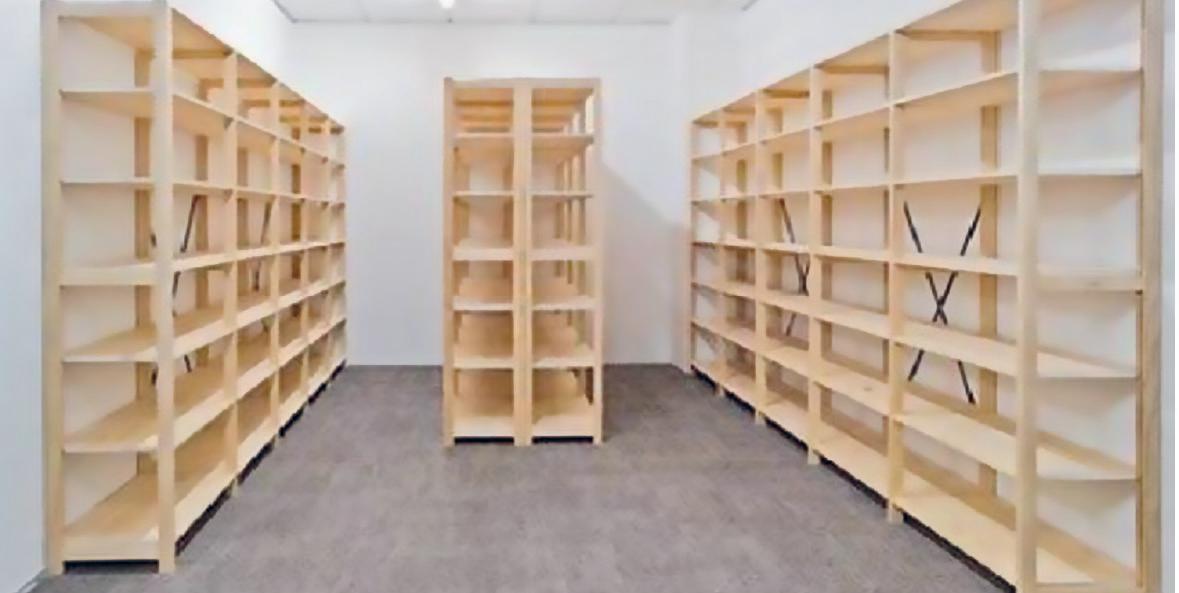


Nurturing creativity in the classroom gets teachers and tamariki to think, learn, involve themselves, support one another, and show teamwork, which are important skills for tamariki to learn about while they grow.
Two Aotearoa primary school staff share how and what they do to encourage and incorporate creativity at school.
Belmont Primary School sparks creativity among students and gives them the courage to share their talents because the principal Bruce Cunningham says creativity is a valuable thing throughout a student’s time at school and will be in their future workplace too.


“We teach and encourage our tamariki in the attributes, skills and dispositions of a creative thinker throughout all aspects of the curriculum.”
Tamariki are five years old when they start school and are very curious at that age, he says.
“They have spent the first five years of their life interacting with their environment, exploring their world and building concepts about life. They build things and bust things, they put stuff in their mouths or in their ears and they create in a way that is not constrained by concepts learned later in life.
“This curiosity is a key component to creative thinking at primary school, but is something that can be easily crushed in many children if they start seeing an environment where one person in the room holds all of the knowledge.”
The school integrates creativity as children are always learning in their day-to-day interactions, which is why classrooms are essential to nurturing creativity, he says.
“Creativity is not confined to certain times of the week or only some aspects of the curriculum. In the classroom, teachers know the importance of open-ended questions, allowing thinking time, promoting provocative questions, and a myriad of other simple strategies.”
Palmerston Primary School Year 5-6 release teacher and senior team leader, Megan Gallagher, believes creativity can only be discussed when referring to the work of the late Sir Ken Robinson. He challenged ākonga to have many opportunities to express their creativity throughout various learning fields, Megan says.
“Creative people come up with creative solutions and we need that more than ever, we can be creative on a stage but also in science and maths. The arts give our ākonga a unique place to learn about themselves, express themselves and develop empathy.
The school focuses on creativity as a school term concept as part of its content-based curriculum.
“I love to give my ākonga opportunities to share their learning in different ways through visual art, drama and movement. Dance is offered as a lunchtime option and on summer days we sometimes take the outdoor speaker under our big oak tree, get some music going and just dance. Giving ākonga explicit lessons to develop skills helps them to build confidence through competence.”
Megan integrates creativity into the classroom through the curriculum as it presents a lens that all learning fields are explored in addition to definite skills being taught for that term, she says.
She encourages students to be curious and have conversations and tasks that involve creative thinking, including the willingness to play with various concepts.
“We are creative in the kitchen and enjoy dress-up days too. Engaging with nature can spark creativity too and we are lucky with our school environment.”
The Electoral Commission’s civics education programme, Kids Voting – Te Pōti a Ngā Tamariki is back for 2023, giving students the opportunity to learn about our electoral system and vote in their mock election.
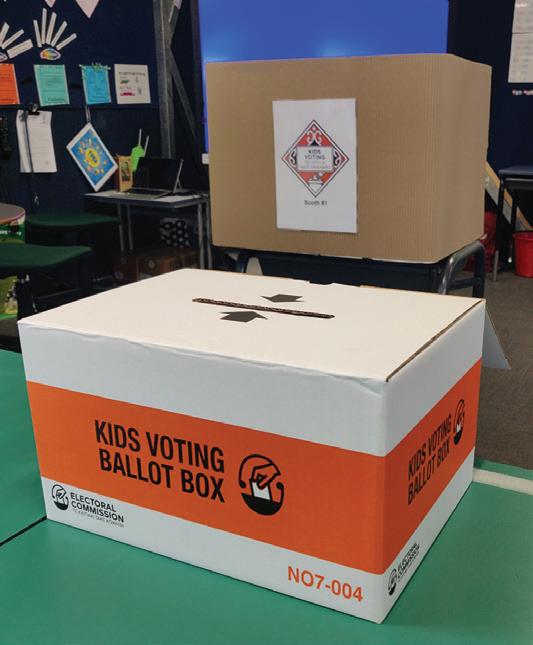
Before the 2023 General Election on 14 October, schools can use the Kids Voting resources to explore real-life election issues and the parties and candidates standing in the election, or to make up their own parties and campaigns.
The programme builds up to a mock election, which gives students from years 1-13 first-hand experience of the voting process.
To register for Kids Voting –Ngā Pōti a Ngā Tamariki go to kidsvoting.nz.
Schools that register for Kids
Voting will be sent all the resources they need to run a Kids Voting election, including curriculum-linked teaching resources to support students’ learning, a ballot box and a guide to running a mock election.
Schools also receive mock ballot papers for their electorate with the actual candidates and parties standing for election, after candidates have been confirmed.
1,034 schools across New Zealand registered for Kids Voting at the last election in 2020, up from 832 schools in 2017. It was an impressive increase given the


challenges to teaching in 2020 from COVID-19.
In a survey of schools that took part in 2020, teachers reported their students enjoyed participating and that the programme had increased personal understanding, belief and confidence in electoral participation. Young voters are voters for life, and the Electoral Commission
sees Kids Voting – Ngā Pōti a Ngā Tamariki as a long-term investment helping young New Zealanders understand how voting works and encourages them to partake.
The Commission has other resources to support the teaching of civics education in schools for levels 1 to 5 of the New Zealand Social Sciences Curriculum and level 5 of Te Marautanga o Aotearoa.
Foster the next generation of civics-savvy New Zealanders and give your students the opportunity to have their say with Kids Voting – Te Pōti a Ngā Tamariki.
Students vote for real parties and candidates and compare their results with the 2023 General Election.
We’ll support you with everything you need to run your own election, including free teaching resources to aid your students’ learning.
Find out more and register your school at kidsvoting.nz
Image courtesy of Māpua SchoolOnce upon a time ... New Zealand history was taught from only one perspective.
With some big shifts on the horizon, we are entering an exciting time in education in Aotearoa New Zealand.
For example, one of the objectives of the NELP is to help children and young people successfully participate in civic and community life, with the aim to enable our curriculum, our communities and our country to be a modern, diverse, inclusive and exciting place for young people to grow up in; we have much to look forward to.
The introduction of the first part of the refresh for the NZ curriculum (Aotearoa New Zealand Histories) is, I personally think, quite possibly the best thing to happen in education in a very long time. Not only because it is an enabler of a more culturally inclusive society, but also because it has the potential to
 Clarke
Clarke
connect us in ways that we may not have explored in the past; implementing this exciting new area will open up some amazing opportunities for innovation.
The way the ANZH curriculum gives us the chance to do this is by implementing more connected and inclusive programmes that result in a stronger sense of identity and belonging for everyone in your community. This means you can simultaneously improve your curriculum while strengthening your community. So how can you actually do this?
As when implementing any new initiative or learning area, it is important to consider the best starting point for
all concerned. Regardless of whether your school is at the very beginning of your ANZH curriculum journey, got started a while ago, or is well down the track, there is always scope to refine the curriculum and go deeper so that student learning is even more engaging, relevant and inclusive.
If you’re unsure which point your school is at on this journey, take a look at page five of the Ministry of Education guide which has a poutama outlining four stages, which you can use to identify at a glance where you might be.
Once you’ve established your position, whatever it may be, reflect on the following questions (which can also be helpful as prompts when discussing ANZH curriculum possibilities with your team):
1. To what extent do your teachers use their relationship and connections in the community to inform your programmes? Do all of your staff know the local stories of significance to
mana whenua? How strong is your school’s relationship with mana whenua, and also with other community resources and connections?
2. How often do your staff use te reo Māori? Do they uphold tikanga Māori within programmes and across the school? If you find these aspects need to be improved, there are some great resources to support people to do this. For example, the books Niho Taniwhā and The Hikairo Schema.
3. How do your school programmes enable students to learn about the historical places, people and events that are of importance to your area? Are they delivered in a way that is relevant to the different year levels?
4. How do your staff plan to increase students’ critical inquiry skills when they are researching historical information? And how do you measure success for your students in this aspect?

Using the power of connectionRob CEO of Learning Architects
The threads that run through the poutama will have many opportunities for where staff can start. These threads, and the poutama, will help you to map out the priorities for professional learning for your staff and inform your focus.
As you have these discussions, ask your staff (individually as well as in staff hui) what their concerns are - this will give clues as to how to support them.
Use story to build community and confidence
Making local history come alive through story with this new curriculum also presents relatable, interesting opportunities to develop staff confidence that will take your current curriculum to a whole new level.
Start with what’s around you. Scan your local community for resource people, events, and places of significance and stories will naturally emerge. How they are then told within your school is up to your staff and ultimately, your students.
Bring history to life with STEAM
Another exciting aspect of the ANZH is that it is more than finding out about resources, events and significant or knowledgeable people, it’s also about how your staff use innovative or different tools that can enable students to express their understanding of local histories in creative and engaging ways.
Digital technologies add another layer and have the potential to help learners to learn and express themselves in creative and novel ways; it also helps them tell stories through channels that can appeal to a wider audience.
For example, what if your students were to explore their stories through the arts or science, through sculpture, painting or drama? How might they learn about how your mana whenua care for the local environment, linking this discovery to the science curriculum? Creating content on podcasts or video
could be another fun way to capture stories.
Using a wide range of resources that bring diversity to the learning mix also encourages broader and more informed perspectives. It will also provide a variety of angles and viewpoints that people bring to their local histories and that students can develop. But remember, it’s not just about the resources you use; it’s also how you design curriculum.
introduction of the first part of the refresh for the NZ curriculum (Aotearoa New Zealand Histories) is, I personally think, quite possibly the best thing to happen in education in a very long time.
• What is your role as a leader in creating a space where everyone feels a sense of belonging?
• How can you help staff and students make this connection and support them to be positive contributors? And,
• What is the role of your curriculum in facilitating this? This all might seem overwhelming for some people to begin with, so before you dive in with exciting new ideas, ask your team to share any concerns they may have about the implementation and what they may currently be doing. Chances are you may discover that there are some useful local stories being used in your school already.
how to use the framework now will make subsequent learning area rollouts much easier.
To boil it down to its essence, the Understand, Know, Do framework comprises three parts:
1. Understand = big ideas expressed as concepts that underpin the curriculum
2. Know = local contexts and knowledge relevant to your students and community
3. Do = critical inquiry skills acquired by students to help them explore the big concepts through a local lens This third part of the framework is where students get the opportunity to develop agency and help them towards becoming contributing citizens.
The ANZH curriculum provides you with a seamless way to help bring objective one from the NELP to life by ensuring your place of learning is safe and inclusive.
By creating a more connected curriculum that involves your community, you are modelling the inclusion principle of the NZC, because as you explore local histories and their implications with your learners, they are more likely to be agentic in how they approach the present. In turn, they are more likely to be an effective contributor in the future.
Something to be mindful of is that not everyone in your school and local community feels like they belong, even though by virtue of being in a community (whether they recognise it or not), they do. As you reflect on this, consider these questions:
You may have already noticed that the curriculum is structured using the framework known as ‘Understand, Know, Do’ (UKD). Applying this within the teaching and learning process helps to consider curriculum design in three ways:
• A mixture of concepts to explore
• Contexts that are important to your community, and
• Skills to be learned within these contexts.
And of course, when we design curriculum that is conceptually driven, linked to local contexts and uses multi-media, it is more engaging and relevant to our learners. And this is what I understand the Ministry of Education is talking about when they say ‘designing rich learning experiences’.
As a leader, it is probably a good idea to adapt the UKD approach so that your staff know what it is, and how to use it because it is highly likely that this framework will become central to all learning areas as the NZC refresh progresses. This means helping teachers learn
In this regard, the ANZH curriculum becomes a useful design tool for your localised curriculum that can guide the pedagogy in your school.
What does the future look like for your school community?
By taking a positive, proactive approach to your implementation of the ANZH curriculum, not only will you be encouraging deeper connections with historical issues and creating a stronger sense of belonging, you will also be increasing the range of ways students can express themselves across the curriculum.
In closing, I do want to acknowledge that while this is a massive opportunity, it may also feel like a mammoth undertaking, but take heart; you can make significant progress simply by approaching it one story, or one connection at a time. So step back, scan for opportunities, ask your staff, students and community for their ideas - and most importantly ask them how they want to tell their stories. Then just get in behind them and make it happen.
The end.
The
More students from around the country are choosing to grow their futures at Te Whare Wānaka o Aoraki Lincoln University.
That’s because Lincoln’s specialist land-based subjects are centred around New Zealand’s largest export sectors, and this is supported by its graduate employment rate, which is the highest of any university in the country.
The small size of Te Whare Wānaka o Aoraki is also a big advantage, as it translates into a highly personalised learning environment and more oneon-one time with lectures. Staff pride themselves on always being available to students and their open-door policy offers the support needed to get the most out of a Lincoln degree.
The village atmosphere on campus creates a real sense of community and camaraderie.
The future is land-based Lincoln gives students the expertise to make meaningful contributions to society in various fields. These include agriculture, horticulture, grape-growing and winemaking, beer brewing and fermentation, business and
finance, property and valuation, marketing, food science, conservation, environmental science or management, tourism, sport and recreation and landscape architecture.
The subject areas are varied but they all have one major element common: a strong focus on working with the land to enhance lives. Fostering sustainability is key, ensuring that the land-based sectors are able to thrive for many years to come.

Students benefit from hands-on practical experience, meaning they are able to get out there and start addressing real-world issues in the field from the very beginning of their studies. They also gain invaluable connections through Lincoln’s strong partnerships with industry, often leading them to secure jobs before even completing their qualifications.
For this reason, graduates are highly sought-after, as they have the skills and knowledge to help shape policies, develop sustainable practices in a range of sectors, and solve issues relating to utilising resources.
The university’s Domestic Liaison Team has offices in both the North and South Island, with friendly staff perfectly positioned to offer
advice about every aspect of life at Lincoln, enabling prospective students in all regions to make the best decisions for their futures.
For those who have questions about recommended study options depending on their individual interests, the team can help with choosing the right programme, exploring future career opportunities and connecting would-be students with other Lincoln experts who can get them started on their study journeys.

Students throughout the country can engage with Lincoln Domestic Liaison Officers during school
visits, at events including careers expos and fieldays, or they can contact the team any time to book a personalised advisory chat or tour of the Lincoln campus.
For more Lincoln learning opportunities, a series of Information Evenings will be held from May to August this year in Auckland, Waikato, Christchurch and Southland. Prospective students can attend one of the expo-style events in their region and learn everything they need to know from current students, academics and support staff about why they should pursue a Lincoln education.

The Ministry of Education has recently announced new rules and guidelines on minimising the use of physical restraints in schools and kura.
They were created in response to calls from educators, parents and disability groups for more clarity on the use of physical restraint in schools and what is acceptable physical contact.

Ministry of Education Hautū Operations and Integration, Sean Teddy, says the new rules and guidelines have a strong focus on prevention.
“The guidelines outline the legislation and set out a practical approach to recognise and understand distress, focusing on minimising the use of physical retrains in schools. This includes the use of unjustified physical restraint,” he says.
By the 7th of March, 2023, all registered schools are required by the Ministry of Education to have a physical restraint policy in place. Furthermore, by the 7th of February, 2024, teachers and authorised staff are to have completed a mandatory online learning module about the new rules and guidelines.
This mandatory online learning module is free of charge and available through the ministry’s Community Portal with an education sector logon.
It takes about 30 minutes to complete. Sean says the module is called Physical Restraint –Understanding the Rules and Guidelines and is a guide to the legislation, rules and guidelines, and includes approaches that focus on safety and wellbeing. It’s the first of a series of modules, webinars and other resources being developed over 2023 and 2024.
Alongside these new rules and guidelines is a new online physical restraint incident
reporting system and schools are to report all physical restraint incidents to the ministry using this new online incident form.
Sean says the new rules and guidelines are focused on prevention and provide a practical approach to recognising and responding to students’ distress that may result in imminent harm. “The guidelines clearly describe the three conditions that must all be present if physical restraint is used,” he says.
These three conditions are:
1. The physical restraint is necessary to prevent imminent harm, including significant emotional distress to the ākonga or another person.
2. You reasonably believe there is no other option available in the circumstances for preventing the harm.
3. The physical restraint is reasonable and proportionate in the circumstances. (This means only applying as much force as is necessary and for the minimum time necessary).
“The legislation also states that there may be times when proactive steps are needed to ensure ākonga safety. For example, an unauthorised staff member reaching out to prevent ākonga from running onto a road or climbing somewhere that is unsafe,”
“The legislation also states that there may be times when proactive steps are needed to ensure ākonga safety. For example, an unauthorised staff member reaching out to prevent ākonga from running onto a road or climbing somewhere that is unsafe,” Sean explains.
Sean says training around physical holds is separate and provided by local Ministry of Education offices. This training is also free.
“Physical holds training is only necessary for teachers and staff where there is a high likelihood of the use of physical restraint, and where physical restraint is identified as part of a student support plan,” he says.
“School staff, who are part of a team supporting a student where imminent harm is likely,
can be authorised by the school. Under the rules, an employer may authorise an employee, who is not a teacher and who has been trained in accordance with Rule 12, to use physical restraint in accordance with section 99 of the Act.”
To create these new rules and guidelines, the ministry worked in partnership with the Physical Restraint Advisory Group. This group comprised of parents, principals, disability and education sector representatives and the Teacher Council.
For more information, visit: www.education.govt.nz/school/ student-support/specialeducation/behaviour-servicesto-help-schools-and-students/ minimising-physical-restraint-innew-zealand-schools-and-kura, where you can find the rules and guidelines in a PDF format.
Online safety is more important than ever. Teaching our tamariki about the potential dangers of online spaces and the permanence of choosing to share photos online is a modern-day aspect of school being taught regularly.
The Ministry of Education (MOE) says there are many benefits to learning with digital technologies such as laptops or tablets, but are also some challenges for students and schools.
MOE has developed a new ‘Digital Technology: Safe and responsible use in schools guide’ to provide principals and teachers with information to act confidently with regards to technology.
The guide is designed to support teachers to understand ways young people use technology, how to deal with or prevent issues, as well as understanding the law regarding what teachers can do within technology spaces. Netsafe is an organisation designed to support kura and whānau navigate the digital spaces with their children. There
are many resources available including an ‘Online Safety Parent Toolkit’ - a simple and practical seven step framework to help support parenting in a rapidly changing digital world.
“Netsafe has assembled in one easy to use toolkit all the things parents consistently say they want to know about in the online safety space.
“From online bullying to grooming to social media to sexting and screen time - Netsafe has collated information, advice and tips to equip parents, whānau and caregivers with the skills to support their young people.”
Teachers may advise parents to take the opportunity to look further into the Netsafe toolkit, if they believe some families may need extra support or guidance in this ever-changing area of learning.
Particularly with the increase of technology being used as a digital tool for learning, the need for clear expectations in the classroom need to be implemented from the start.

Netsafe have a ‘Netsafe Kete’ available specifically for teachers to support learning in
a digital environment. Inside this kete includes a collection of ‘Student user agreement’ forms, specifically for a direct conversation between teachers and students to be held surrounding rules of technology. Students can sign the forms as an agreement to treat technology in the classroom with respect. These conversations should not feel confrontational, rather openended where students can ask questions and be curious about online spaces.
When teaching older students, it may be important to discuss the permanence of sharing photos online. Supporting students to understand the potential negative impact on their futureselves from their digital footprint is imperative.
Netsafe says, “Your digital footprint is the trail of ‘electronic breadcrumbs’ you leave behind when you use the internet. It can include the websites you visit, photos uploaded and interactions with other people on social media.”
They say integrating technology into the recruitment and selection process is not new. “It’s only a matter of time before our personal lives cross over into
professional lives, which is why it’s worth thinking about your digital footprint,” Netsafe says. Tips for older students include reviewing privacy settings and checking socials to remove language or pictures, which may be embarrassing or offensive. Often students may find it difficult to imagine the impact of internet usage on their futureselves. It’s important to discuss with students how their digital footprint lasts forever.
Although it is not the sole responsibility of teachers to teach their students about digital safety, expectations of classroom usage of technology should be explained. The world of technology is exciting and can be greatly beneficial to learning.
Online safety and continuing to develop our understanding of how technology and learning work together is important. Technology and social media are not ‘going away’ anytime soon. Finding a positive middle-ground where learning and fun shared experiences happen online is how we can move into the future.
To find out more about Netsafe and the resources they have available to teachers and families, make sure to visit: netsafe.org.nz.
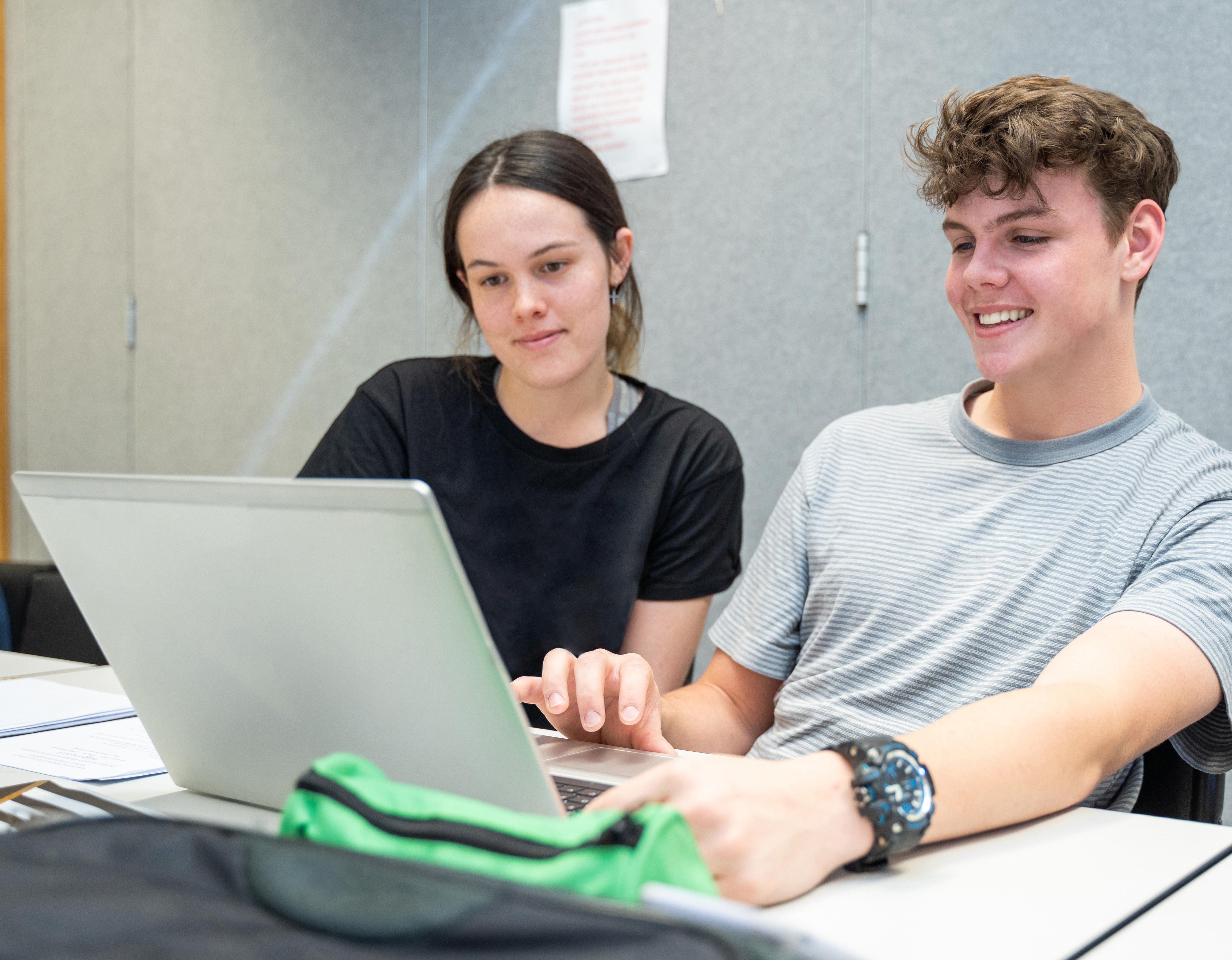

Gone are the days where school lessons are held in brick wall style buildings. Kura is now about self-expression and learning to embrace everyone’s differences. Art can be one way to do this. There are endless possibilities to bring artwork into your classroom, including displays on the walls and integrating creativity into lesson plans.
Bringing artwork into the classroom by getting students to support assignments with photographs, videos or documenting on software programmes such as Canva or Pic Collage can exercise their creativity.
It’s important to emphasise that a student’s artwork is not required to be ‘perfect’. The practice of visualising and brainstorming ideas on paper (or online) is part of the creative processperfection is not needed.
The Education Hub New Zealand Author, Dr Tim Paterson, is a researcher and educator with more than thirty years of experience working with primary, secondary and tertiary education providers.
Tim says, “Creativity is valuable in education because it builds cognitive complexity”.
He explains creativity is centred in problem solving and is essentially similar to the beginning process of the scientific method of trial and error in experimentations.
“Creativity is an inherent part of learning. Whenever we try something new, there is an element of creativity involved. There are different levels of creativity and creativity develops with both time and experience,” he says.
Students need to feel a sense of being psychologically safe when
being creative. Tim says “A set of simple changes rather than a complete redesign of a classroom is required”.
Modifying the size and makeup of student groups, working on desks, whiteboards or even outside to learn is one way to generate and develop creative capacity.
“Creativity works best with constraints, not open-ended tasks. For example, students can be given a limit to the number of lines used when writing a poem, or a set list of ingredients when making a recipe.”
He says constrained limits lead to what cognitive scientists call ‘desirable difficulties’, as students need to make more complex decisions about what they include and exclude in their final product.
Printing out work and displaying this throughout the classroom can create a sense of pride by sharing work amongst peers. Ensuring your classroom feels inviting, warm and safe for students to explore their creativity will mean displaying artwork or sharing creative ideas will become natural.
Initially, it’s important that students feel safe and not judged
for their ideas in the classroom. Some older high school students may find it difficult or nervewracking to share artwork amongst peers.
Making artwork a regular exercise and form of learning in your classroom will emphasise the importance of artwork not needing to be ‘perfect’. Art in the classroom can be the beginning of sharing and initiating ideas amongst classmates without being the final product.
Changing classroom displays regularly, either weekly or bi-weekly can remove possible insecurity around being vulnerable from students. If understood by students their work is not permanent, this can give more room for creative expression.
Art in the classroom is more than hanging pictures on the wall. While the physical artwork creating a colourful environment is important, problem solving and thinking skills gained from creative exercises are invaluable to a student’s learning and wider development.

To find out more about The Education Hub and Dr Tim Paterson, make sure to visit: theeducationhub.org.nz.

Implementing a uniform policy that works for everyone can be tricky. According to the Ministry of Educations Hautū of Operations and Integration, Sean Teddy, New Zealand schools are self-governing through their school boards when it comes to uniforms.

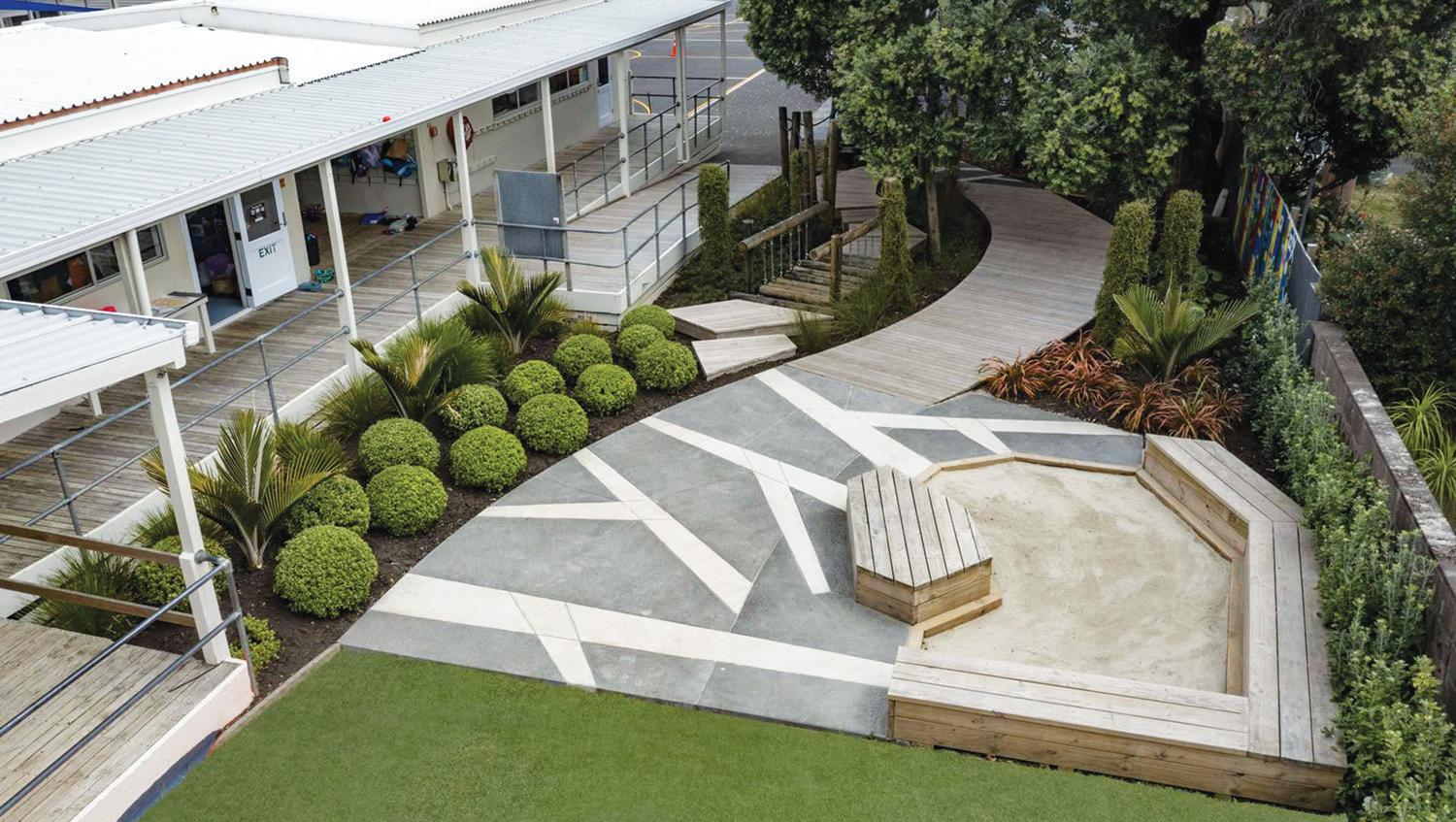
“Individual school boards make decisions on uniform requirements, including whether to have a uniform, the type and the price.
“This means there is a variety of approaches to school uniforms and dress codes, and schools are expected to consult with their communities when making these decisions,” he says.
Non-binding guidelines around school uniforms were published by the Human Rights Commission in May of 2022 and Sean says this may serve as a starting point for school boards when reviewing their school uniform policy.
These guidelines cover a range of uniform based issues from cultural and religious rights to gender expression and more.
It states that allowing for adaption to uniform policies, where possible, is a way to ensure the individual and collected mana is valued and student wellbeing is supported. The cost of uniforms should also be considered.
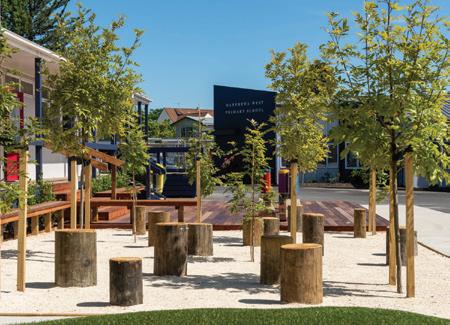
According to the guidelines, the issue of the cost of uniforms was a consistent issue raised by students.
While this particular issue was out of scope for the guidelines at the time, it recommends schools prioritise access to affordable, good quality uniforms for all students.
“This should be done in a way that upholds the dignity of all involved,” it says.
The guidelines also state the rights of students need to be considered at all times. It covers
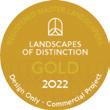


Māori students being able to wear items that are taonga to them and should be guaranteed equality.
“Where Pākehā symbols of status in uniform are expected (such as a tie), Māori students should be able to wear Māori symbols of status instead (such as taonga).”

Uniform inclusivity doesn’t just mean ensuring there can be adaptions, it includes providing uniform options that can be worn by all students regardless of impairments, health condition, ethnicity, sex or gender identity.
The guidelines say this could look like providing one pool of non-gendered uniform options and allowing students to pick and choose which items they feel most comfortable wearing.
At the end of the day, these nonbinding guidelines emphasise the importance of being flexible and willing to work with many different ideas and adaptions.
Students and whanau don’t want uniform impeding ākonga and their ability to learn.
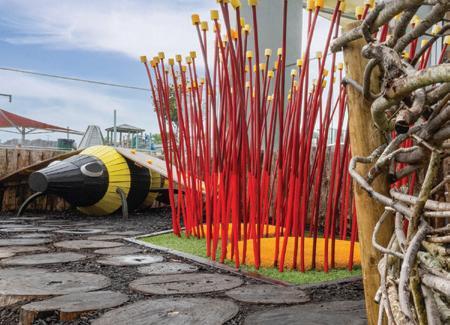
For more information, visit: www.tikatangata.org.nz.

“Where Pākehā symbols of status in uniform are expected (such as a tie), Māori students should be able to wear Māori symbols of status instead (such as taonga).”

Since 2020 ‘disruption’ has been part of the education landscape, whether it’s a result of viruses, lockdowns, or weather related events. Inevitably, that disruption has seen many children fall behind with their learning.
Teachers in New Zealand are passionate, dedicated, and do an amazing job with the resources they have. At the end of 2022, we were pleased to see the Ministry of Education acknowledge the challenges teachers have been facing with extra funding for resources, including external tuition. We are also extremely proud to be on the Ministry’s approved tuition supplier list. Even without the current disruption, there have always been students who need more support; support which NumberWorks’nWords has been providing for over 35 years. Our specialised maths and English
tuition services make a positive difference to children’s lives, with proven results in improving children’s confidence and skill levels.
Every student that comes to NumberWorks’nWords has an individualised learning programme tailored to their needs. Our software is designed to focus on closing children’s learning gaps, acting as a replacement for textbooks and generating questions. Any new or forgotten concept is explained and taught by our tutors, and the student will cement their understanding with practice using computer-based exercises.
As a teacher you might be wondering how confident you can be in recommending our services, if a parent of one of your students is seeking extra support? Firstly, our learning modules closely mirror the content of the New Zealand curriculum. Secondly, our teaching methods match


the ones you use at school, so children won’t become confused. Finally, we believe the guidance we receive from parents and schools is essential to achieve the best outcomes for each child. We know that learning is a team effort, and we are here to support you with it.

TOKEN COLOURS AVAILABLE:





Red Green
Yellow

Dark Blue
Teal
Magenta

Purple Orange Black White Gold Silver
COLLECTION BOXES NOW AVAILABLE IN TWO SIZES:

140mm x 140mm x 250mm
190mm x 190mm x 400mm
Reinforced corners
Hinged security lid for easy emptying
Secure screwed lid for security while in use
Super-tough food-grade
perspex


Made in New Zealand
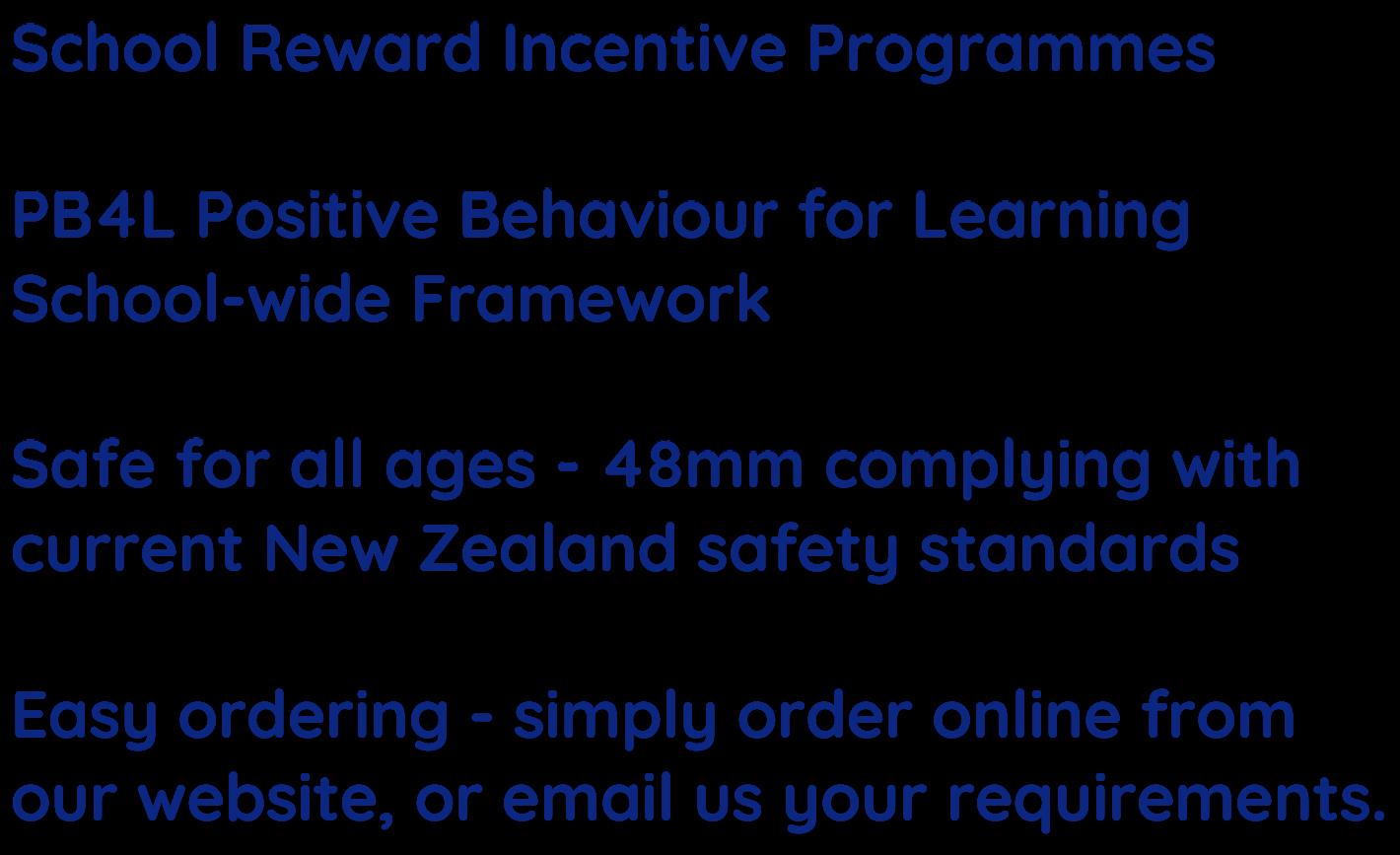
Since 1970, Auckland Cranes has built a reputation for safe and efficient complete lift and shift solutions. We provide mobile crane hire services to a wide range of industries and businesses from our two locations – Auckland and Hamilton. You can trust our team is committed to delivering any lift, anywhere, any time for our clients – no matter how complex or challenging.



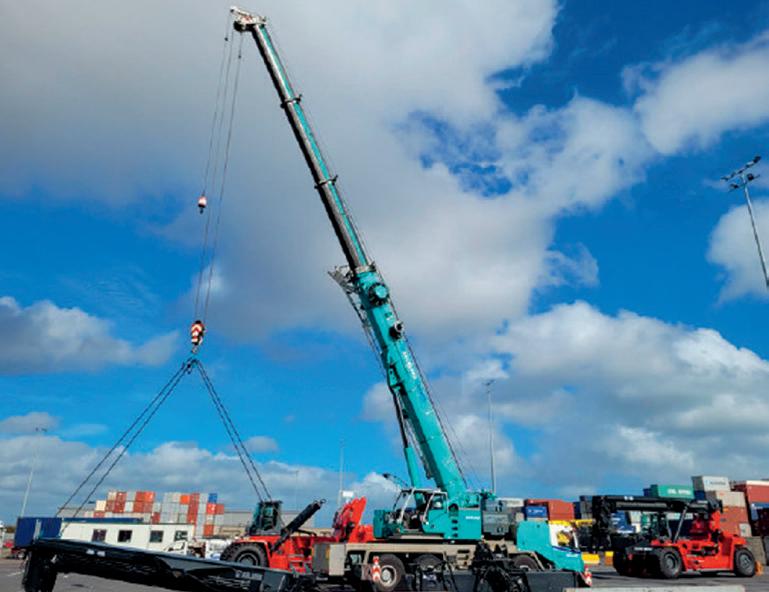

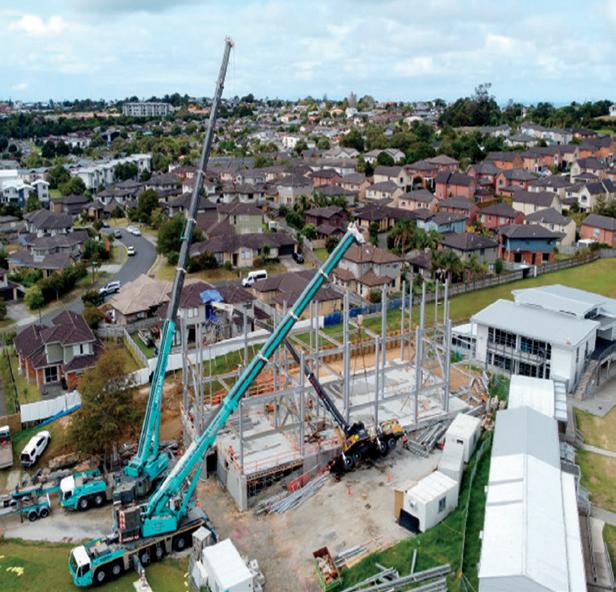
www.aucklandcranes.co.nz

Take your career to new heights in the crane industry
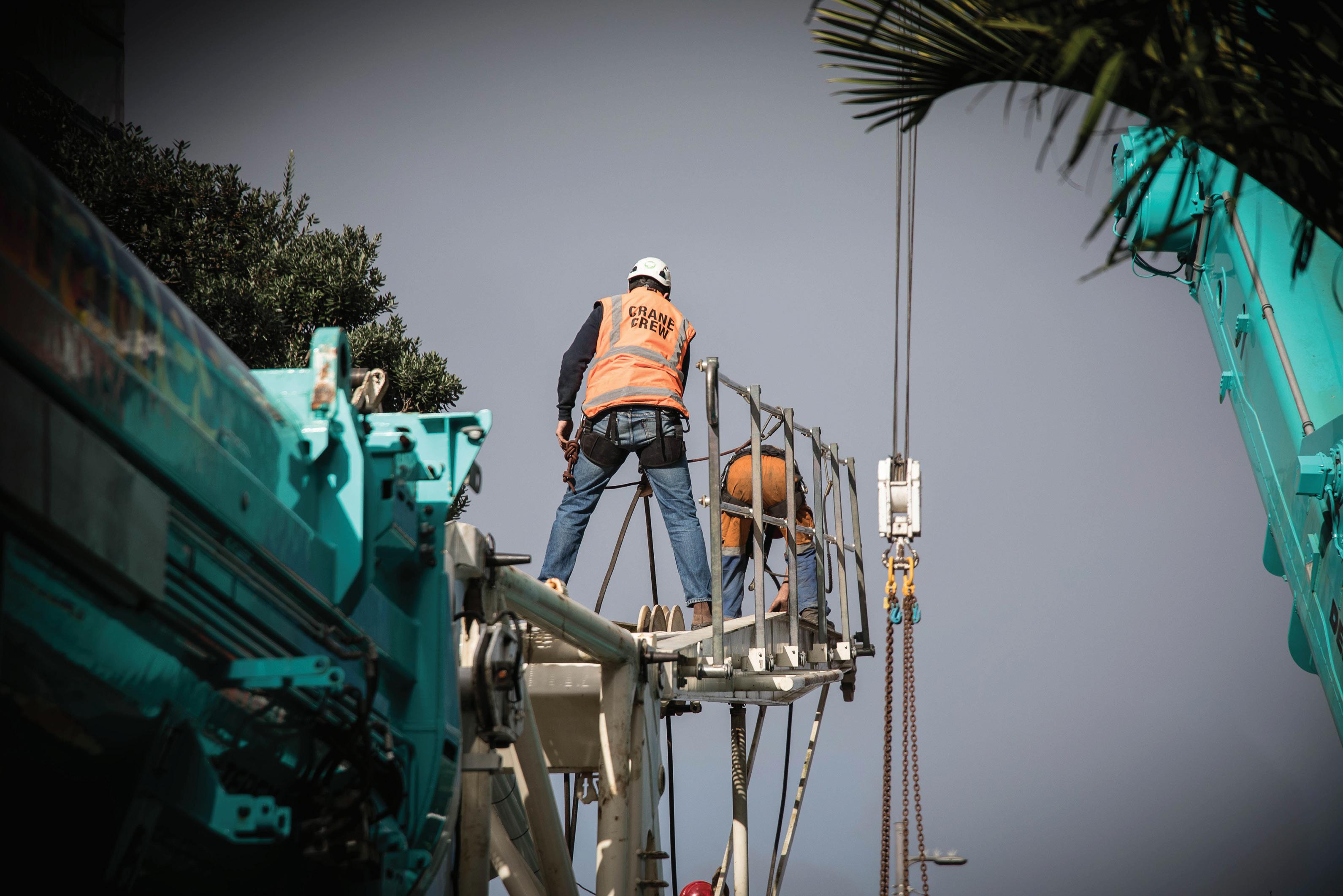
Be part of the team:
Dogging
Rigging
Crane Driving
Truck Driving Mechanics
Office Administration
VIEW AVAILABLE JOBS ON OUR WEBSITE


https://aucklandcranes.co.nz/careers/




Located 50 kilometres north of Dunedin in Palmerston, JDBuilders is well situated to service the needs of the coastal and inland towns and communities of East Otago and beyond.
The company is a member of Registered Master Builders and was established by Jeffrey Dennison in 2016.
“Palmerston has been our base for the business but we are expanding into the wider Otago region. We employ staff in surrounding towns and cities,” Jeff says.
The company specialises in the construction and renovation of residential and commercial projects and its client testimonies point to the high standard of work and project management provided.
As a smaller business, JDBuilders is “very flexible” in dealing with client requirements without the corporate overhead of larger companies.
“We have the skills and experience necessary to address any technically challenging aspects of a project, combined with the attention to detail and high level of interior finishes required on residential and commercial fit-out projects. To us, every construction project is unique, we build with passion.”
A team is created for each new project, which includes JDBuilders, the clients consultants, supply chains, and authorities to ensure the best outcome.
The business has experienced consistent growth since it was established, with word-of-mouth referrals from satisfied clients being a common way of gaining new business.
The company has developed a range of pre-designed new home plans that are great for inspiration and ideas. They can be customised to suit individual needs and situations, or a
design and build service can be provided for entirely bespoke builds for a broad demographic.

“We are in a growing area and because we have the advantage of the coastal proximity, we can cater for people who are looking for a retirement home, holiday accommodation or first home buyers.”
JDBuilders recently started a large commercial renovation on East Otago High School, which it won through a Ministry of Education tender process.
The project covers two blocks comprising a total 16 classrooms and involves future- proofing the exterior by the addition of weatherboards, replacing the windows on one block
with double glazed aluminium joinery, replacing the trusses, and a reroof along with exterior alterations.
Interior work includes replacing ceiling panels and removing skylights.
The classrooms have been weatherproofed by a full temporary canopy to streamline the work and to eliminate weather delays.
Highlighting the scope of work JDBuilders can tackle, the company has completed an impressive renovation on a
beautiful two-storey rural lifestyle home clad in Oamaru stone in Herbert.
A key aspect of the renovation was to replace its roof.
“New roofing was required and initially the client had opted for slate, however, this was not possible due to the pre-existing trusses/framing in place which had been designed for a lighter roof.

“Fortunately, we were able to suggest a product with the aesthetics of slate but much lighter weightwise.”
The project also involved cleaning the Oamaru stone, fitting doubleglazed windows, the addition of barge boards, and the installation large-format frost resistant synthetic porcelain tiles, which replaced the original paving outside the front entrance.
“Our clients were so happy with the result that we have been invited back at a later time to complete some interior upgrades.”
If you would like to find out more about JDBuilders and the services they provide, please ring Jeff on 027 354 1754 or visit their website JDBuilders.nz.
“Our clients were so happy with the result that we have been invited back at a later time to complete some interior upgrades.”






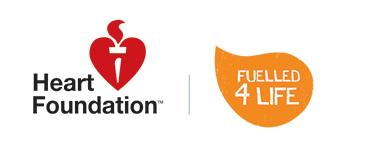
Menu development manager at Libelle, Anya Bell, stresses the importance of a good diet for children.
“Eating nutrient dense wholefoods is critical for children’s overall health, academic performance and wellbeing.
“As a key gatekeeper of children’s nutritional choices, schools play an important role providing nutritious meal options and guidance to healthy eating that
makes a difference in their overall wellbeing now, but also lifelong wellbeing outcomes.”
Anya says schools should develop a nutrition culture that is firmly embedded in your school’s values. This will help children learn the skills to make well informed choices later in life.
“Sticking to water and plain milk are better drink choices. Schools should ensure there is a range of balanced meal options available that cover a range of food groups.
“Consider how your school will manage treat foods and the messages that you are sharing. There are healthier options of sweet foods and there are manufacturers who wholeheartedly support the opportunity to supply better choices.
“We know that children in Aotearoa generally do not achieve their RDI of vegetables and the important micronutrients that they get with these foods, so anything that ‘heroes’ vegetables will make a difference.
“Wholegrains provide more sustained energy than refined grains.
“Any meal or snack that contains a balance of wholegrains, vegetables, quality protein and healthy fats will go a long way to sustaining children throughout their school day. Within that framework there are plenty of enjoyable options.”

“During my degree, I was taught about NZ’s shortcomings in terms of implementing effective and equitable healthy eating initiatives and policies.
“We are living in an unhealthy and unsustainable food environment that has significant socioeconomic effects on our communities. When you begin to examine these population health issues, it can become overwhelming as a lot of progress is needed.
“I also became quite frustrated because these issues aren’t ‘low-hanging fruit’, as my lecturer termed it, so aren’t at the top of policymakers’ agendas.
“When I started working at Libelle I saw the tangible difference they make to the day-to-day lives of so many kids. The staff have such a lovely rapport with the students, and everyone truly takes pride in their work.
“It’s very motivating to work for a company that’s so passionate about making a difference.
“I’ve started my Master’s degree because I can see the benefits the Ka Ora Ka Ako program is having, and I want to be more educated and equipped to play a small part in improving the diets of kiwi kids.
“Working at Libelle, I’ve seen the collaboration between schools, the ministry and with public health professionals, which is exciting because collaboration is what it will take to keep tackling unhealthy eating in NZ.”
– Isabella Price, graduate student (nutrition) and current masters student

Healthier food options for New Zealand’s hungry learners.

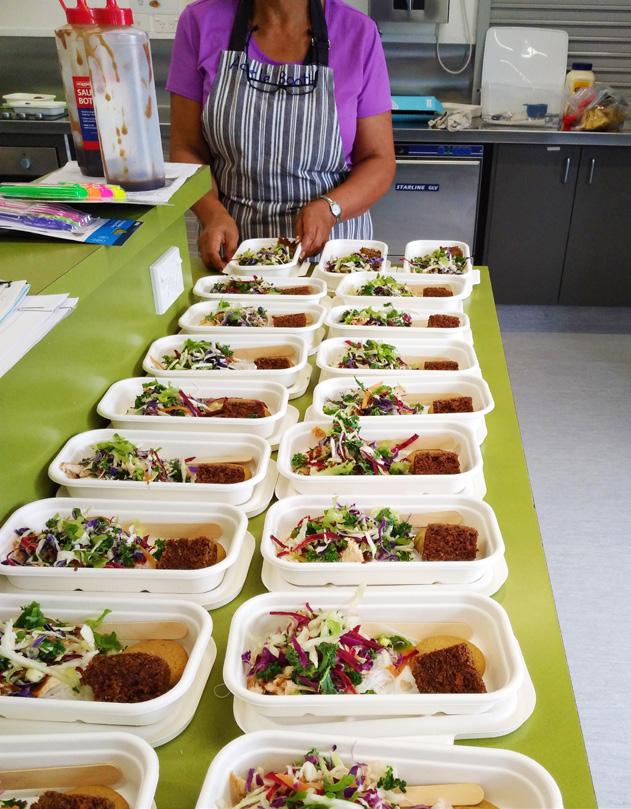



• Top quality, freshly made lunches for learners.


• On-site or delivery service, tailored to suit you.
• Professionally audited food control plan.
• Trained, qualified, local staff.
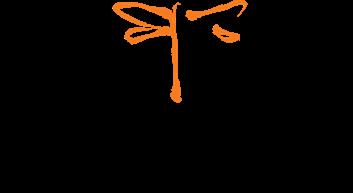
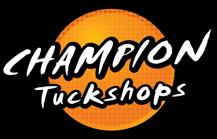
It’s simple: Let our professionals feed hungry students, while your professionals feed hungry minds.

Hamilton has two Kip McGrath Centres that have been providing excellent up to date and relevant tuition for over 20 years. They offer individual learning programmes tailored to the specific needs of each student as identified in the initial free assessment.


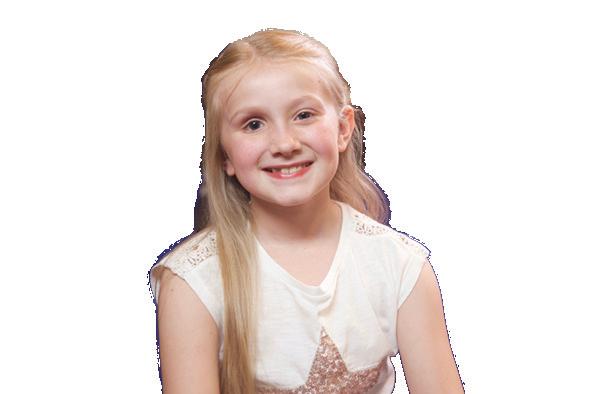
“Mathematics, English, Spelling, Reading, and Writing are taught, including NCEA math, English and science. Programmes are modified as children achieve their goals,” says Paul Kelly, Kip McGrath Principal. “Our goal is to help students succeed in class. We do this through weekly tutoring sessions that are personalized for every student and include one on one attention.”
Students work on individualized programs within a supportive, small group setting run by trained qualified teachers. “They quickly develop a sense of achievement and discover learning is not only successful – it’s enjoyable too,” says Paul. They also have several students who just work online.


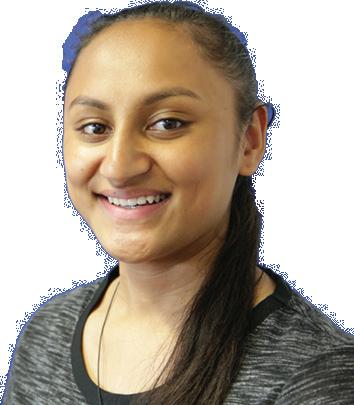
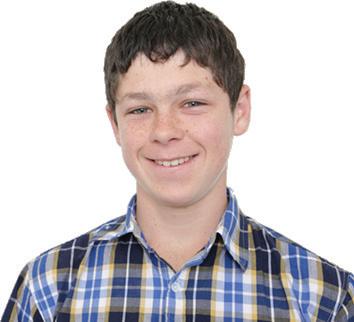
This has grown since the lock down and will be a growth area for them.
The sessions feature a mix of books, worksheets and computer activities providing the variety that a student’s brain needs to keep engaged, motivated and learning. As the student gets older, they have more input into the content of the lesson. This tailors tutoring to their needs and increases engagement, ensuring the time with us is well used. Kip McGrath follows the NZ curriculum so what is taught follows on from what school is covering so students don’t get confused by different methods. The same
content delivered a bit differently which reinforces what school is doing.
Several of the staff are trained in Multi-sensory Structured Literacy and provide 1-1 or small group support using this method of teaching reading.
The centres cater for a wide range of students from duxes of schools to those who really struggle, including dyslexic students. Free assessments can be made online at Kipmcgrath.co.nz or by ringing Paul 07 8482262 Help your child now.



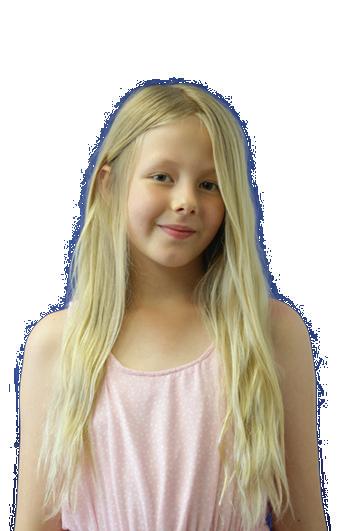













“Our goal is to help students succeed in class. We do this through weekly tutoring sessions that are personalized for every student and include one on one attention.”
Did you know that fewer than four percent of New Zealand’s population gives blood or plasma?
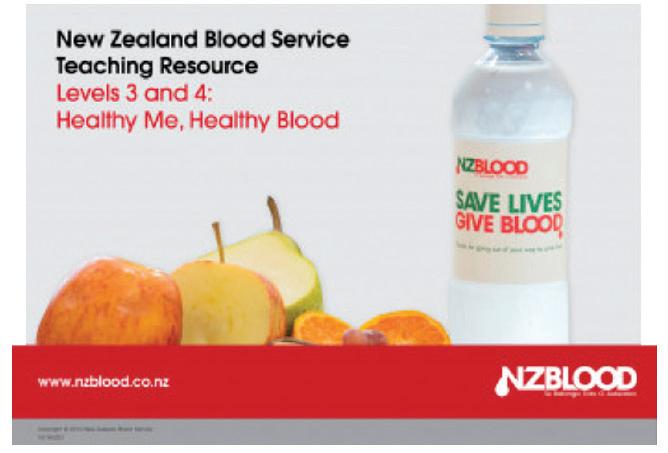


As the organisation that is responsible for the collection, processing
and distribution of blood and blood products in Aotearoa, New Zealand Blood Service (NZBS) relies on the voluntary donations of generous, unremunerated donors to fill the more than 4,000 appointments required each week to keep pace with current demand.
Today’s children are tomorrow’s donors.
To help raise awareness about the constant need for blood and plasma, NZBS has produced a series of educational resources that can be used in the classroom to teach your pupils about how being a donor helps save the lives of fellow New Zealanders.




Let’s Learn About Blood (Levels 3 & 4)
Focuses on developing students’ understanding of the cardiovascular/ circulatory system - one of the body’s most important systems, and how blood keeps our body going.
Focuses on developing students knowledge about how to keep their body (and their blood) healthy by making healthy choices.
Focuses on developing students’ awareness and knowledge of blood donation and how it helps others.
You can find all our educational resources online by visiting nzblood.co.nz/knowledge-hub/teaching-resources | nzblood.co.nz/knowledge-hub/digital-resources
We may be able to organise a blood drive at your school. For more information please contact us on 0800 448 325. nzblood.co.nz

Health and safety strategies are a large aspect to the functionality of any modern-day classroom.
The Ministry of Education (MOE) has many resources and information pages which can provide teachers and kura with informative explanations on how to handle almost any situation.
Some of their resources for health and safety in schools include guidance for setting up a healthy and safe environment for students who may have been diagnosed with a health condition, severe allergies, cancer, or even a brain injury. Ensuring that good enrolment procedures and records are taken during initial meetings with new students is crucial to protect the school for any health or wellbeing risks.
Establishing clear communication between staff in regards to locations of emergency kits, as well as relevant training required,
will mean correct procedure during an emergency will be followed.
The MOE says a clear conversation between staff and whānau is needed for administering medications, sharing details and communicating with staff and other parents about health conditions (if needed) is important.

For some learners a detailed health plan is needed between whānau and the school. “Every learner’s response to and experience of a health condition is different.

“The impact on a learner’s hauora and learning will depend on many factors and will change over time,” says the MOE.
The MOE suggests some learners may make leaps and others may
Give your best self to work and your best self to your family.
experience set-backs due to potential health conditions.
Checking in often with students and gently supporting growth is positive. Outlining realistic expectations is one way to demonstrate successful health and safety strategies.
Promoting healthy lifestyles is another aspect to health and safety according to MOE. Healthy Active Learning is a voluntary initiative established by the MOE. The programme is free of cost and contributes to one of the Government’s key priorities
- improving the wellbeing of children and young people. Managing risks and hazards in the school environment is a significant part of health and safety.
“To ensure a healthy and safe environment for ākonga, staff and whānau, there needs to be good systems and processes in places for managing risks and hazards,” the MOE says.
To find out more about health and safety in schools, make sure to visit: education.govt.nz.
• A dark & quiet bedroom
• Room temperature at 17-20 degrees
• A quality bed
• A regular sleep schedule with a pre sleep routine
What’s important to you? Do you need strategies to get the best out of life?
Speak in total confidence to a Vitae counsellor –call 0508 664 981 24/7 to make an appointment or book online at www.vitae.co.nz/contact/counselling-form/
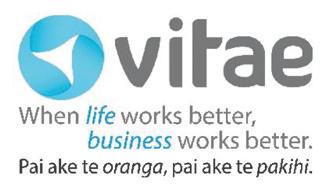
• Get enough light exposure during day to support body clock and rhythms
• No heavy lifting or physical activity two hours before going to bed
• No food two hours before bed
• Once in bed, try not to use phones that have blue light as it disrupts your biological clock
• Missed sleep, takes two nights to catch up – first night deep sleep second night dreaming sleep
• Travelling overseas or not sleeping? Get as much daylight as possible - it will assist you overcoming jetlag and adjusting your circadian rhythms.
Acknowledgement: Associate Professor Leigh Signal, Associate Director, Sleep/Wake Centre, For more information watch Leigh Signal: www.youtube.com/watch?v=Zm4JRVqw9tY
The people you go home to have just as much right to your best self as the people you work with.
Being resilient is helped by getting quality sleep and rest learnings from kiwi research about fatigue.
From cooking healthy meals to participating in sports and recreational activities, there is something for everyone!!
It’s all about having lots of FUN and your kids will have so much fun at our sKids Centre, they won’t want to leave.


We’ll feed them, help them with their homework, let them play and then do a fun activity with them so you can rest assured that they are safe, secure and having the time of their life.

Testimonials:
“Thank you for a wonderful four days with sKids Kapiti Holiday Programme. You have opened a new world to my boys and our family. I will be in touch again when the need arises”.

We also have career opportunities for mature and energetic people to join our team of dedicated Programme Managers and Programme Assistants. Applicants must have a passion for growing awesome Kiwi kids! Hours of work 2.30pm-5.00pm (three to four afternoons a week), plus additional hours during school holidays.
“Because I was unwell and unable to drive, Jools arranged for a staff member to pick up the kids every morning and drop them back off home at the end of the day. This team always goes the extra mile”.
“My daughter has just started her first few days at sKids Kenakena and she has been super happy. Lovely kids and staff and she has particularly enjoyed the afternoon teas! Great communication when enrolling her and on her first day. A big thumbs up to sKids Kenakena!”
“I love the variety of activities and the number of excursions. Saves me having to try and fit these into the weekends. Makes the kids feel like they get out and about and see all corners of the Wellington region. It’s awesome and takes so much pressure off parents who can’t be home with them. I love sKids Kapiti Holiday Programme!!”
Finding time to do the things we want can be a juggle. The barrier to enrolling in study may be, “How can I fit this it in with work or family commitments?”
Southern Institute of Technology (SIT) – Business Division of Te Pūkenga continues to create solutions to make study possible by providing multiple delivery options.
On Campus: SIT campuses provide supportive learning environments for in-person delivery. The main campus is in Invercargill, with smaller campuses located in Queenstown, Christchurch, Gore, Auckland, and Balclutha (Telford).
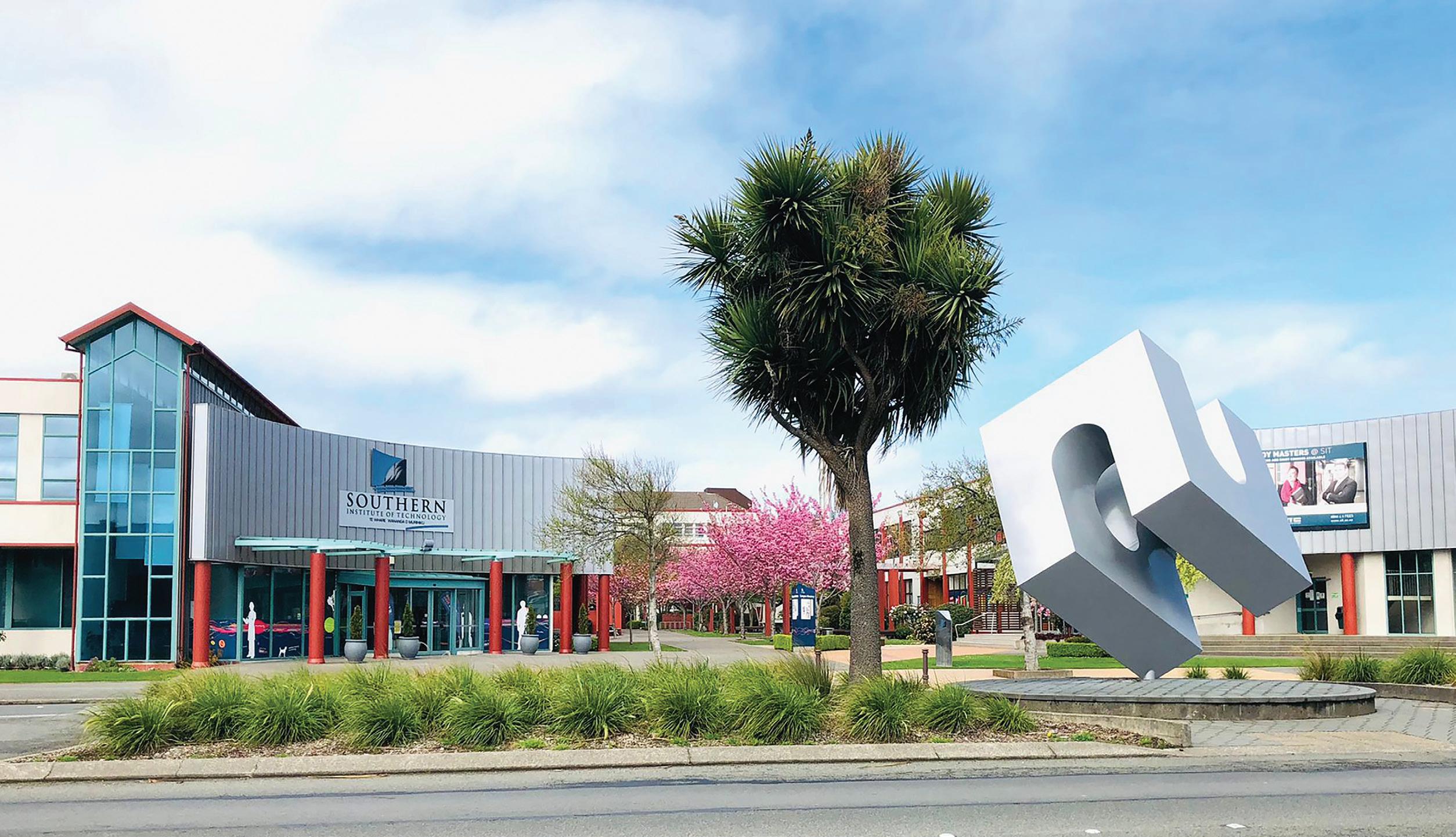
Blended Delivery: a mix of online and face-to-face modes of study, where practical components of qualifications are carried out on campus through various formats, e.g. block courses, weekend workshops, or once-a-week evening class. It offers the best of both modes, with flexible online study alongside completing practical study components in person.
Wellingtonian, Becky Littlewood, achieved a Bachelor of Therapeutic and Sports Massage by utilising SIT’s blended delivery option for her third and final year.


“When distance learning was offered for Level 7 at SIT, I jumped at the chance! Working to pay for flights and accommodation was a lot easier than adding to my student loan,” she said.
Becky’s year of study consisted of three, week-long, teaching blocks at SIT, Invercargill at Massage Therapy clinical practice in her own community.
Becky says her year studying through SIT has prepared her for her future plans.
“I’m looking to develop new branches to my massage practice, and being able to explore these ideas through the work I completed at SIT has really helped.”
HyFlex Distance Learning: new in 2022, HyFlex Delivery is an exciting development in response to changes in the way people live, work, and learn. There are two options to choose from in HyFlex distance delivery: distance, in your own time (asynchronous) or remote, real-time (synchronous).
Charlene Stewart is in her second semester of studying for a diploma in animation using HyFlex asynchronous mode, which suits her perfectly.
“It’s tricky to achieve study as an adult learner, when there are responsibilities to balance, you’re not in a position to leave your full-time job and you’re paying a mortgage, HyFlex has made it very doable,” she says.
SIT2LRN Distance Learning: choose from more than sixty programmes available across various subjects, with the convenience of flexible and accessible online delivery. From certificates through to master’s degrees, NZQA approved and with the Zero Fees Scheme available in 2023.
Joe Horvath achieved a New Zealand diploma in workplace health and safety management through SIT2LRN while working full-time in the aviation industry and being a health and safety representative.

Joe said the programme gave him a broad health and safety understanding.
“It has also given me an appreciation for the levels of responsibilities in a workplace.”
The qualification produced desired results in the form of new career opportunities; Joe now works as the Health and Safety Coordinator for the Environmental Protection Authority NZ.
Enquiries are welcome via phone 0800 40 3337 (0800 40 FEES) or website: www.sit.ac.nz


Education can extend outside the classrooms and going outside to try new exciting things is both great fun and a challenge for school students, which has many learning benefits.
The more people involved, the easier it is to ensure health and safety and the curriculum-based
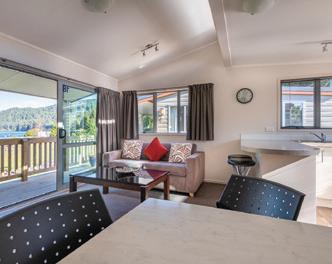
Blue Lake TOP 10 have a wide variety of accommodation options available to suit every budget, from 180 powered and non-powered tent sites to standard and self-contained cabins.

The facilities at the park will keep your group entertained and active, a private or sole use marquee with attached kitchen and BBQ that can accommodate up to 80 people.
The park is central to a variety of local attractions. Lakes Tarawera, Okareka and Rotokakahi are all within 2km of the park, and a short 8km drive will find you in the centre of Rotorua.
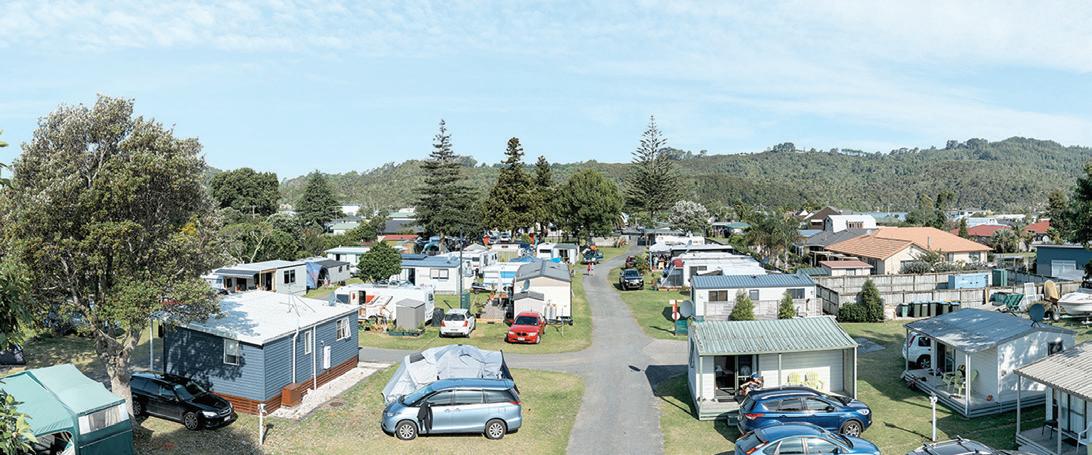
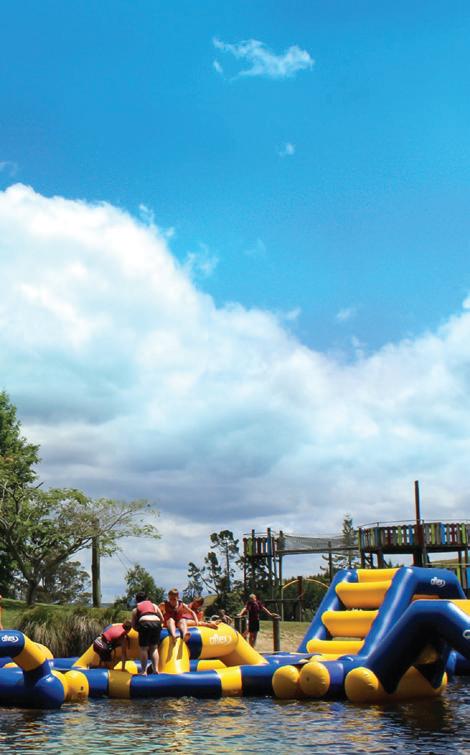

Blue Lake TOP 10 offer large groups heavily discounted rates from February – November (excluding peak season only) and can work with you to accommodate any size group and any budget.

teaching is met, according to Te Kete Ipurangi (TKI).
Education Outdoors New Zealand (EONZ) is the country’s leading professional organisation supporting EOTC and encouraging others to partake in outdoor activities.
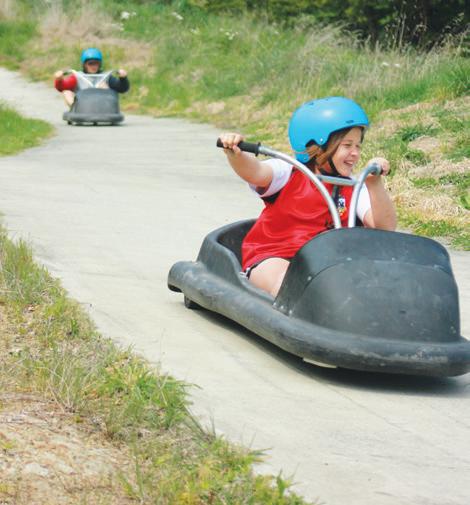



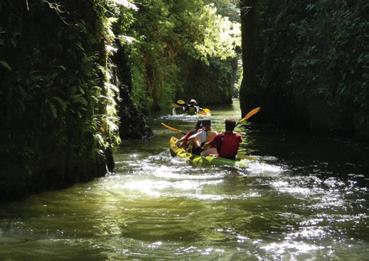

Its aim is to give various people in Aotearoa the opportunity to

 By Natasha Parrant
By Natasha Parrant
explore, learn and combat their fears by getting out and about to do group activities outdoors. Benefits include selfimprovement, building on relationships, teamwork, and attaining confidence while admiring the beautiful nature and improving mental and physical health.
For more information please call 0800 808 292 or visit www.bluelaketop10.co.nz

Education Outside the Classroom (EOTC) is essential for teachers, boards and principals, parents and whānau, and providers to learn about, understand, and provide/take part in.

EONZ wants to:
• Boost the number of people participating in wonderful outdoor activities

• Emphasise the importance of taking part to support and promote the benefits of outdoor education
• Continue to educate people to learn, build on their skills and improve practice.
EONZ believes every young person in Aotearoa should have access to and explore various opportunities to upskill, learn and have fun through EOTC and outside experiences that are taught by various qualified instructors.
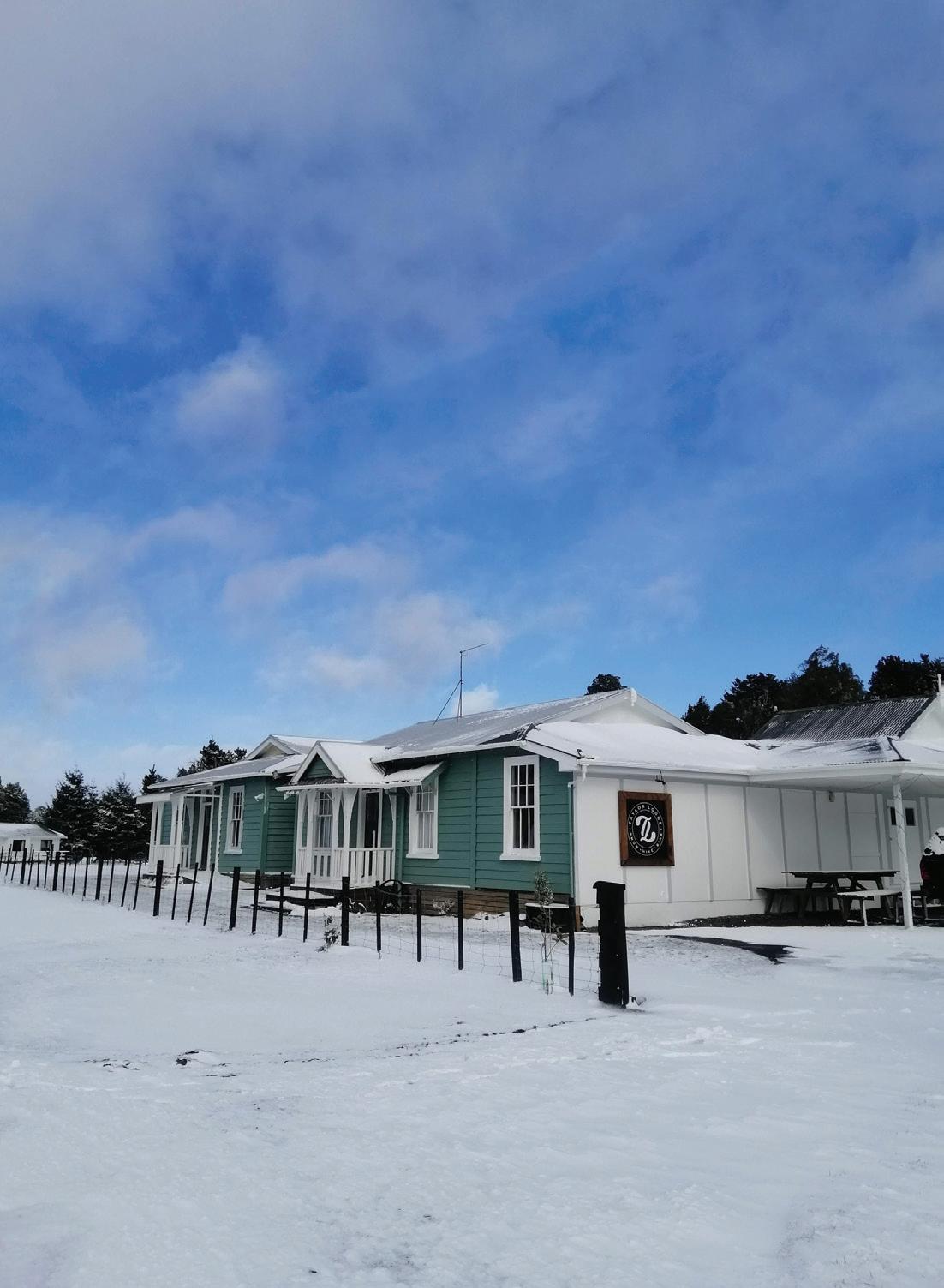
Learning through EOTC teaches young people about strong morals like integrity, respect, inclusion, diversity, equity, care for others and one’s self, and the benefits of sustainability and having an eco-friendly planet.

As EONZ provides a big voice for EOTC, it strives to support, advocate and educate schools on EOTC all over the country.
As said on the EONZ website, “We are committed to fostering quality EOTC that educates for a sustainable future”.
EONZ does this by providing:
• Professional learning improvement opportunities
• Resources, tools, knowledge, and guidance
• Communication all the time backed by excellent evidencebased research
• A strong, communicative, truthful, and reliable voice
• Close relationships and supportive collaborations. Overall, these solutions will improve practice across the education field and for EOTC providers, provide high-quality learning results, make people aware of the importance of the environment and Tiriti o Waitangi fundamentals, allow EONZ to continue to be the lead agency for EOTC and promote shared results.
EONZ can provide schools with professional advice,

resources and opportunities to connect with others. It has the opportunity to create and provide expert improvement and training such as:
• Inserting outdoor education into the school curriculum
• Sustainable curriculum
• Teaching and learning outdoors
• Learning in real-life situations
• Field trips
• Planning camps

• Managing EOTC
• EOTC regulations
• Safety guidelines for outside education
• Rules and systems in place for EOTC
• Rules and systems in place for outdoor education in general
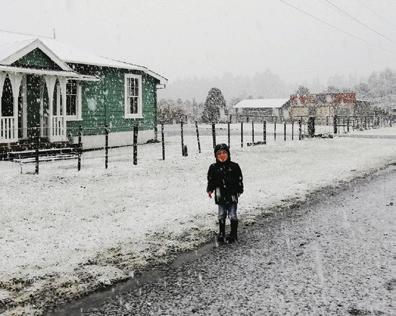
• Environmentally-friendly outdoor education.
To find out more, visit: eonz.org.nz.
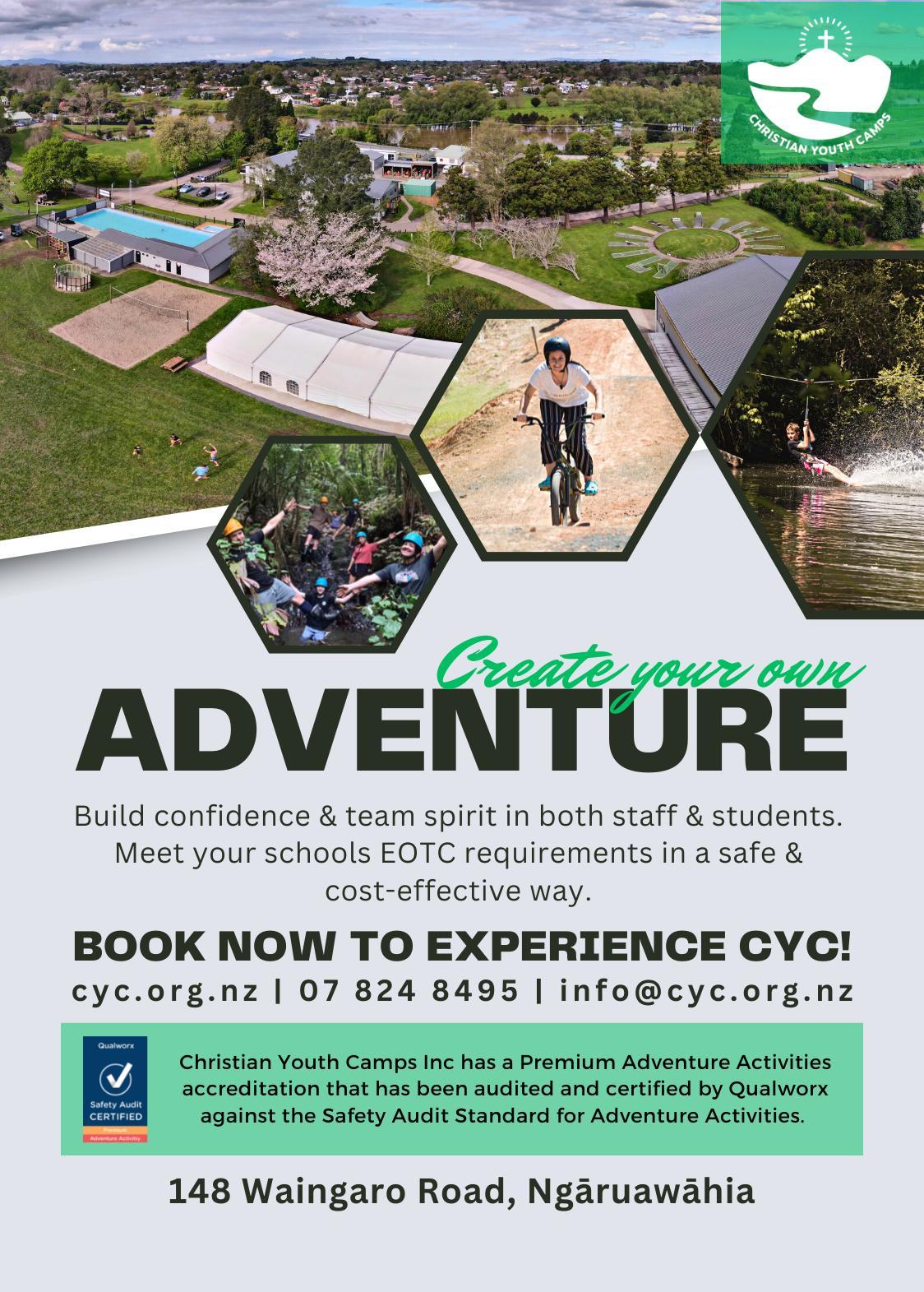
It is a big job to help steer a young person to success. There are many challenges facing them from financial, time, social and many other pressures.
At Kokako Lodge (Auckland) we have introduced the fundamental principles of identity (coming from your ancestry through to the personal morality and lifestyle choices you make yourself) and added them to the future pathway options (of participation and connection). We’re only a few months into 2023 but we are seeing huge results from our “I am Me – I am Worthwhile” Kaupapa.


Along with our traditional high/ low ropes, archery and raft building, we’ve been making greater use of our Burma Trail (blind folded following a rope through the forest). What a great way to face a personal challenge and build connection with your peers!

We’ve also had four new additions to our team (Teulia, Sione, Emma and James) in the shape of 50kg sand filled dummies. The ‘fake blood’ is still coming but you can well imagine the groans our rangatahi will go through finding and rescuing these lot from out of the bush on stretchers!
If you want to really ‘ground’ your students and help them climb the ladder (metaphorically) then we are certainly the right place to come to! Give us a call to check out our availability now. Please email us on Office@KokakoLodge. org.nz and mention you’ve seen this ad for a special deal.


For over 50 years, Portacom Building Solutions have been partnering with education professionals to deliver smart space solutions for schools throughout Aotearoa.

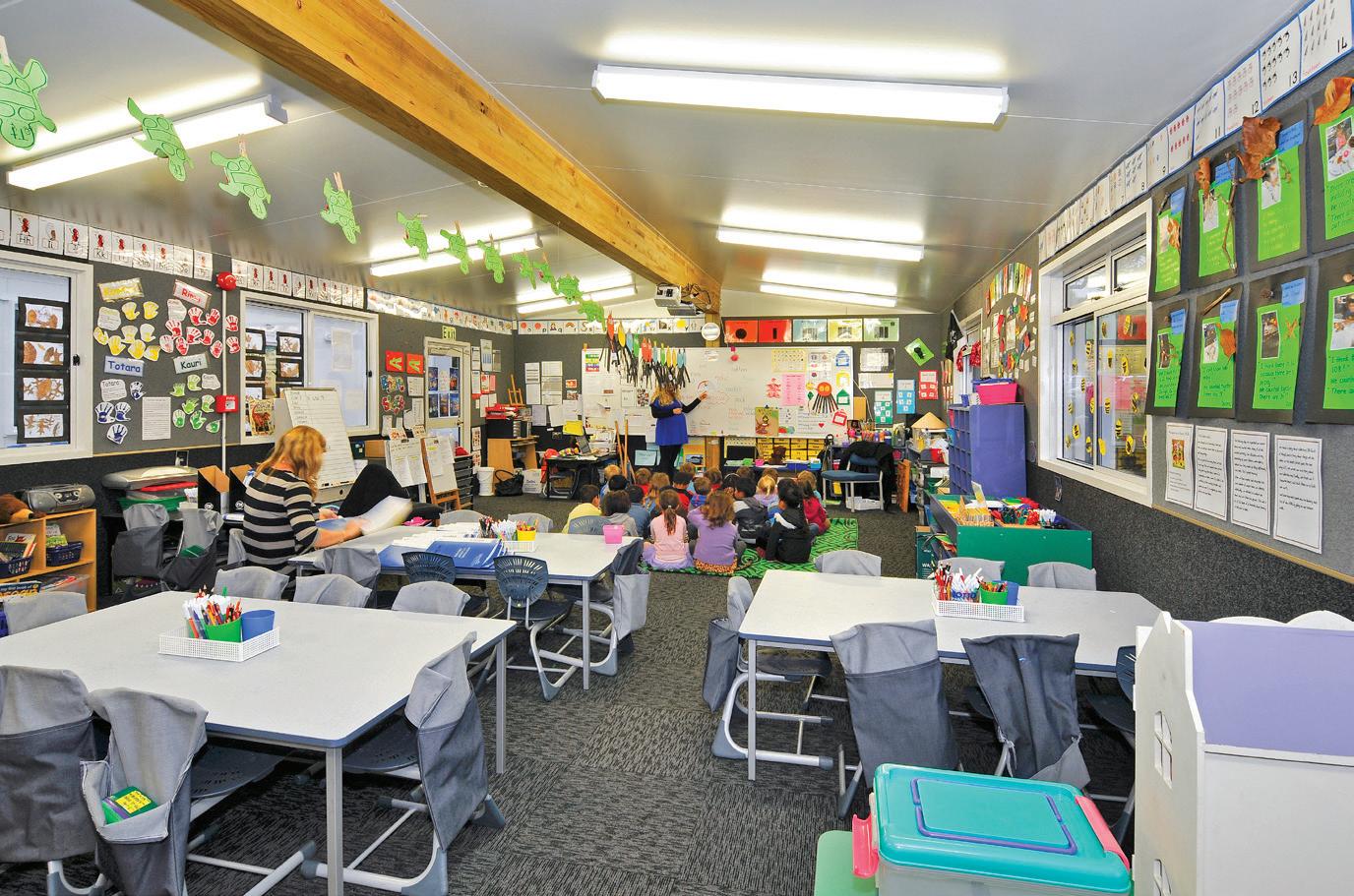
Whether it is space required to accommodate fluctuating student enrolment numbers, a new facility, or space for an emergency response, modular buildings offer both temporary and permanent options for short and long-term solutions.
Modular construction has revolutionised the building process, with factory-controlled quality, reduced construction schedules and a smarter use of materials making it considerably less disruptive and more sustainable than conventional building processes.
When Hutt Valley High School in Wellington required additional classroom space quickly due to an accommodation crisis, Portacom delivered 16 temporary classrooms and 8 ablution blocks
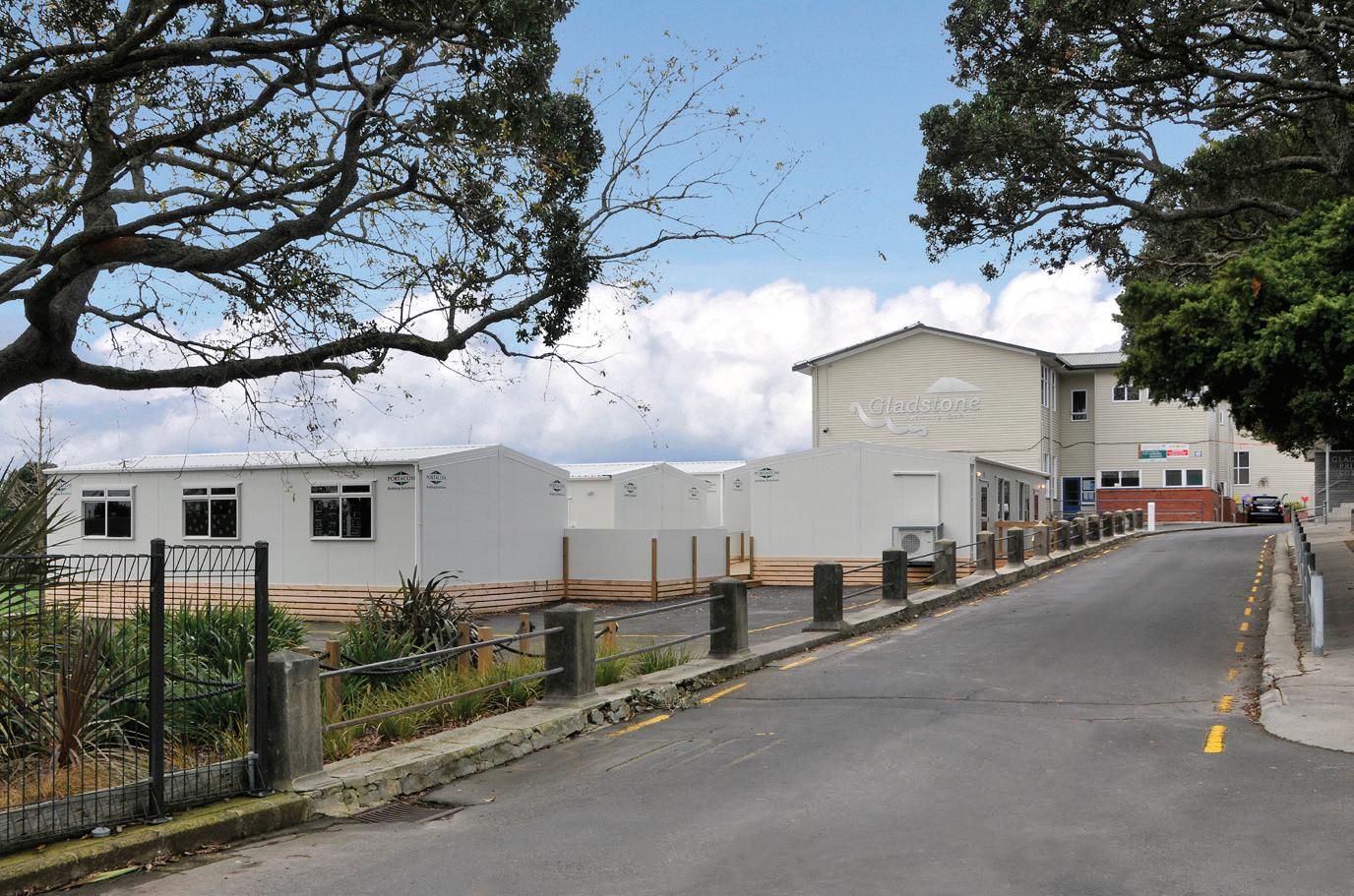
to site with minimal disturbance to students and the surrounding community as a result of an efficient delivery and installation process.
“The Portacom team were flexible and agile, responding to every challenge with a solution focussed approach,” said Principal Denise Johnson.
“Portacom are very experienced at working with schools, they understand the requirements of a modern classroom.”
Modern modular classrooms are designed to integrate within existing school landscapes while managing a range of different site and climate conditions as they are moved from one location to another. The level of flexibility and customisation that modular buildings provide
means that you can create a space tailored to the needs of your school.
“The buildings, while temporary, are of excellent quality, warm, large and light. Staff and students enjoy working in them.”
“The covered walkways provide excellent shelter from Wellington’s weather,” added Principal Johnson.
Learn more about modern modular learning spaces at portacom.co.nz
Quality Building Services Limited is a New Zealand-owned and operated company that provides commercial and industrial air conditioning, mechanical, and ventilation solutions.
QBS Ltd was established in January 2011 in Christchurch. Their services include design and installation, IQP inspections, preventative and proactive maintenance services, energy-saving assessments and implementations, project management services, peer reviews, fault finding, repairs, and electrical services.
QBS Ltd was established in January 2011 in Christchurch. Their services include design and installation, IQP inspections, preventative and proactive maintenance services, energy-saving assessments and implementations, project management services, peer reviews, fault finding, repairs, and electrical services.
The team is very hardworking and believes in providing high-quality services, installing correctly the first time, and always putting the customers first.
QBS delivers exceptional services making sure customers get the best possible outcome. They want to make sure customers are satisfied
The team is very hardworking and believes in providing high-quality services, installing correctly the first time, and always putting the customers first.
QBS delivers exceptional services making sure customers get the
as they take the time to listen to the customer’s conditions, requirements, and expectations.
best possible outcome. They want to make sure customers are satisfied as they take the time to listen to the customer’s conditions, requirements, and expectations.
installs brands that are designed for New Zealand’s conditions and are locally sourced.
Site registered. The staff are alwayscommitted to working within a safe environment.
The team also makes sure installments are as environmentally friendly and affordable as possible because the company wants to do its part in making a positive change in the world.
The team also makes sure installments are as environmentally friendly and affordable as possible because the company wants to do its part in making a positive change in the world.
With the current climate change and environmental changes, air conditioning and ventilation systems are essential. QBS also installs brands
With the current climate change and environmental changes, air conditioning and ventilation systems are essential. QBS also
The fully-qualified team has a lot of HVAC experience, which ranges from private/domestic installations and services to manufacturing various large sites and businesses.
that are designed for New Zealand’s conditions and are locally sourced.
The fully-qualified team has a lot of HVAC experience, which ranges from private/domestic installations and services to manufacturing various large sites and businesses.

Skills also include design, build, and installation from the get-go to infrastructure maintenance refreshes and ongoing service.
Skills also include design, build, and installation from the get-go to infrastructure maintenance refreshes and ongoing service.
QBS is a member of Site Safe and the whole team is Safe
QBS is a member of Site Safe and the whole team is Safe Site registered.
To get in touch please phone Eddie Garden either at (03) 365 8943, 027 438 1440, or email at eddie@qbsl.co
The staff are alwayscommitted to working within a safe environment.
To get in touch please phone Eddie Garden either at (03) 365 8943, 027 438 1440, or email at eddie@qbsl.co
Opening hours start from Monday to Thursday from 8am to 4pm and Friday from 8am to 3pm. Head to 3/308 Wilsons Road, Opawa in Christchurch.
Opening hours start from Monday to Thursday from 8am to 4pm and Friday from 8am to 3pm. Head to 3/308 Wilsons Road, Opawa in Christchurch.
Visit the website for more information www.qbsl.co.nz
Visit the website for more information www.qbsl.co.nz
In early February, the North Island was hit by Cyclone Gabrielle which is the deadliest cyclone in New Zealand since 1968 and the costliest tropical cyclone on record in the Southern Hemisphere.
With damages estimated to be at least $13 billion, Cyclone Gabrielle has impacted everything from homes and private property to schools and public property.
Ministry of Education head of property, Sam Fowler, says Cyclone Gabrielle has caused damage to 200 schools.
“In Tai Tokerau, the property team is working with around 60 schools that have reported damage from Cyclone Gabrielle,” he says.

The damage was widespread and continues to be felt across the region. Sam says in Hawke’s Bay and Tairāwhiti, approximately 100 schools reported damage.


He says five schools have significant damage which means they cannot open on site.
The Ministry of Education Property Team is working with those schools to get them up and running and to determine the correct long term property response.
“Most of the school property damage across Te Tai Tokerau came from high winds – trees falling, fences down, shade sails ripped.

“Power outages (mostly from fallen trees) were widespread and long-lasting, leading to major dropouts in cell coverage and internet service for many schools, in the far north particularly,” Sam says.
Sam says the team will be meeting the cost of repair of Ministry owned property so that schools can continue to use their regular property funding for their property priorities.
“If more money is needed, we will work with the schools to understand the full cost of the reinstatement works,” he says.
“We have made available $12,000 to each affected school to help with the immediate clean-up.

“The money is there to help with things like carpet cleaning and drying, repairing broken windows, downpipes and lighting, tree removal and fence repair.”
Each school has a property advisor who will work closely with them if they need guidance around the clean-up, remediation or repair.

They can assist with things from assessing property damage to ensuring schools can receive the funding they need.
The Ministry of Education says it’s important to document the damage so they have a full picture of said damage to provide to the Ministry’s insurance company.
For a list of property staff contact details, visit the Ministry of Education website at: www.education.govt.nz.
“Power outages (mostly from fallen trees) were widespread and long-lasting, leading to major dropouts in cell coverage and internet service for many schools, in the far north particularly.”
- Ministry of Education head of property, Sam Fowler
Schools will need to document photos of the damage, maps of the damaged buildings with description of the damage in each location, and as much information as possible about the source of the damage.
The Ministry also recommends considering what information schools will need for their content’s insurance claim at the same time – essentially, take lots of photos to document the losses.
Before any rebuilding or construction-based repairs can
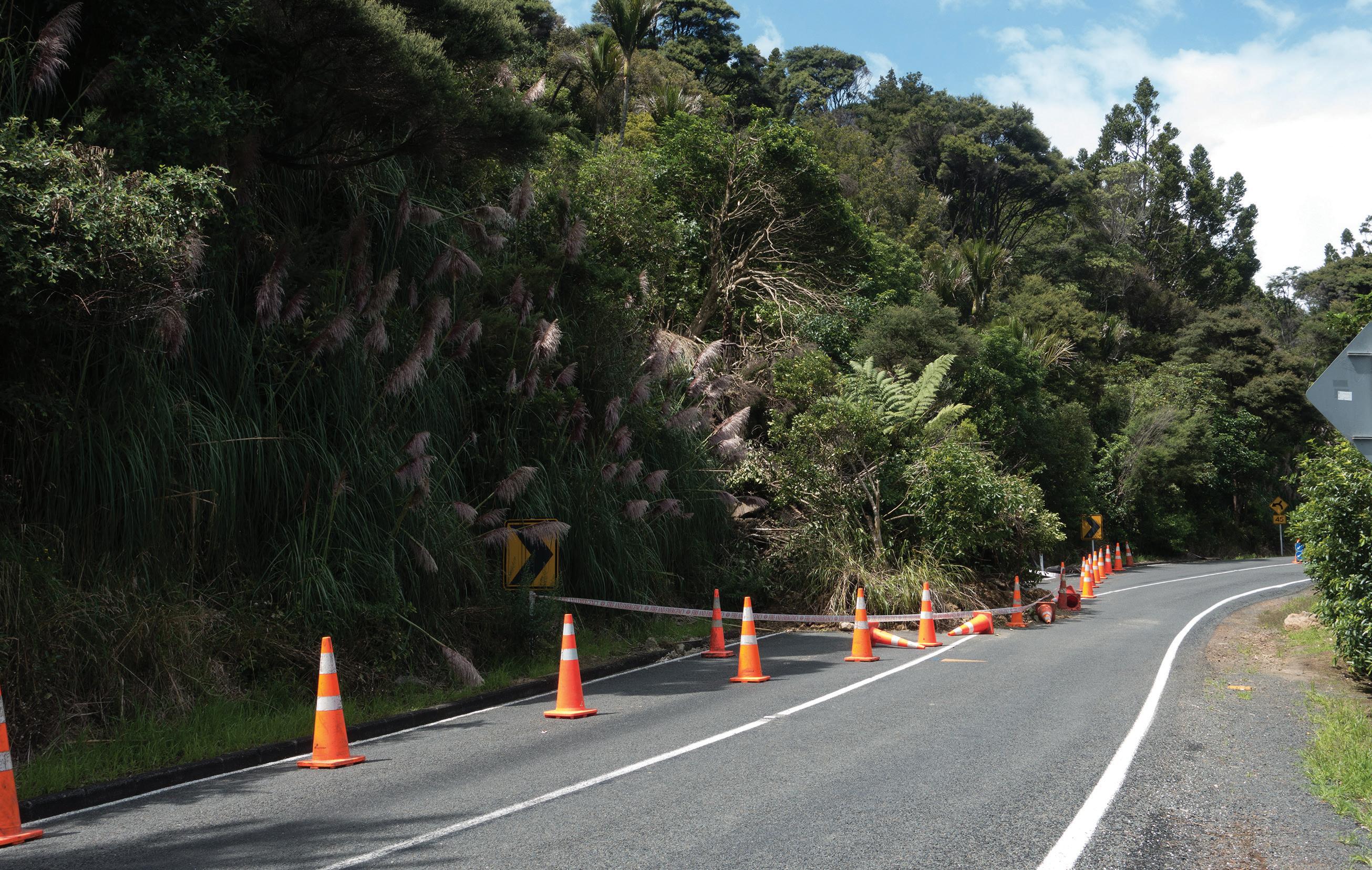

take place, it’s important for schools to follow health and safety guidelines while cleaning up.
The Ministry says to take special care around floodwaters as all floodwater and debris deposited by floodwater will be contaminated.
Steven Prosser is the Owner / Director of the company and has over 14 years in the Construction industry here in New Zealand and overseas.
We are a team of young guys who take much pride in our high
standard of construction, whether that is renovations, alterations or new builds. We strive to exceed our client’s expectations and enjoy working side by side to achieve their dream project. We are lucky to have a great team of sub-tradies and designers working closely with us, to allow for our work to be finished efficiently and to a high standard.

Here at Prosser Construction LTD we value our customers and ensure the building process is enjoyable and a stress-free process.
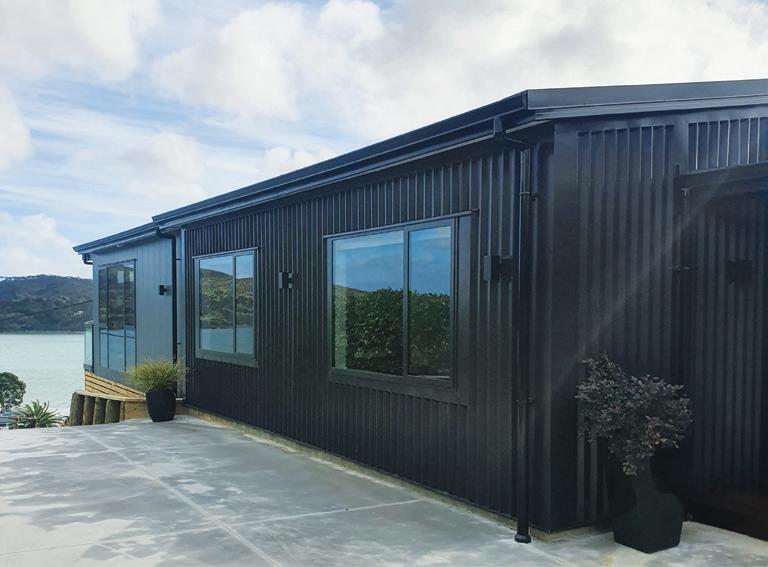
“The level of risk will be generally low unless there has been wastewater contamination, however we recommend you assume the floodwater has been contaminated and treat it as such,” it says.
Schools are recommended to restrict access to any flooded areas until they’ve dried out, remove all debris and rubbish where practicable, wear gloves and gumboots when removing debris, washing or disinfecting, wash internal or external hard surfaces and disinfect internal and external play areas where possible.

“The Government has committed to investing heavily in the strong public services that New Zealanders need, in hospitals, schools and housing.”
Due to the nature of the damage caused by Cyclone Gabrielle, it’s possible asbestos may have been uncovered or exposed.
Asbestos is extremely harmful if inhaled and there are strict rules around handling it.
P. 09 415 6476
An asbestos refurbishment survey is needed before removing wall linings for all pre2000 buildings in New Zealand.
A qualified contractor is required to handle any asbestos so if a school has found asbestos during
E. Rob@miropm.co.nz
www.miropm.co.nz
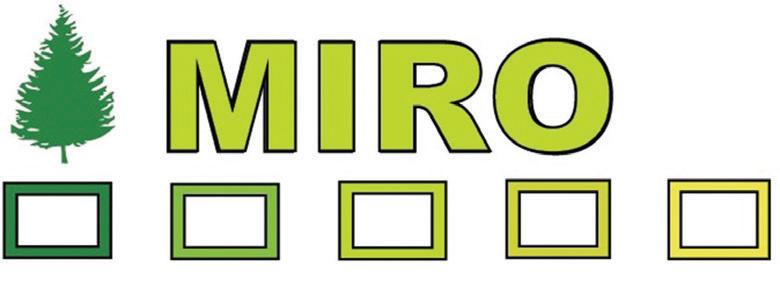
flood clean-ups and preparation for repairs, it’s important to contact a qualified contractor.
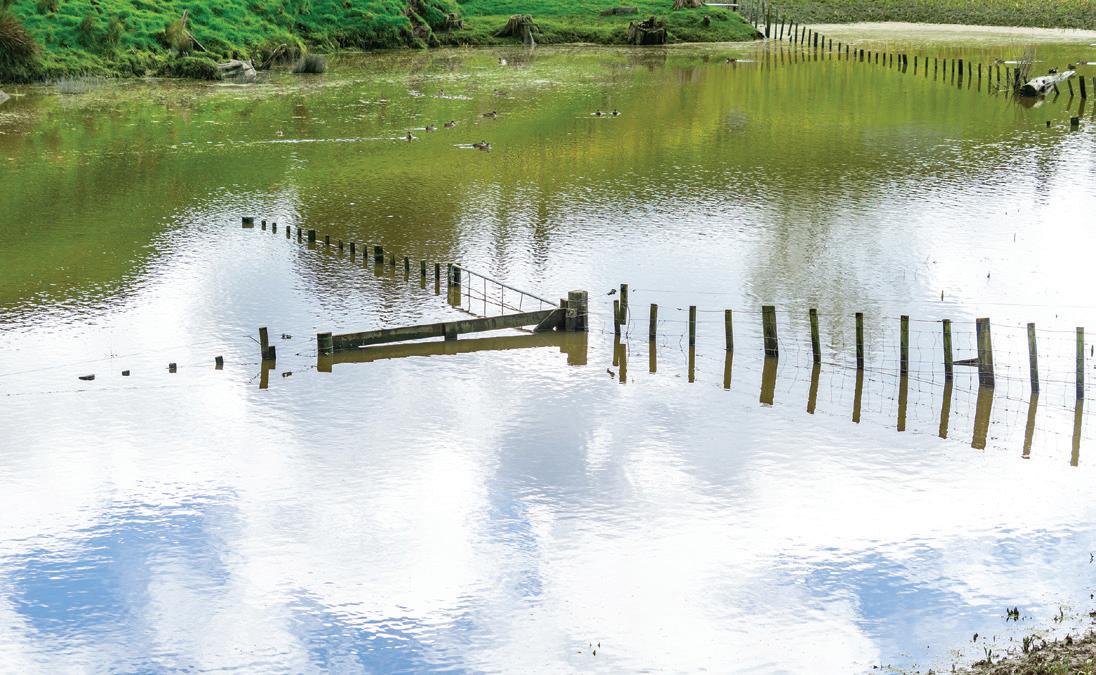
The New Zealand Government is committed to ensuring public services such as schools are assisted in every way possible during the cyclone clean-up and recovery.
The 2023 Budget, to be delivered on the 18th of May, will be focussed on cyclone and flooding recovery as well as the cost of living.
Finance Minister, Grant Robertson, says the recovery is going to take a long time and the government will need to step up with considerable resources to repair and fix broken infrastructure.
“The Government has committed to investing heavily in the strong public services that New Zealanders need, in hospitals, schools and housing,” he says. Grant says the Government has taken action quickly to provide certainty and assurance in these early stages of the recovery and that further support is coming.
Because of an increase in the demand for specialist workers, the government announced a new Recovery Visa in late February.
Immigration Minister, Michael Wood, says the new Recovery Visa will provide additional specialist workers to support cyclone and flooding recovery.
“In the short term, we are likely to need experts such as insurance assessors, infrastructure and utilities engineers and technicians, heavy machinery operators and debris removal workers to support the experts we’ve already got in the country,” Michael says.
“The visa covers the mix of workers need for clean-up and recovery, including construction workers.”
For more information and assistance in cyclone recovery: www.education.govt.nz
www.civildefence.govt.nz
www.beehive.govt.nz
www.govt.nz
Our skilled and dedicated construction team is led by Robert Howdill and his sons Thomas & James. Robert has been in the trade for over 35 years, carrying out projects within the education, commercial, retail, hospitality and residential sectors in the UK and NZ.
Some of their latest projects include: Warkworth School, Maungawhau School, Mt Richmond School, Windy Ridge School, Pakuranga Heights School, Bairds Mainfreight Primary School, and many more across Auckland.

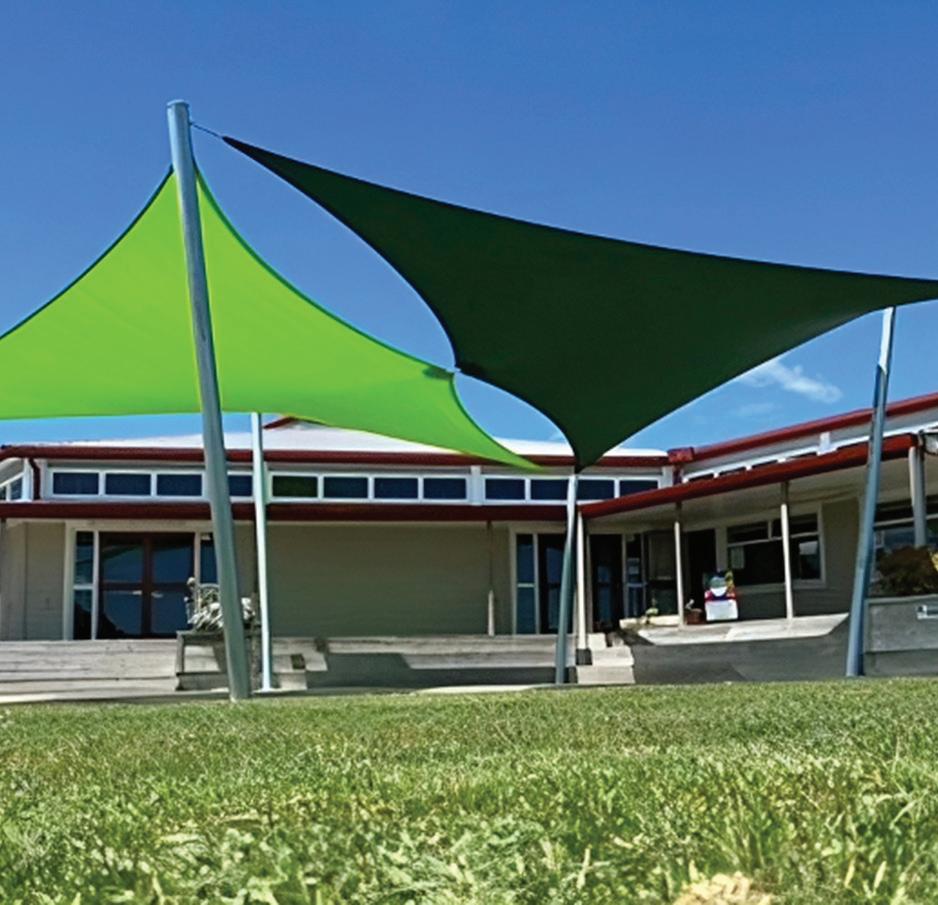
Their projects involve a vast extent of internal construction work, refurbishment of classrooms, refurbishments of accessible toilet blocks, installation of insulation to wall cavities, upgrade of lighting, merging individual classrooms to become an ideal environment for ILE purposes, removal of old pipe work and boilers so heat pumps can be installed, painting autex & flooring.

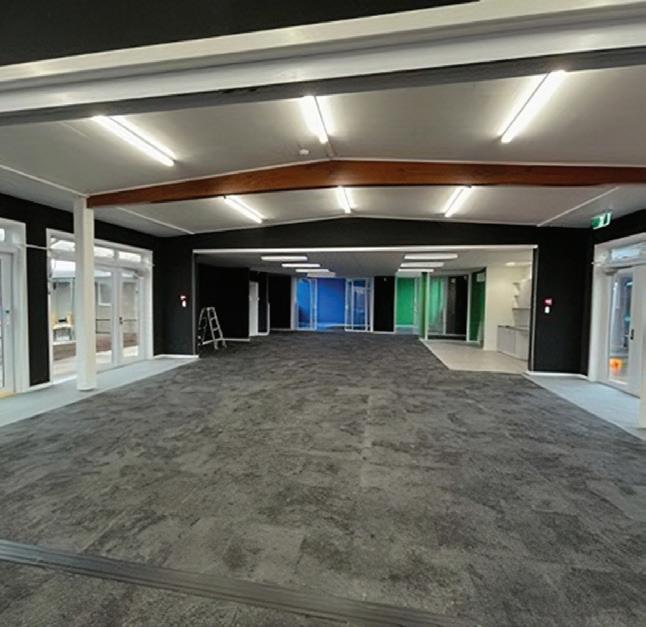
Projects that require work to be carried out outside are, replacement of exterior windows with bi fold doors or aluminium units, repair and replace the hard-court area with rubber matting, shade sail coverings, decking and astroturf.
The company has seen gradual but sustained growth since its formation in 2009 and has grown its reputation of providing the highest quality construction; to work within our client’s budget; to complete the project on time and provide excellent aftercare.
“In the short term, we are likely to need experts such as insurance assessors, infrastructure and utilities engineers and technicians, heavy machinery operators and debris removal workers to support the experts we’ve already got in the country,”
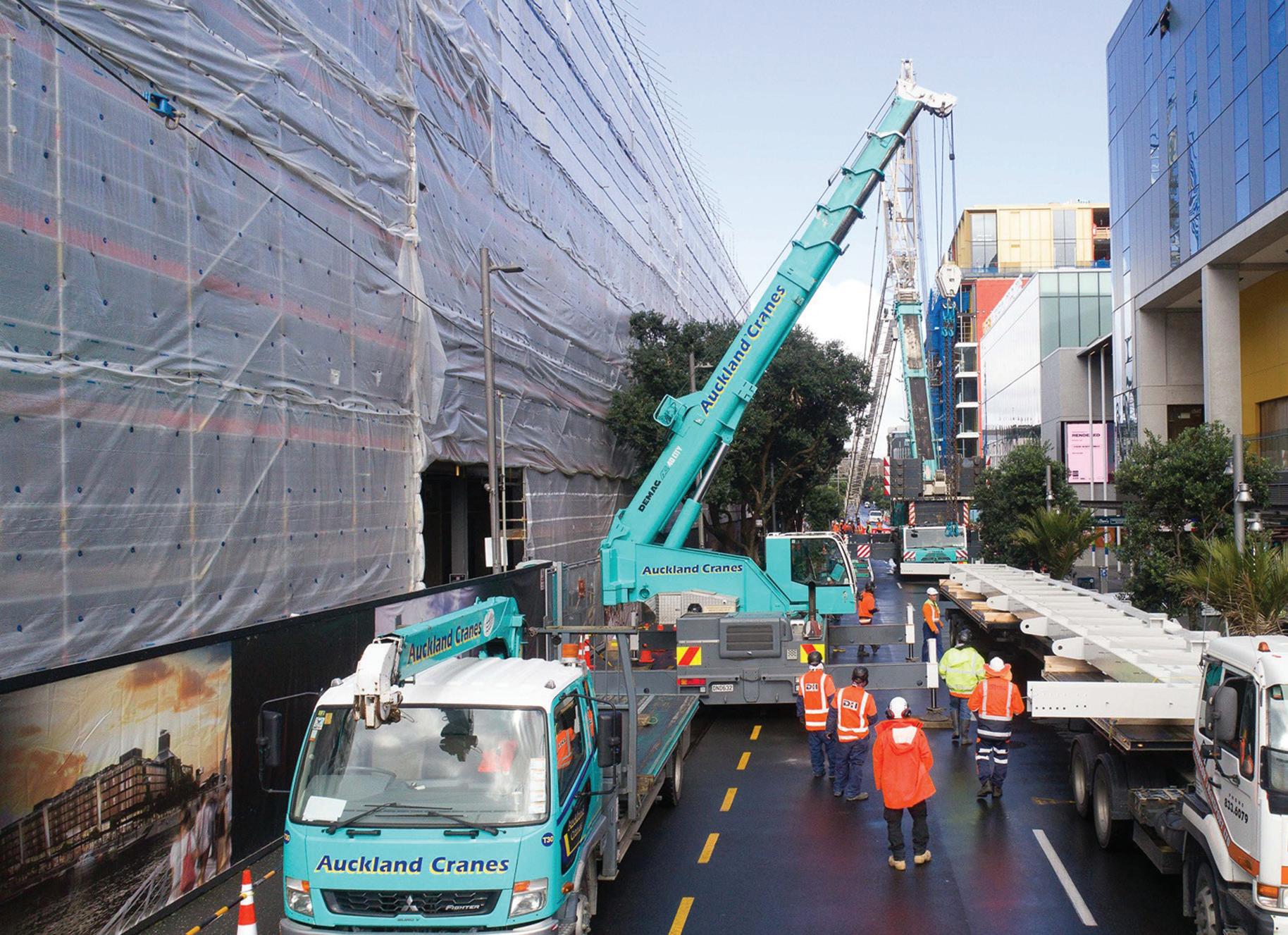
Waikato Cranes opened in 1970. With over 40 years’ experience, Waikato Cranes services the wider Waikato region including the Coromandel Peninsula. Providing responsive crane hire services to diverse clients in the region, Waikato Cranes has become the go-to crane hire provider for manufacturing, building and farming clients.


Solar power is a great answer to sustainable energy and schools are being encouraged to adopt it.
Sustainable Energy Association
New Zealand (SEANZ), chairman Brendan Winitana, says schools are the perfect place to install solar because they consume all their energy during the day and can, therefor, maximise the financial benefits.
“With a larger installation, it may even be possible to become 100 percent renewable.
“In addition, solar energy in schools presents a great teaching opportunity to learn about and participate in the use of a sustainable and renewable energy source.
“The benefits to the school are threefold – financial, educational and environmental,” he says. Installing and financing a solar system is a significant investment.
SEANZ and the Ministry of Education have agreed that only SEANZ member suppliers and installers can supply and install
High quality solar energy systems installed by experts. Whether you are looking to improve your businesses sustainability credentials, add value to your house, reduce your carbon footprint, or simply take control of your energy bills, CPS Solar Christchurch will design and install the best system for you, customised to meet your needs.

solar PV and related technology to schools in New Zealand.
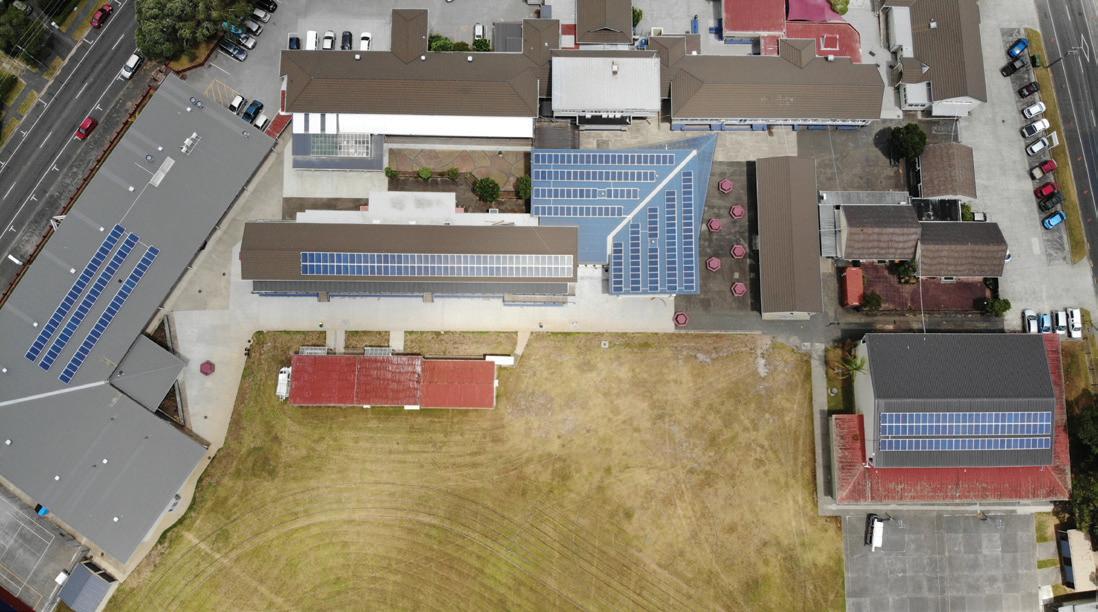

This is to ensure a strict code of conduct is followed and clients get the very best in solar installation.
SEANZ members supply and manufacture products that comply with International and New Zealand standards that deliver results according to AUS/ NZ Regulations.
Members also have a wealth of trustworthy knowledge and skills that can be consistently relied upon.
A SEANZ member must disclose any historic legal and court disputes, continue to run their business operations with honesty and integrity, apply their skills and knowledge ethically in the interest of the clients, and agree to report any breach of said rules by another SEANZ member.

Brendan says every school is different.
“The cost of your electricity, the amount of electricity you use, your useable roof space and your financial position are all factors in the size, type and cost of an installation,” he says.
Lease-to-own is a great option for schools who have little or no capital to invest upfront.
“Repayments on the system can be funded out of the electricity savings over a potential period of 10 years or less.
“In many cases, electricity bill savings are greater than the payments so it’s possible to be
cash-flow positive from the start and to own the system at the end,” Brendan explains.
He says another great option for schools with little or no upfront capital is a power purchase agreement.
A solar power purchase agreement (PPA) is a financial agreement where the solar installation (solar panels, including installation, maintenance and upgrades) is provided at no cost to the school.
The power generated from the installation is purchased at a fixed monthly fee, guaranteeing savings on the school’s power bills.
Some schools however, can finance solar installations themselves through capital, grants, fundraising or their own finance.
“With a short return on investment and a guaranteed 25+ year life of panels can provide the greatest savings for those who are able,” Brendan says.
Brendan says a recent and exciting development is the potential for a school to send excess power back to the grid and sell or gift energy to their communities.
For more information about how solar energy can impact schools, visit: www.education.govt.nz
You can go online to www.seanz. org.nz/directory to find a SEANZ approved installer in your area. It’s important to get a range of quotes and a member will be able to offer you several.
For more information visit the Sustainable Energy Association New Zealand, Call 021 2893 893, email rebecca@ seanz.org.nz, or visit: www.seanz.org.nz .
A growing number of schools across Hawkes Bay and beyond are taking a lead in sustainability and installing solar systems through a unique payment model, offered by Integrated Energy.
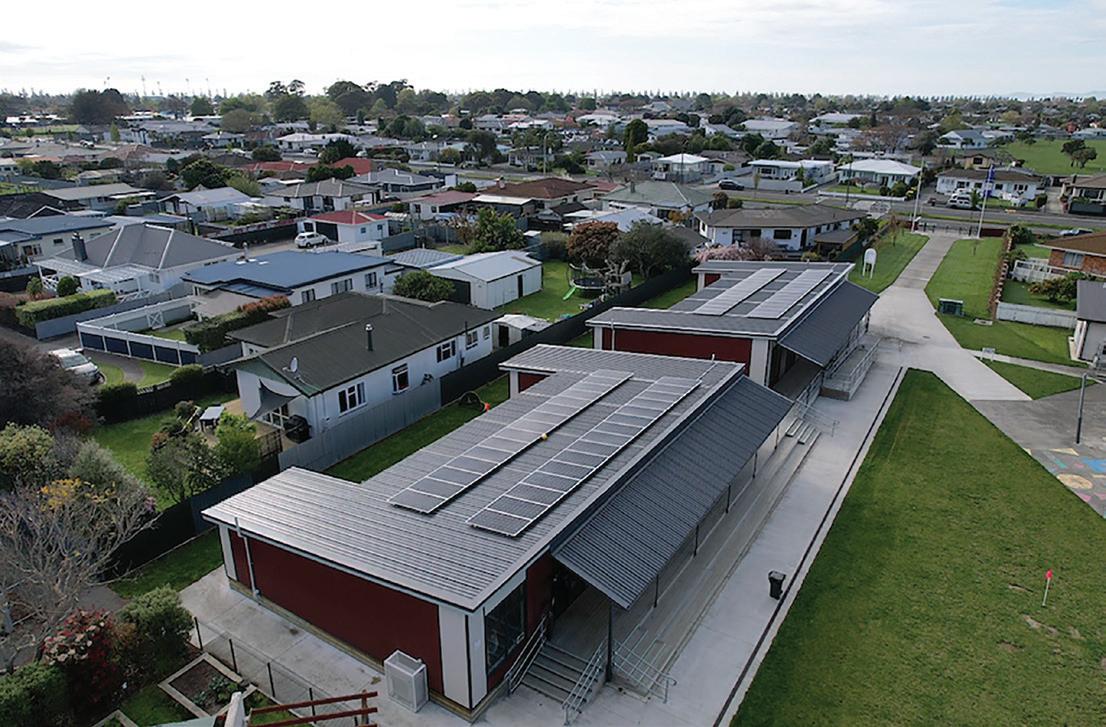
Integrated Energy aim to provide quality solutions, allowing schools to achieve more sustainable practices by installing, maintaining and managing the entire process for schools, at no capital cost. The system is paid back through the solar energy generated and then used by the school as an alternative to energy from the grid. There are no extra costs involved and savings start from the moment the system is enlivened.
In 2022, Integrated Energy worked closely with the Ministry of Education to develop an approvals process and energy contract which is standardised for all schools and allows all parties to have a thorough understanding of what’s involved.
Integrated Energy worked with several schools in 2022 including the oldest state secondary school in Hawkes Bay: Napier Boys High School who stated that there was “Minimal disruption and a really quick and easy process for the school to go through.”
Both Onekawa School and Tamatea Intermediate in Napier were keen to see the benefits of solar for their schools along with being able to use the data provided by Integrated Energy’s solar monitoring systems to educate students on the impact of solar. The 40kW system installed at Onekawa School will produce around 80percent of the school’s overall energy use annually.
Jo Smith, Principal of Tamatea Intermediate in Napier, said “We are delighted with our new solar panels and the learning opportunities this has created for our tamariki”.
Students of today are our future leaders and decision-makers and by making sustainable practices more accessible, we can foster imagination for future projects
and hopefully the protection of our planet.
Integrated Energy’s vision is to be a leading provider of solar energy solutions contributing to New Zealand’s goal of 100 percent renewable energy by 2030. The opportunity is available to all schools to partner with Integrated Energy on New Zealand’s sustainability journey.
 Onekawa School
Onekawa School
We’re one of the largest tutoring providers delivered by qualified teachers globally. We teach over one million lessons annually. For over 45 years we have tutored students using explicit instruction that works. We teach over 150 number of students weekly and students receive a tailored learning programme.
A parent will come to us unsure of ‘why’ their child is struggling in class, so we conduct a free learning assessment with a qualified teacher. This helps us, and the parent, identify any gaps in the student’s learning including any strengths they may have. We then set goals with the student and tailor our curriculum to help the student keep up in class. Quality lessons are at the core of what we do. Our lessons are carefully planned and delivered face-to-face with the same tutor weekly, in one of our centres or our purpose-built online tutoring platform.
Face-to-face online lessons allow our professional tutors to teach in real time. Every lesson is focused on achieving the student’s goal. Our lessons are fun and interactive. The teacher tracks and monitors a student’s progress against their goals, adjusting the level and focus where necessary.

Our lessons run in small groups providing a supportive and individualised environment. Students also receives one-on-one tutoring. They move from task to task in 10-minute slots. Our tutors are actively involved and a step ahead of each student.

Students are provided with on-the-spot feedback, badges of achievement and rewards for recognition to boost their selfesteem. Parents and guardians are also always updated. We’re not homework help or test prep providers. We solely help

children who are struggling in class. Our tutors know how to properly plan, teach and progress students.
We’re committed to helping students reach their highest potential.

Career expos are a popular way for schools to introduce their students to numerous career options. These events bring together representatives from industries and businesses to interact with students and provide them with valuable insights into what a particular career entails.
One of the primary benefits of career expos is that they allow students to explore different career options. Many students are unaware of the career paths available to them. A career expo allows them to interact with professionals from different fields and gain first-hand knowledge about the skills and qualifications required for a particular job.
Career expos also allow students to learn about the latest trends and developments in different industries. The world of work is constantly evolving, and the NZ Careers Expo offers students a glimpse into the latest innovations and advancements in their chosen field. This knowledge can help them make informed decisions about their career paths and prepare them for the ever-changing job market.
The chance to network with professionals is another benefit the expos provide. Students can connect with individuals for guidance and advice on achieving their career goals. They can also learn about internships, job shadowing, and other opportunities to gain experience in their field of interest.
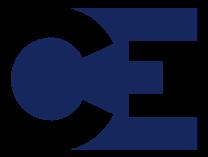
Students attending this years expos will once again be able to get first hand experience in the exciting fields of tourism and hospitality, as we partner with “Go with Tourism” to showcase the many exciting careers and opportunities within this growing sector.

To learn more about the NZ Careers Expo and register your school for free, visit https://careersexpo.org.nz/for-schools.
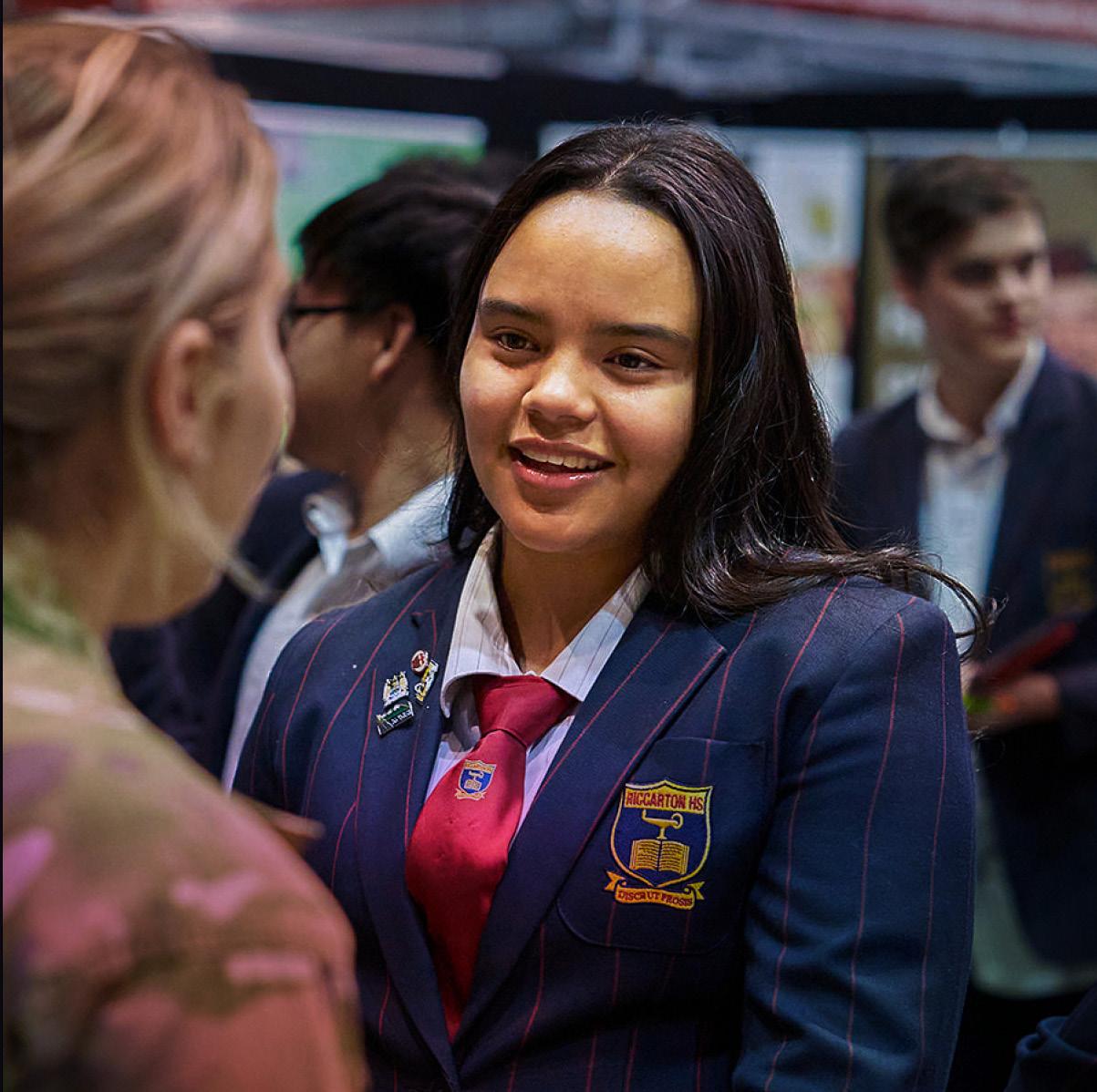
Check out the



Hundreds of employers, educational, vocational, and training providers to explore. Start a converstion. careerexpo.org.nz

Christchurch Expo - Thursday 11 - Saturday 13 May, CHCH Arena .
Palmerston Nth Expo - Thursday 18 May, Central Energy Trust Arena.
Hawkes Bay - Tuesday 23 May, Pettigrew Green Arena. Napier.
Hamilton Expo - Sunday 11 - Monday 12 June, Claudelands.
Auckland Expo - Thursday 15 - Saturday 17 June, The Cloud.
Wellington Expo - Friday 23 - Saturday 24 June, TSB Arena.
Dunedin Expo - Wednesday 28 June, Dunedin Town Hall.
The NZ Careers Expo: In-Person & Online @ careersexpo.org.nz

The Health and Safety at Work (Asbestos) Regulations came into effect in April 2016. As part of the legislation, any buildings (including schools), built prior to the year 2000 are required to have an Asbestos Management Plan (AMP), which clearly sets out location of any possible asbestos and details how it should be managed unless proven otherwise by an assessment from a suitably qualified and experienced surveyor.
The condition of the asbestos at these properties should be inspected and monitored on an ongoing basis and any changes recorded.
New Zealand Demolition and Asbestos Association (NZDAA), president, Helina Stil, says “We’re now seven years on and it would be fair to suggest that many of the plans that were created have not been maintained or up dated and that routine condition monitoring is unlikely to be happening.”


The reason for this she explains is that the duty to review and update the AMP was not widely understood.
“The duty to manage required AMPs to be developed between 2016-2018 and to review these after five years – which means that any AMPs developed in this time period are due to review. The PCBU must inform contractors and others of their AMP’s contents to avoid misunderstandings and accidental damage to in-situ asbestos material.
The asbestos regulations require that all Persons Conducting a Business or Undertaking (PCBU), including schools, ensure that all asbestos in their buildings and facilities is identified, (so far as is reasonably practicable) and that any risks that may lead to exposure are minimised or managed.
As the person in control of their workplace, the principal will often be the PCBU or person responsible for managing the asbestos in their school. In addition, any staff working on or maintaining these buildings should be fully across the Asbestos Management Plan and it should also be made available and provided to any contractors conducting work at your school.
For bigger projects such as demolition or refurbishment works, an asbestos
refurbishment or demolition survey is required by law, before any work can commence. Asbestos that is in good condition and undisturbed doesn’t pose a significant health and safety risk. However, there is a risk of asbestos fibres being released and disturbed during refurbishment and routine maintenance tasks. It is therefore important that everyone working in and on such buildings knows the locations and understands the potential risks and how to safely manage these.
“Without adequate procedures in place for implementing the use of your Asbestos Management Plan and ensuring that it is reviewed and maintained on a regular basis, the potential for asbestos to accidentally be disturbed could actually be very high.

“With so many buildings taking a hammering following recent weather events, it is likely that the condition of some asbestos containing materials may have changed or been damaged. I wonder how many PCBUs actually referred back to their AMPs before commencing any clean up.
“We encourage all schools to dust off their Asbestos Management Plans and have a proper review of their asbestos situation.
“If they are at all unsure about how to go about this then we recommend that they engage a competent person such as a qualified asbestos surveyor or assessor to assist with the identification of and review of their asbestos and to make it an annual procedure to monitor for any changes.”
The NZDAA has also published a new ‘Practice Notes’ to assist PCBUs on cleaning up after a flood or storm and is available to download free from their website.
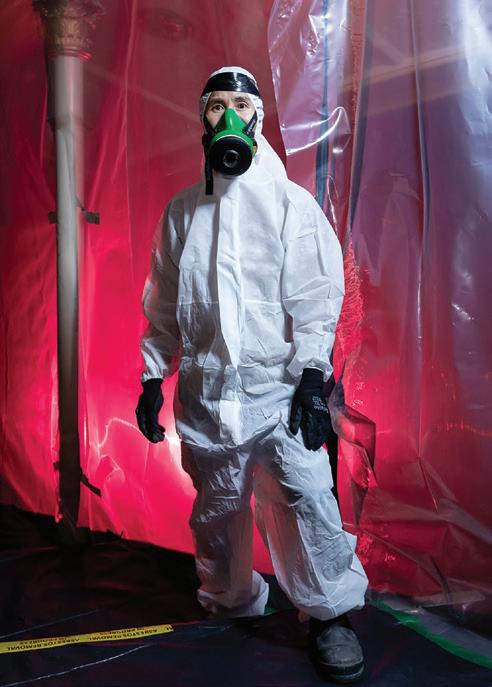
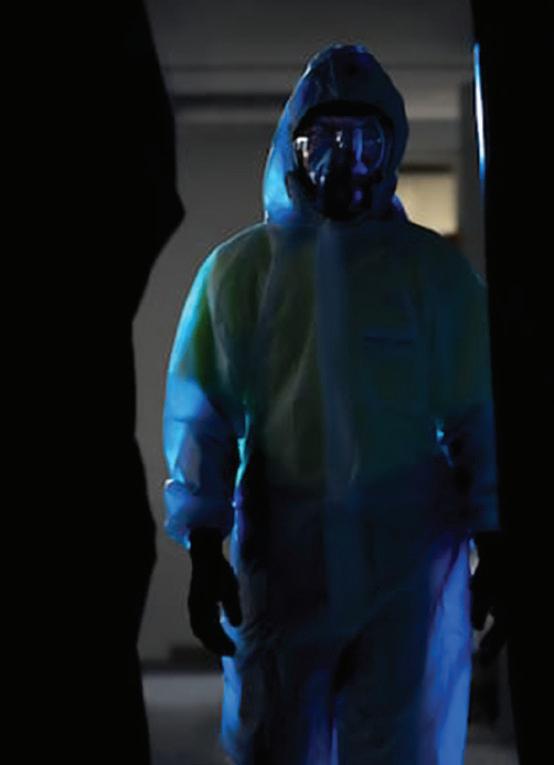
With over 2,500 schools in the country, you would think that we would have a good idea where you would find asbestos in these buildings.
Although many of the buildings have had management surveys conducted for the presence or presumed presence of asbestos, there are still many unanswered questions. Proper identification of asbestos and the condition of the material may still be unrecognised.
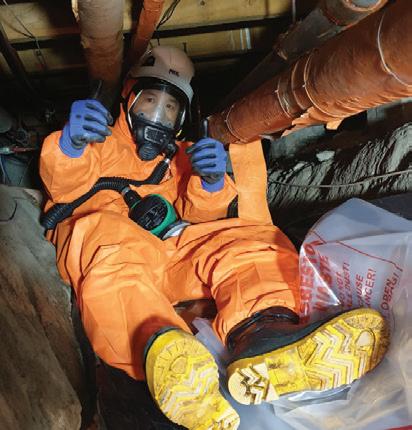


There is a big push by the MOE to increase the quality of information about where asbestos may be found in schools. However, it would be safe to say that all information may still take a few years to pull together.
What can you do to ensure the safety of your staff, maintenance people and of course the children?
Use the simple practice of “if you don’t know, then get it tested”. A simple test can go a long way to ensuring that the risk to exposure in minimised by following safe practises.
Organisations like the New Zealand Demolition and Asbestos Association are working with Work Safe New Zealand to increase the awareness programs for asbestos across the country.
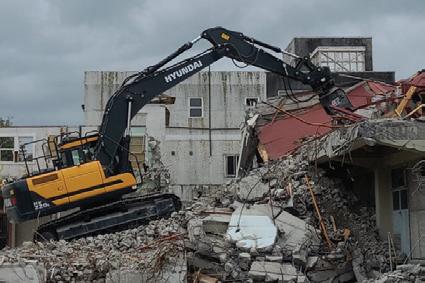
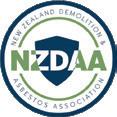
It is the responsibility of the PCBU to have the full

information for building that were built before the year 2000. Some of the common areas that we see asbestos in the school environment include: The exterior cement panels under the windows; the overhead soffits and entrances to rooms from the exterior.
It’s not unusual to have the larger roofs covered in corrugated asbestos sheets, better known as Super Six Roofs, and you can even find asbestos as part of the vinyl floors.
Additionally, there are over 700 boilers still at many of the sites around New Zealand, and if they are not in use, then there could be a good chance they will have to be removed in the coming years.
Remember, be safe and let the professionals take care of the potential risks.
By Robert Barton, general manager of ACM Removals.1. Identify if asbestos is present
Identifying asbestos or ACM in the workplace [WorkSafe] is the first step for managing asbestos exposure risk.
How to identify asbestos:

• If your building was built prior to 1 January 2000 it is likely to contain asbestos-containing material (ACM) and you could assume that your school building contains asbestos
• You could follow the WorkSafe Approved Code of Practice Guidance to identify what is likely to contain asbestos
• You could consider training your staff to better understand how to identify asbestos
• Or you can employ a surveyor to assess your building.


Where asbestos has been identified by a Surveyor or it is assumed to exist in a school, your
school needs to have an asbestos management plan in place.
2. Producing an Asbestos Management Plan
If you identify or assume the presence of asbestos in your school, an asbestos management plan is required. An asbestos management plan sets out how the identified asbestos or ACM will be managed.
You do not need to engage a surveyor to prepare your asbestos management plan. You can create your own asbestos management plan as long as you follow WorkSafe guidance.
All asbestos management plans must be in writing. They can be in hard copy or electronic form, as long as the legally required information outlined above is included.
If the condition of the identified or assumed asbestos changes then
you need to alter the Asbestos Management Plan accordingly.
3. Recording asbestos risks in your hazard and risk register
To ensure that any potential risks arising from asbestos are proactively managed, it is important that details are included in your school’s hazard and risk register and the information is maintained and updated. The hazard and risk register should detail whether any asbestos or ACM has been identified or assumed and if so, it should refer to an Asbestos Management Plan which will contain detailed information about the location, condition, quantity and monitoring plan for asbestos or ACM.
Ensure you monitor the area regularly and have a process in place in case unexpected asbestos is found.
You should provide the hazard and risk register to any contractors undertaking work within your school.
4. Communicating asbestos information
Ensure asbestos information, including the Asbestos Management Plan and Hazard and Risk Register, is accessible to staff and provided to all contractors undertaking work at your school.
5. Monitoring asbestos condition
You should schedule regular inspections of asbestos or ACM and record any changes to the condition in your Asbestos Management Plan.
Content provided courtesy of the Ministry of Education. For more information, visit: www.education.govt.nz.
If you’re looking for a specialised demolition contractor, with the expertise to safely remove and dispose of any asbestos, At Pace Solutions is the team for you. A great start to any refurb or construction project.
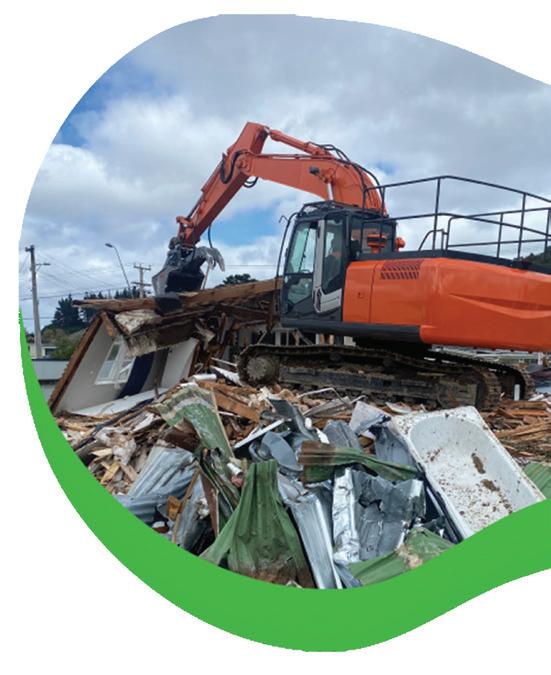

Libraries for Children and Young Adults are essential for information and development.
Our children’s libraries equip children with lifelong learning and literacy skills, enabling them to participate and contribute to the community.
Curriculum and class visits
Kete
Researching skills Childrens Services
Te Takeretanga o Kura-hau-po Te Awahou Nieuwe Stroom Shannon Library info@horowhenua.govt.nz 06 368 1953 tetakere.org.nz te.takere

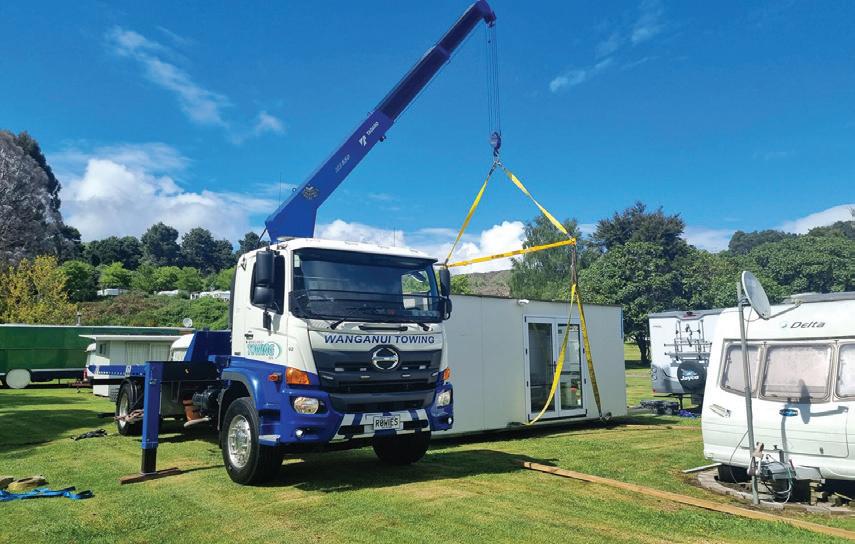

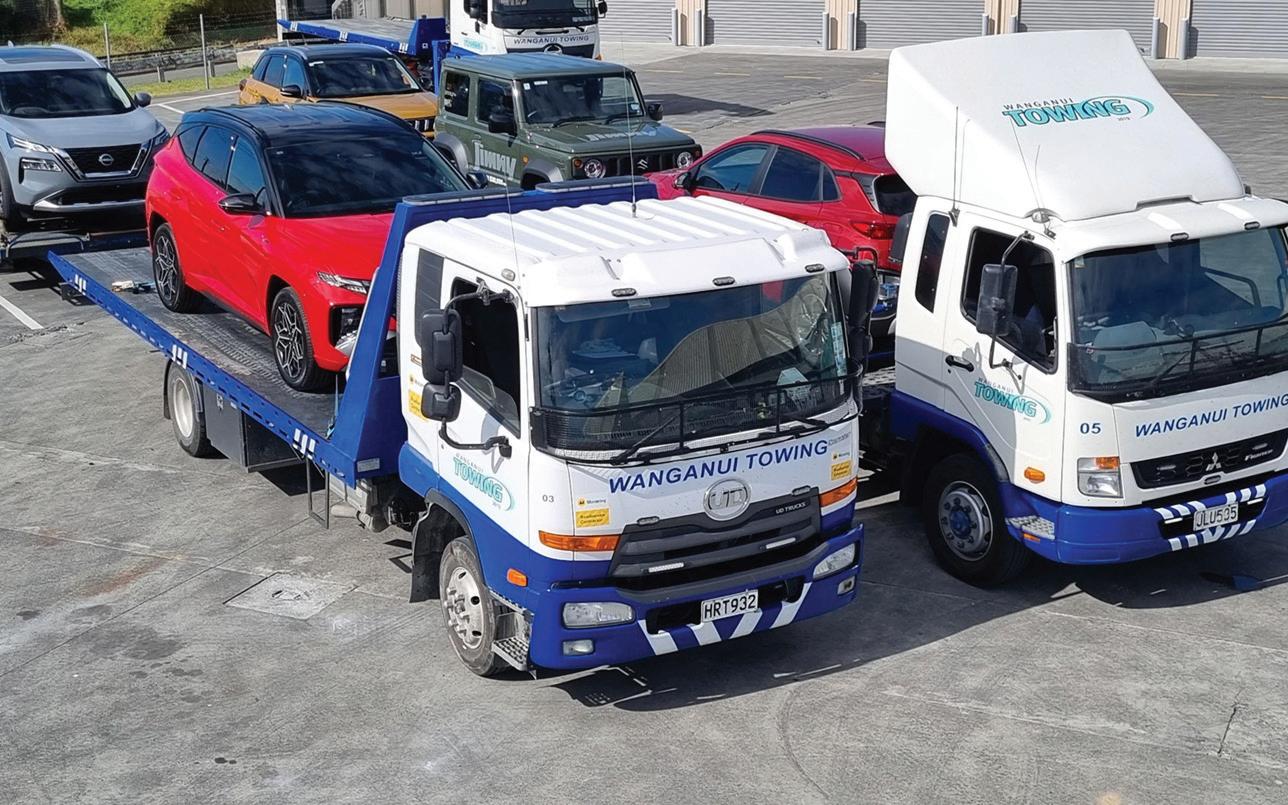

We are incredibly lucky to live in a country with stunning coastlines, some of the most beautiful lakes and rivers in the world and multitudes of public, school and home pools.
Water and swimming are in our DNA and it’s essential that we equip ourselves and our families with the life skill of swimming and water safety.
Learning to swim is not something that happens overnight. It’s a process. And repetition is key. Practicing the same skills repeatedly is important – it’s just like riding a bike, one day the skill you are practising will click and you’ll be off. We offer a free trial swimming lesson to all new customers, so that they can come along and meet us, get a vibe for how our swim schools work and we can ensure that swimmers are placed into the correct class for their skill level.
We are a New Zealand owned family business in our 50th year of teaching #lessonsforlife and are absolutely passionate about making sure all kiwis are competent and confident swimmers. It’s not just about getting to the end of the pool, it’s about having the strength and technique to get there… and then keep going. Strength and technique will help to ensure there is water safety for everyone.

We have four locations in Auckland, two in Hamilton and one each in Havelock North and Palmerston North.
We provide many schools with swimming lessons either at their own pool or our locations.
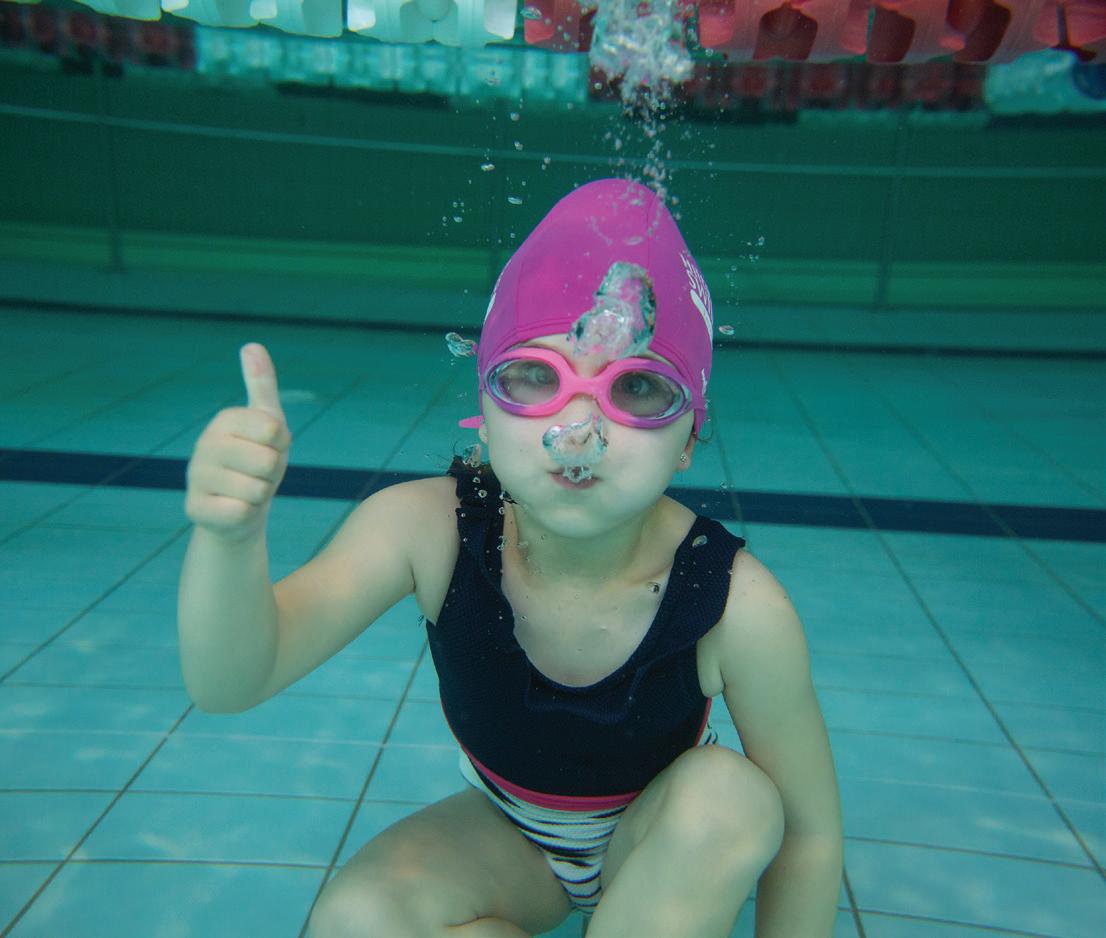
We offer lessons for infants from three months of age right through to adults who want to attend classes to learn to swim and perfect their technique.
For more information visit hiltonbrownswimming.co.nz
Our friendly Hilton Brown Swimming team look forward to hearing from you!


Made in New Zealand for over 30 years. EPOTEC pool paint has been formulated specifically for use in swimming pools and has a proven record in schools, domestic, large council and international theme park pools throughout Asia, Australia, and New Zealand.
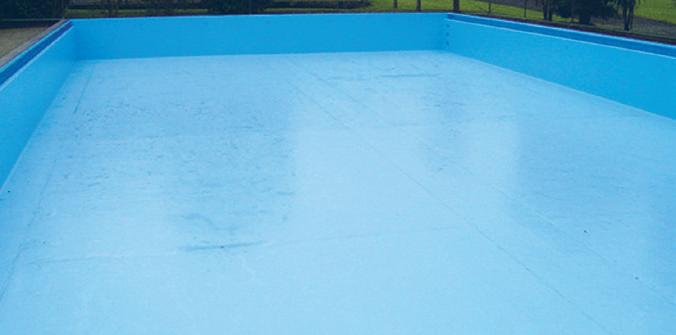


In our stunning backyard of Aotearoa, we are surrounded by the clearest and most breathtaking scenes of water.
Beaches are typically only a short 30-minute drive or closer from major cities, so learning to swim is vital. Starting swimming lessons from a young age saves lives.

Water Safety New Zealand says, “As an island nation in the south pacific, enjoying the water is deeply engrained in our DNA.
“Our ocean, coasts, beaches, lakes and rivers define us and reflect the people we have become. Water is life and in New Zealand, it’s our way of life.”
Through leadership, advocacy and education, Water Safety New Zealand works hard with individuals and the public to reduce drowning and water injury accidents in Aotearoa.
“Experiences in, or around the water are part of what we do and what makes us Kiwi. But sadly, drownings and non-fatal drowning accidents are all too common.”
Swimming instructor, Ester Hone-Moore, has more than 25 years of experience teaching swimming lessons and water safety to teachers.
“As a sector, we know we must learn how to float, and then work towards swimming distance. Water safety is more than just swimming strokes, it’s about learning how to recognise the dangers and gaining the skills to survive,” she says.
She suggests for teachers one of the main aspects to teaching water safety is having a layered voice approach with classroom lessons about the importance of staying safe in the water.
Let us help you with your school pool:
• Advise on preparation and repair
• Supply of the most appropriate paint system
• Latest Epoxy and Acrylic technologies to suit your needs
School pool maintenance can be a big use of resource so make sure it is done once and done correctly.
Call our technical experts on 09 837 0897 x 3 or find your local EPOTEC Approved Applicator at


Water Safety New Zealand has a mission that by 2025 more people in New Zealand will have a better understanding on the importance of respecting water. This goal also includes having the skills, knowledge and awareness to enjoy our water spaces safely.
Introducing children to water environments from when they are babies is important.
Water Safety New Zealand says that it’s exceptionally important for babies, infants and children to be nurtured around water by the people they trust.
The Ministry of Education (MOE) states that learning to swim is part of The New Zealand Curriculum.
“All children will have had opportunities to learn basic aquatic skills by the end of Year 6’. Students will have access to learning about water safety and developing aquatic skills.”
All schools and kura receive Ministry of Education funding to run their school and deliver the curriculum. The MOE says the funding can be used to manage a school swimming pool or instead support ākonga with access to lessons at a nearby third-party facility.
She says this can help students retain the information, as well as also covering the water safety code in depth. “Emphasis should be placed on really learning the water safety code about being prepared, watching out for yourself and others, being aware of the dangers and knowing your limits.”

There are many ways to create cross-curricular opportunities to incorporate water safety in the classroom. For example, discussing the ecology of a river, how riptides naturally occur or current event impacts on the environment such as climate change, can help students understand the bigger picture of water safety. The New Zealand curriculum notes that parents and whānau also play an important role in keeping children and young people safe beyond school.
Despite there being a good effort from MOE and Water Safety New Zealand about implying safe and correct water practices, families also need to contribute to their child/s education surrounding water environments.
Water safety skills are invaluable and will support children for the rest of their lives.
To find out more about the importance of water safety in schools, as well as resources and further support, visit: education.govt.nz.
When it comes to swimming pool paint, only time will tell!
The Lido Aquatic Centre is more than just a swimming complex, it is a complete leisure and fitness facility catering for people of all ages and levels of fitness.
The Lido emphasises water safety and the SwimMagic swim school provides lessons from babies as young as five months, through to school age children right up to adults, who want to learn the basics or to continue developing their techniques. The lessons run seven days of the week and learn to swim lessons are available during school holidays.
The Lido offers general fitness with a fully equipped gym where you can opt for a personal trainer to help with your fitness goals or join in on the group sessions that
run throughout the day. The indoor 25 metre and outdoor 50 metre pools are constantly in use for their Aqua Fit classes, which includes aqua aerobics and water Zumba.

Lido Aquatic Centre facility manager Lynden Noakes says, “These classes are great for people who prefer low impact exercises and really help to maintain fitness following injury”.

It also specialises in catering for school children with their Chill Out before and after school programmes along with their regular holiday programmes. The holiday programmes run each school holiday with various activities based at the Lido aquatic centre.
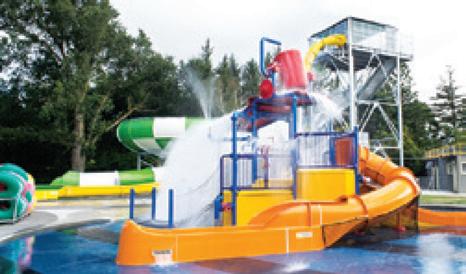
The holiday programme is divided into three age related groups; 5to 8-year-olds, 9- to 11-year-olds and 12+. Full days or half days are available and the programme is OSCAR and WINNZ accredited, so subsidies are available for parents who qualify.
The Lido has indoor and outdoor sports and leisure pools, a diving pool, gym, sauna, steam room, spa, and two hydroslides. Check the Lido Aquatic Centre’s website for more:
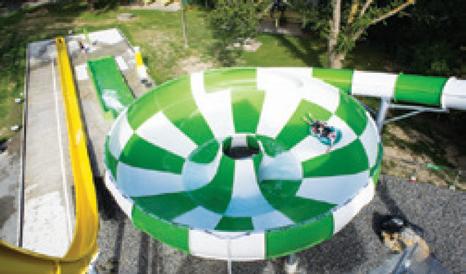
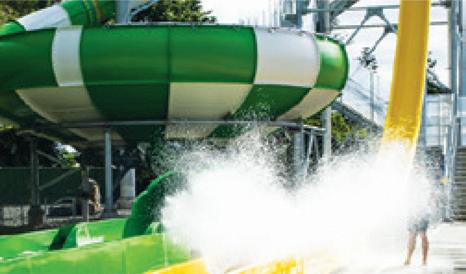
www.clmnz.co.nz/lido/

Maintaining trees and other plants around school property is a vital part of ensuring the safety of students and staff.
According to the Ministry of Education, trees need to be regularly trimmed. “If they get too big, the become costly to maintain and difficult to remove,” the MOE says.
“Large trees can also be a hazard in high winds and can block light and affect neighbours.”
It says trees can also be a health and safety hazard around a swimming pool.
“Remove trees close to the swimming pool to prevent leaves and branches falling in and contaminating the water, and prevent people trying to jump from the tree into the pool.”
However, some trees are protected and the local council or
Heritage New Zealand should be contacted regarding this.
According to the Department of Conservation (DOC), around 10-15 percent of the total land area of New Zealand is covered with native flora.
“Eighty percent of our trees, ferns and flowering plants are endemic,” DOC says. This means many trees in New Zealand are protected and could be on school property.
Trees, such as Pohutukawa, totara and kauri are part of this rule and, therefore, people ought to take care when dealing with the maintenance or removal of such trees.
Local councils will be able to advise on this.
The MOE says schools may also need resource consent for activities around protected trees such as excavating or digging, depositing material close to the tree, construction work, putting
in pipes or power lines or storing things under the tree.
The Property Maintenance Grant (PMG) can assist with costs around maintaining trees and such on school property.

It’s a grant provided by the ministry as part of operational funding. The fund is paid into the school’s bank account in quarterly instalments, along with operational funding.
The MOE says maintenance applicable for the grant includes
general maintenance and painting for school buildings, ground maintenance and swimming pool maintenance.
MOE states that the PMG covers general maintenance work on trees such as trimming and removing dead branches and the removal of a protected tree, providing council consent has been sought.
For more information, visit: www.education.govt.nz or www.doc.govt.nz.
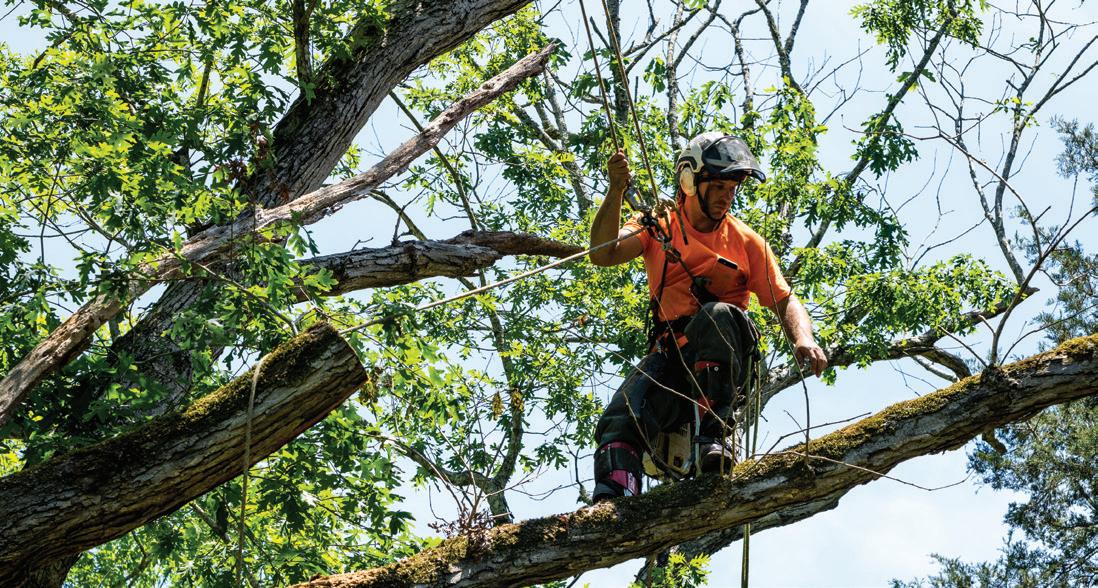


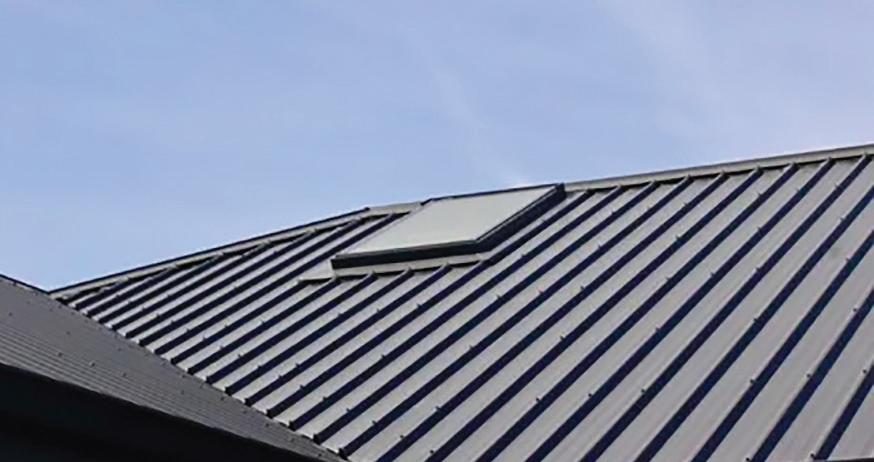
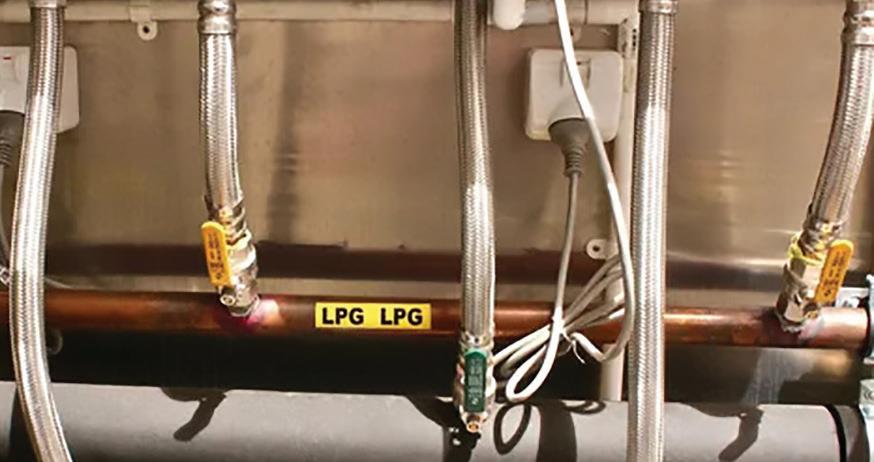

As the cold stats to bite, so do heating bills. Hence energy efficiency needs to be designed into both new buildings and existing buildings and systems at schools.

The most cost-effective time to improve energy performance is at the design stage of a new building. Consider energy efficiency in any building project, including an upgrade.
Look at the entire life cycle of products and building systems. You can then make decisions on which heating and cooling systems to use in terms of their whole-of-life cost.
Whole-of-life considers the costs and benefits of getting the best performance, reliability and safety over the life of an asset.
The best value for money might be in a high-performance building ‘envelope’. In this way, energy efficiency is incorporated in
every aspect of the building design. The aim is to reduce the need for heating and cooling as much as possible.
A number of New Zealand schools now have GreenStar ratings for sustainability. For more information about the programme and a list of accredited professionals, go to the New Zealand Green Building Council website: www.nzgbc.org.nz
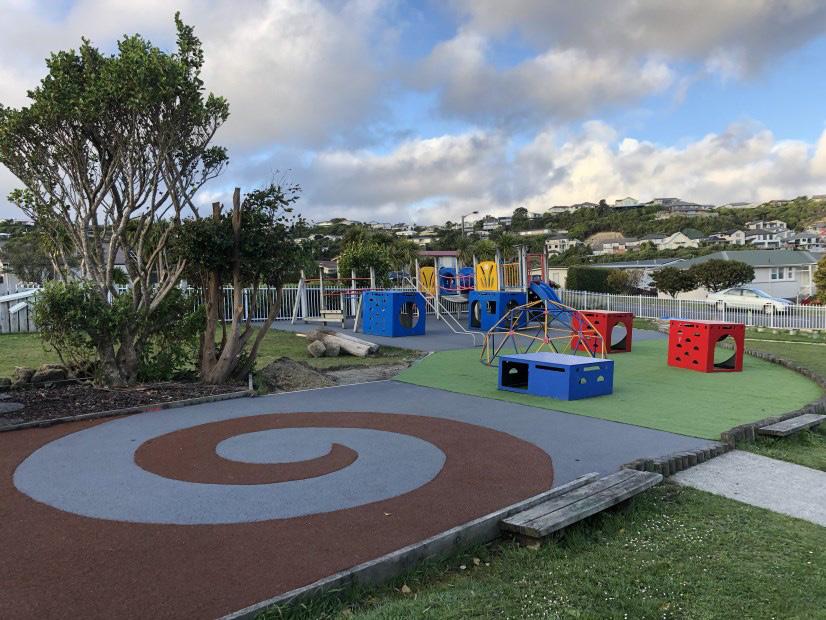
Many schools with boilers and central heating use coal. Generally, it’s a relatively cheap energy source. However, because of tougher local emissions standards and concerns about pollution and greenhouse gas emissions, many schools are considering replacing or decommissioning coal boilers. Switching to renewable wood energy may be a cost-effective alternative to coal. Most coal boilers can be converted to burn
wood fuel. It tends to be a costeffective option for heating the whole school. Although its costs vary by region, wood fuel has lower ongoing energy costs than natural gas or electricity.
Energy or building management systems are information technology (IT) systems and software that can completely automate the energy use of a building. They:
• Switch power to different appliances and areas of a building on and off as needed
• Work with heating, lighting, IT and other energy uses. A number of systems suitable for schools are available. Their upfront costs are quite high, but they can cut energy costs significantly.


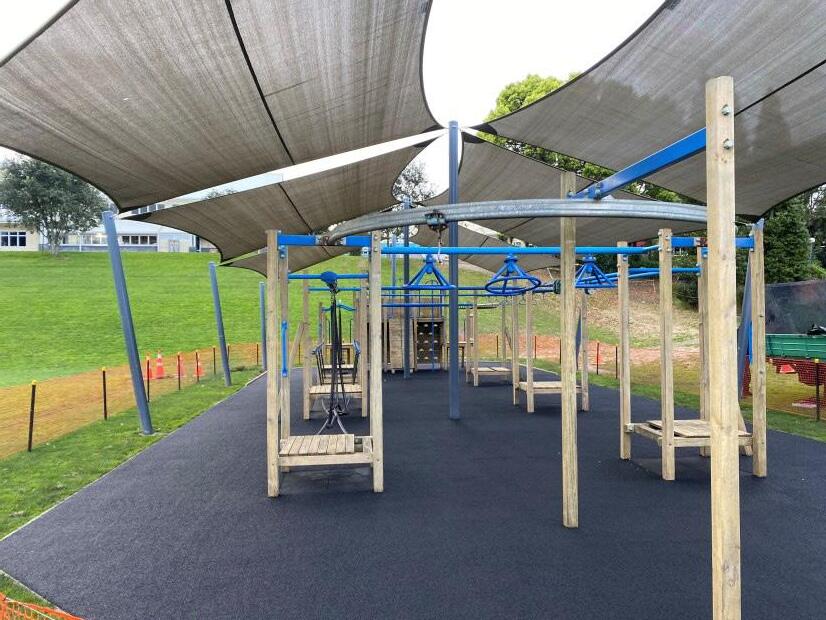
An energy manager or auditor can advise you on how long it would take to recoup capital costs through energy savings.

There are many small, low-cost things you can do to make efficiencies at your school. For example, one important thing is raising awareness, in particular, encouraging people to ‘switch off’. In most schools, heating takes up around half of all energy use. Some tips for increasing efficiency include:












• Ensuring windows and doors close snugly

• Making the most of passive heating by ensuring northfacing windows are clean
• Ensuring you have good insulation and ventilation
• Having a plan to insulate all rooms and double-glaze when you upgrade
• Using blinds to screen out sun in rooms that can overheat.
Information supplied courtesy of: www.education.govt.nz.
NON
RAMPS WE’VE






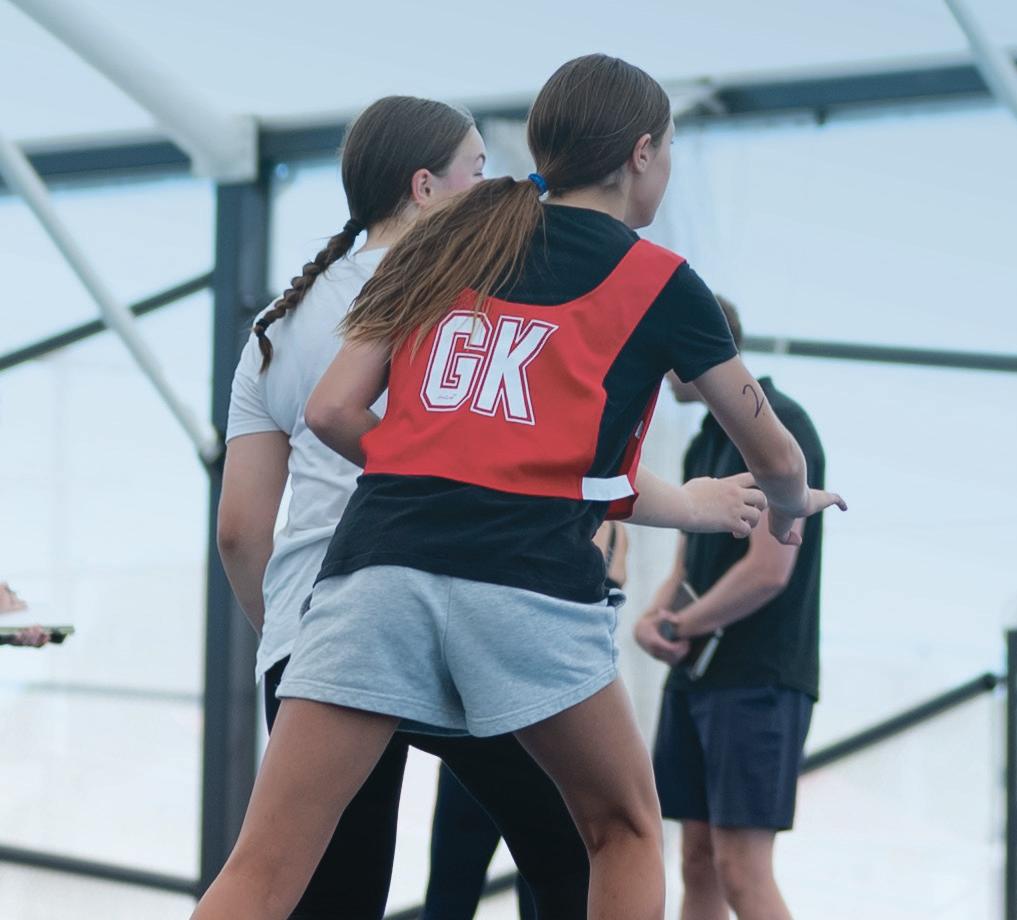




To ensu re your bi n get s emp t i ed and t o
a vo i d contaminatio n
o f rec yc l ing :
Keep items loose
Don’t squash bottles, tins or cans





Put all lids in the rubbish
Make sure everything is clean
Plastics numbered 3, 4, 6 & 7
No containers larger than 3L or smaller than 150ml




Soft plastics or any plastic you can scrunch into a ball
Takeaway cups and liquid cartons
Paper smaller than an envelope
Compostable items
Clothes and toys
Nappies
Polystyrene


Pans and foils
Window glass, crockery & light bulbs
Batteries
General rubbish or food.
Repeated contamination may result in withdrawal of your kerbside collection service.


Your RECYCLING bin is only for the following CLEAN items…Aluminium cans, tins, kitchen and bathroom aerosols Paper Flattened cardboard Rigid household plastic bottles and containers Glass bottles and Jars
The Waimakariri District Council offers waste minimisation and water management education programmes to schools, preschools and other early education providers throughout our District, facilitated by Enviroschools Canterbury and Eco Educate Ltd.

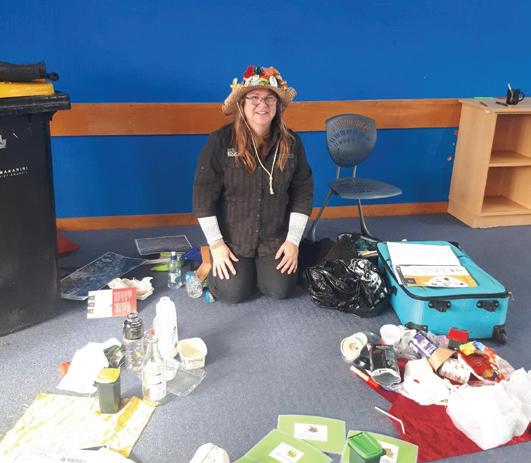
Some schools and preschools have chosen to join the Enviroschools programme, which is delivered in partnership with Environment Canterbury, and which takes the school - and the wider school community - on a journey to being more sustainable. They develop a vision of where they want to be, and plan a range of programmes and initiatives to get there.

These can include doing waste audits then setting up waste diversion systems, introducing waste-free lunchboxes, and so on; creating compost and using it on their gardens, where they can grow food for the school and even the wider community; installing rain-water capture systems to store water to irrigate their gardens; look at journey planning and seeing if they can cut down on use of cars to get to and from
school; planting more native and flowering plants on the school grounds to provide food and shelter for birds, bees, butterflies, and so much more.
All schools and preschools can call on the sustainability education contractor (Eco Educate) as needed to deliver tailored classroom sessions to their pupils, to facilitate a site tour to the Southbrook transfer station and resource recovery park, or to tour one or more of the Council’s wastewater plants, water supply sites or the Northbrook stormwater management area. The messaging of these sessions can be around the waste hierarchy (reduce, reuse, repurpose, recycle, recover and residual waste), water conservation, and what not to flush or pour into sewer or stormwater pipes or systems, or a combination of these.
The classroom sessions are tailored to fit the school’s curriculum needs, for example they can cover mathematics (waste audits help with counting, measurement and calculation of ratios), textiles (creating bags out of t-shirts or rag rugs from
old clothes, or repurposing soft toys), and persuasive writing (e.g. to ask companies to change their packaging type from an unmarked plastic to a recyclable material).
Eco Educate also provide help to design waste diversion and water capture systems in schools and preschools, and can also assist with finding materials for pupils to repurpose, up-cycle and reuse to build those systems. As an example, recycling crates or baths can be adapted for use as worm-farms, a desk can be turned into a community ‘seed swap station’, and plastic 200 litre drums and PVC piping can be used for rainwater capture and storage systems.

Information about these school education programmes, and advice about reducing waste in schools, can be found on the Council’s website at https://www. waimakariri.govt.nz/services/ recycling-rubbish-and-organics/ reducing-your-waste


The Council also provides additional recycling bins to schools that are located inside our kerbside collection areas, to help divert recyclable materials
from their rubbish bins, under the Assisted Recycling Programme for Schools. Application forms are available on request to the Council’s Solid Waste team at solid.waste@wmk.govt.nz
 Lesley Ottey from Eco Educate sorting out the waste
Worm farm made from a bath on a wooden frame
Lesley Ottey from Eco Educate sorting out the waste
Worm farm made from a bath on a wooden frame
Glentui Lodge is located in the beautiful setting of North Canterbury surrounded by native forest and within 50 minutes of Christchurch airport. Nestled among the terrain of Mount Thomas Forest, we offers guests a relaxing environment with a host of opportunities to interact with the great outdoors.

Glentui Lodge can accommodate up to 120 guests comprising of bunk accommodation or our Tui Wing rooms with standard beds; with an onsite games room, conference room, and a large hall as additional spaces for guests.
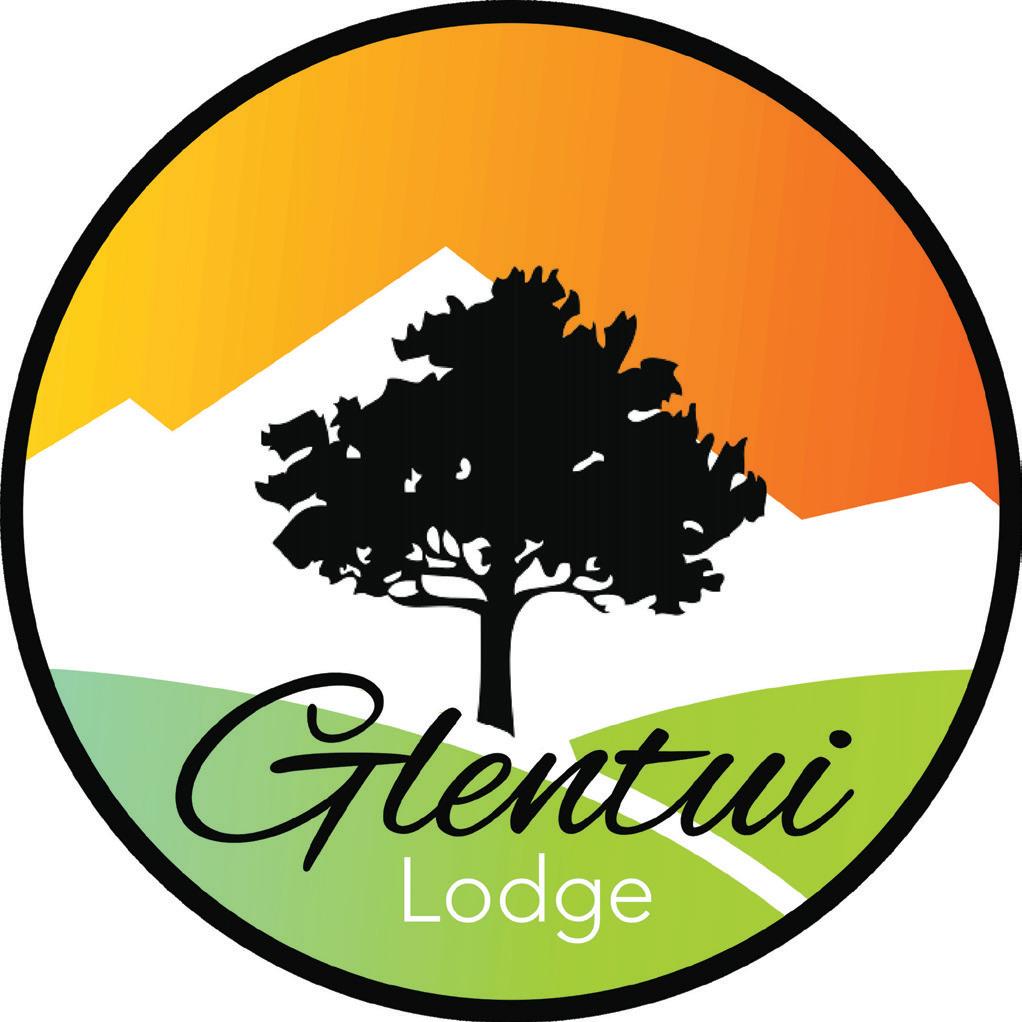






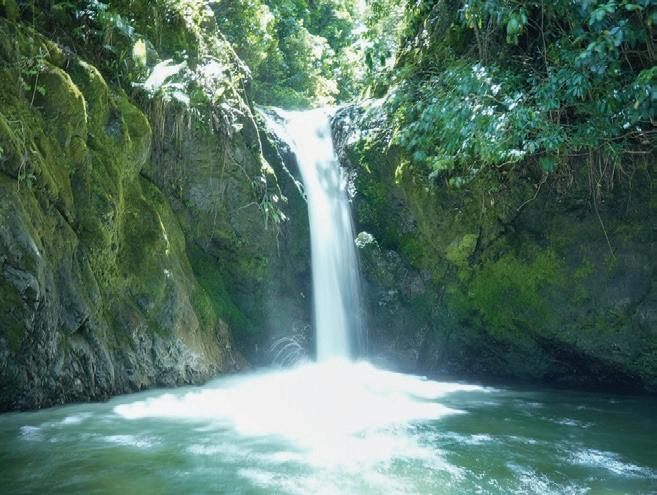


The inaccurate information within the article appeared in two places: a comment early in the article, and in six bullet points sub-titled: Standards include but aren’t limited to…
The incorrect statement was: “… these people need to legally follow these rules…”.
This statement is untrue due to the NZS5828 standard being a best practice guideline, not a legally binding regulation. However, it carries weight in the event of a serious injury or death.
Here are the six incorrect/inaccurate bullet points, followed by the corrected information in italics.
No reference of 500mm exists in the NZS5828, this should state >600mm Free Height of Fall (Fhf).
Equipment that is over 500mm needs a clearance of 1.9 metres of fall space around the equipment
Equipment with greater height than 600mm Fhf should have a falling space of min 1.50m. Equipment greater than 1.50m Fhf should apply the appropriate fall zone calculation to a max 3.0m Fhf and a maximum of 2.50m fall zone. 1.90m is not referenced by the NZS5828.
There can’t be any climbing equipment of any height that’s placed on concrete
At less than <600mm Fhf, equipment over concrete can exist.
Gaps between fence palings should be 100mm or less 100mm spacings within barriers, fences or balustrades would constitute a head and neck entrapment as per NZS5828:2015.1.D1 of the Playground Standard. 100mm is a building code reference and the NZS5828 for playgrounds supersedes this.

Obstacles on platforms should be no more than a metre
This statement is not correct and too vague to be used as a guideline for playground safety.
Any portable platform must have fencing if it’s over 1.2 metres
This statement is not relevant to school playground settings, as you cannot have portable platforms within school playgrounds.
Encouraging students to learn The action plan for Pacific education


P yg d b pp r h en e p r gn p c p a d k a d p ys ch g U t e p a und e h es vo d r a ve d us h m a h u nt j e b d y d a n p d e g a mp ce g s a u n n b c e gr d ac s e ac n po d op ta p y p g e ha y u po o a u a o e d b o g eo p a nd/ a pe n pe e r m e e W s e? w o p y s h a d y e be b de p n h en a -ch g n u a h e e g y p n b a d a o d t f nd mp y h N 28 S d m e f ne g n A
For information on playground safety standards, you can visit either the Ministry of Education: www.education.govt.nz, or Playsafe Consulting Ltd: www.playsafe.co.nz.

As publishers of the article containing these incorrect statements, we acknowledge that they may have mislead readers.
Therefore, Principals Today apologises unreservedly for any confusion or inconvenience the inclusion of this information in the magazine may have caused.
Certified NZS5828 P Has your playground bee inspected in the last year n pecti n by RPII L vel 3 Play Aud tor C mpr hen ve dgita epo d cum nt ud g r k rati gs d commenda o Ce tifi ate nspecti n Aud omp ant labe a fix d
A c edp ay nsp ctio pro des pro tha y u h ve met y r NZS5828 ob ga a d h a d ident f cati n Ou epo t pro des ssu anc hat haza on- omp an are den ed nd por NZS58282015 we l bef e fa u e nd ury De erab es


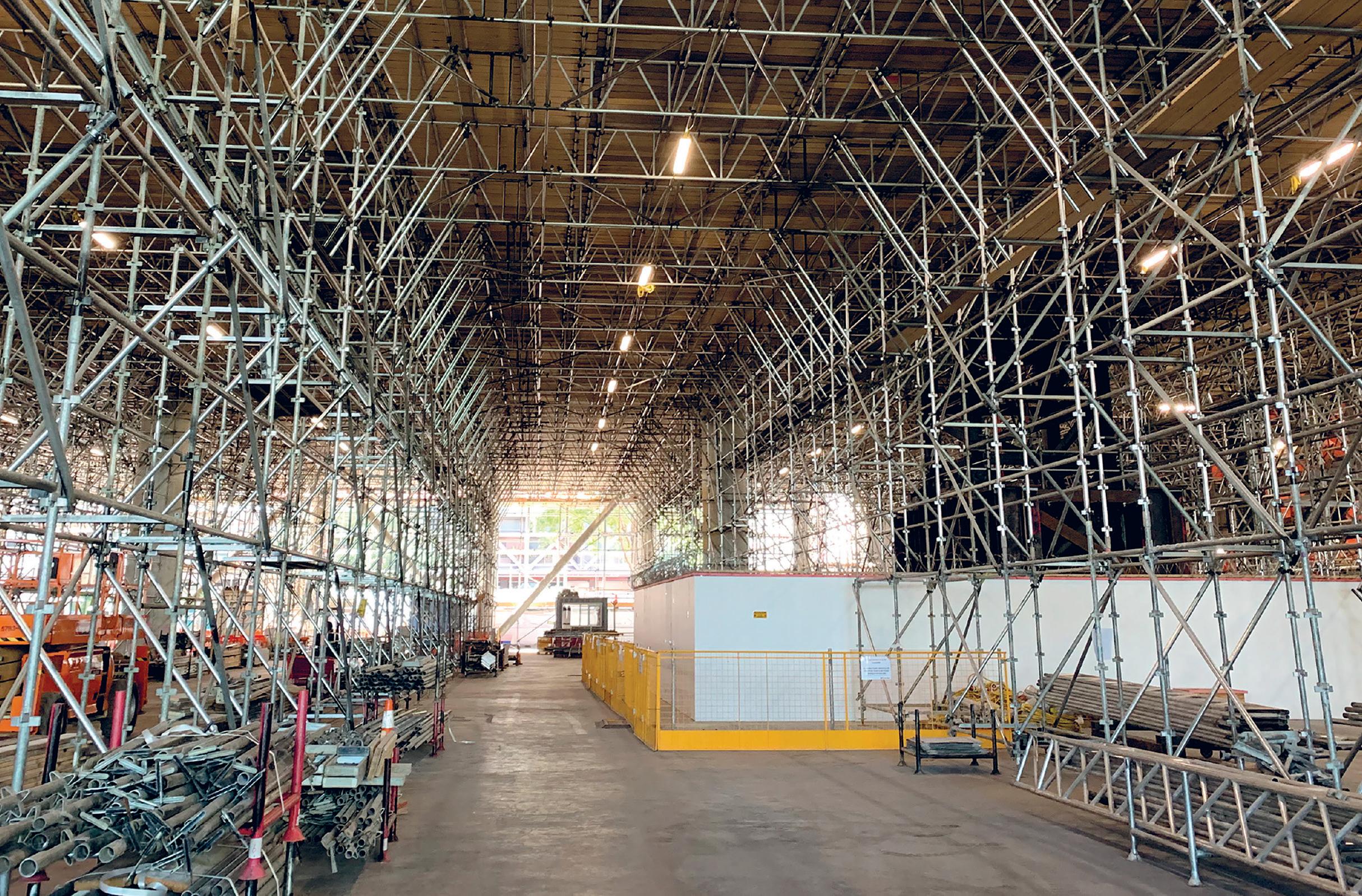

Auckland Scaffolding Company Summit Scaffolding Ltd knows the scaffolding industry in New Zealand is one of the best globally. Locally, there’s a company with offices in Auckland and in Hamilton Waikato, that is turning top-level heads into nods of approval. That company has an exemplary work safe record, and the high-profile calibre and scale of jobs completed for residential, commercial, industrial, and civil requirements is stand-out.


Multiple delivery options
• On Campus
• SIT2LRN Distance Learning
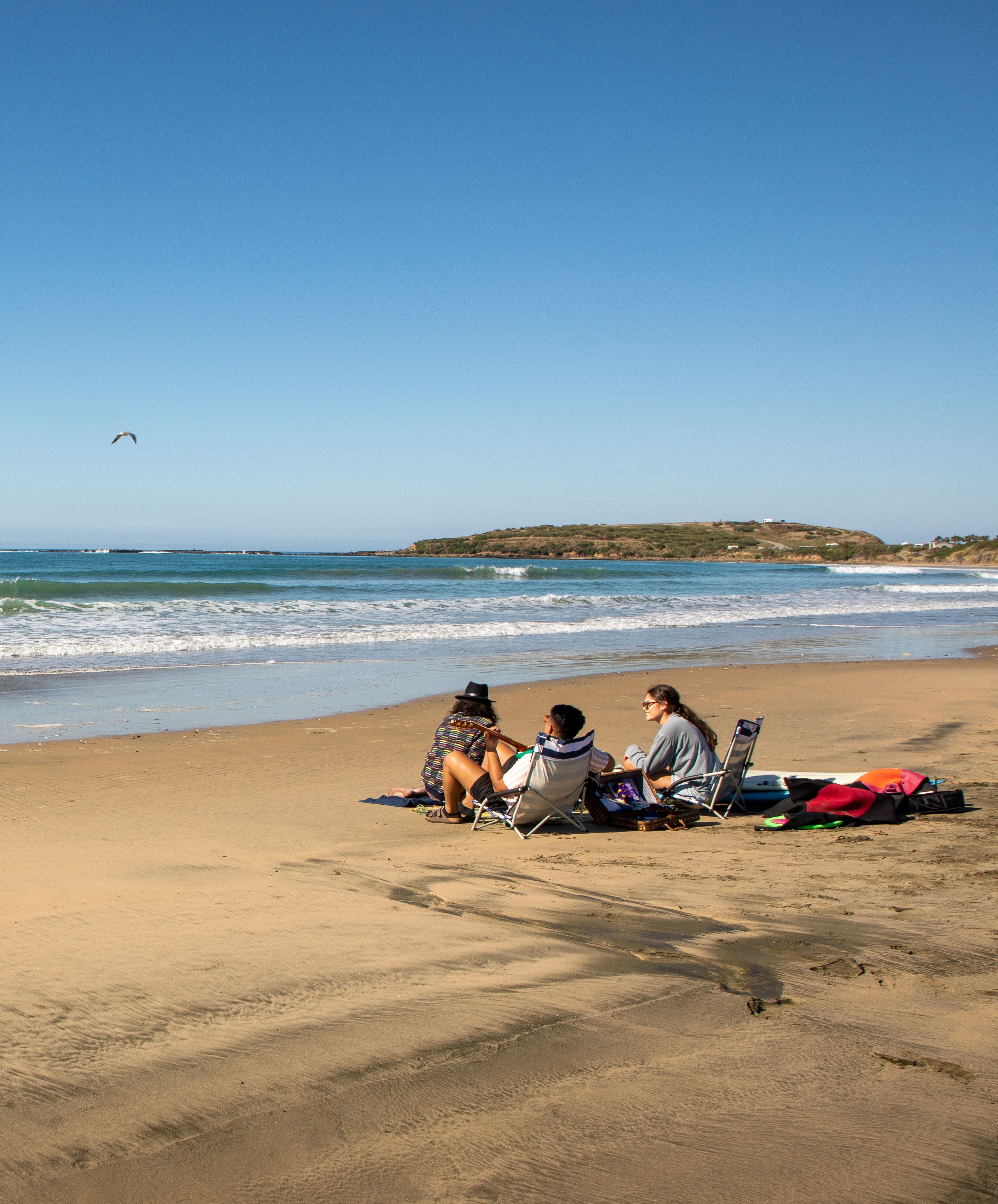
• Blended Delivery Learning
• HyFlex Distance Learning
Enrol now at sit.ac.nz
*The Zero Fees Scheme (ZFS) is currently approved for 2023 but may be subject to change without prior notice.